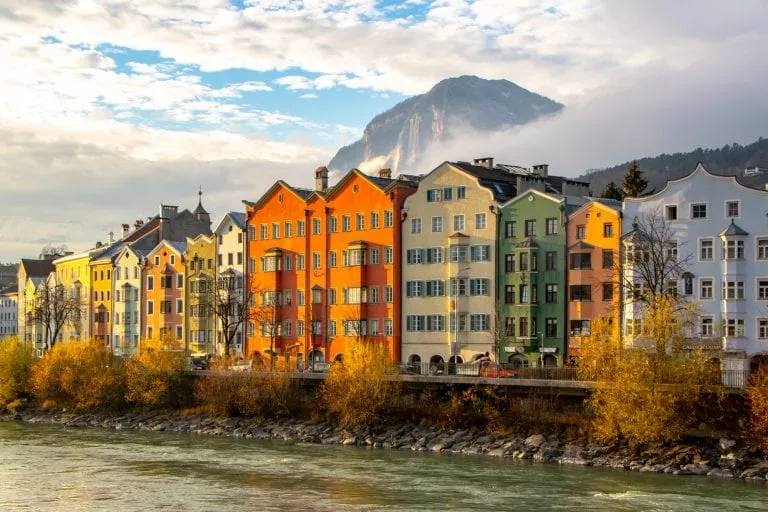

The Ultimate (Cozy) Packing List for Europe: Winter Edition
Growing up, I never thought of myself as someone who liked winter in the slightest–but then we packed our bags for Europe in winter and headed off to a world of Christmas markets, mulled wine, and snowy villages, and I realized that winter might just be one of my very favorite seasons.
Putting together a packing list for Europe in winter, especially for your first trip, is definitely a bit trickier than in other seasons. The best things to pack for winter in Europe tend to be heavier and bulkier than those you pack for summer (stating the obvious, I know)–and they also tend to come with higher price tags.
Plus, for those of us who, like Jeremy and I, grew in warmer climates, understanding what exactly you need to stay warm during winter in Europe is a bit of a trial and error process (seriously: neither Jeremy nor I owned so much as a peacoat until we were adults).
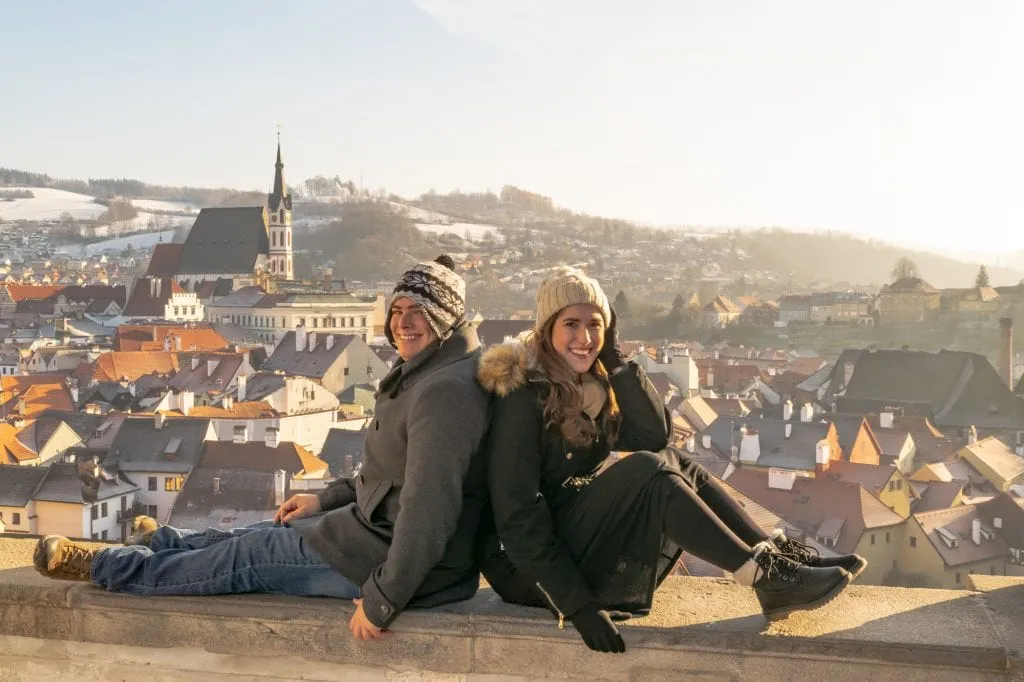
Some links in this post may be affiliate links. If you make a purchase through one of these links, we may earn a small commission at no extra cost to you. Please see our disclosure policy for more detail.
Learn from our mistakes experience with this packing list for Europe in winter: after many cumulative months spent traveling Europe during the winter, from the charming Christmas markets of Austria in December to the cold-but-manageable temperatures in Rome in February and beyond, we’ve definitely learned exactly what to pack for Europe in winter.
Here’s what we suggest adding to your packing list for Europe this winter.
Table of Contents
How to Use This Packing List for Visiting Europe in Winter
The absolute essentials for visiting europe in winter, travel gear you should definitely pack for winter in europe, packing list for europe: winter wardrobe for women, packing list for europe: winter wardrobe for men, other travel gear for your winter in europe packing list, important tips for packing for europe in winter.

Obviously, every packing list for Europe in winter will need to vary based on your exact trip–seeking out the northern lights in Norway will absolutely call for a different packing list than strolling through Christmas markets in Germany.
This winter packing list for Europe is designed for a trip that focuses mostly on cities and villages–think Christmas markets, snow-capped villages, and cold-but-surprisingly-empty-of-tourists cities like Paris and Venice.
If you’re planning a cruise to the Arctic circle or a skiing holiday in Switzerland, you’ll likely need to pack some travel gear not included here (also, please take us with you).
We’re more-or-less defining winter here as late November, December, January, and February–these are generally the coldest and darkest months of the year, and when we break out our winter packing list for Europe.

Passport — Good luck visiting Europe in winter without it!
Travel Insurance — We don’t ever suggest traveling without travel insurance–anything can happen on the road, and traveling abroad is definitely a case of better safe than sorry. We use and recommend Safety Wing for winter trips to Europe.
Visa (If Needed) — Though 26 countries in Europe are part of the Schengen Zone that allows many nationalities (including US citizens, Canadians, and Australians) to enter and travel freely between their countries for 90 days for tourism, that still leaves around half of Europe’s countries that are not part of this agreement.
Regardless of where you are from, always double-check entrance requirements before showing up at the airport to fly to any European country (and any country that isn’t your own).

Money — We recommend bringing two credit cards (one to use, and one to keep as a backup), and two debit cards. Ideally, bring cards with no foreign transaction fees. We’ve never felt it necessary to obtain currency before arriving (we just withdraw from an ATM when we get there), but you can purchase most currencies in your home country if it makes you feel more comfortable.
Keep in mind that not all countries in Europe are on the Euro, so be sure to double-check what currency you’ll need based on your itinerary!
International Driving Permit — If you are coming from outside the EU and plan to rent a car during your winter trip to Europe, you may need an International Driving Permit to do so! Italy is particular is well-known for enforcing this requirement. Be sure to check the rental requirements in any country that you plan to drive in before you arrive!

Camera — We recently upgraded to our Sony a7R III and absolutely adore it, but whatever camera you’re comfortable with works–just make sure you have something with you to preserve your memories!
Extra Batteries — The further north you are going on your winter trip to Europe, and especially if you’re headed to photograph things like the northern lights, the more likely you are to need lots of extra camera batteries. The cold kills batteries very quickly (and long exposures don’t help either), so come prepared.
Comfortable Day Bag — We currently use Pacsafe’s sleek anti-theft backpack and love it, but if you don’t want to shell out the cash for this trip, that’s totally understandable. Just aim for something comfortable to wear, not flashy, and medium-sized–we used a Northface Jester backpack for years and loved it as well.
Student ID — If you’re a student, you’ll be entitled to lots of discounts on museums and attractions throughout Europe. Be sure to add it to your packing list for Europe.
Cell Phone — We spent more than a year traveling without working cell phones, just relying on wifi… and while that’s completely fine, we would never go back. Consider purchasing an international plan for your cell phone (most carriers offer them), or, if you have an unlocked phone, you can just by a local SIM card once you land in Europe.

Deciding what to wear in Europe in winter will certainly be highly influenced by where exactly you’re going–but if you’re looking for an excellent base, all-in-one female wardrobe for Europe in winter, this is it!
I’ll be honest: if you’re headed to southern Europe, you can probably get away without packing some cozy thermal tops and leggings–I always have, anyway, with the exception of my trusty fleece-lined leggings .
If you’re headed further north, though, you’ll definitely want to make sure you’re bundled up– this thermal set is a great option.

My personal preference is basically to live in dresses when visiting Europe in winter (and always, really), so I tend to pack a ton of them.
Layered with fleece-lined leggings , a thermal layer if necessary, a warm coat , cozy boots , and great accessories, dresses like this or like this work great for winter in Europe.
If you have room in your suitcase, consider bringing an adorable sweater dress along as well.
Maxi dress fan? Maxi dresses like this can be great for keeping warm during winter in Europe, but bear in mind that in snowy/icy/wet conditions, the bottom might get dirty and uncomfortable, so plan accordingly.
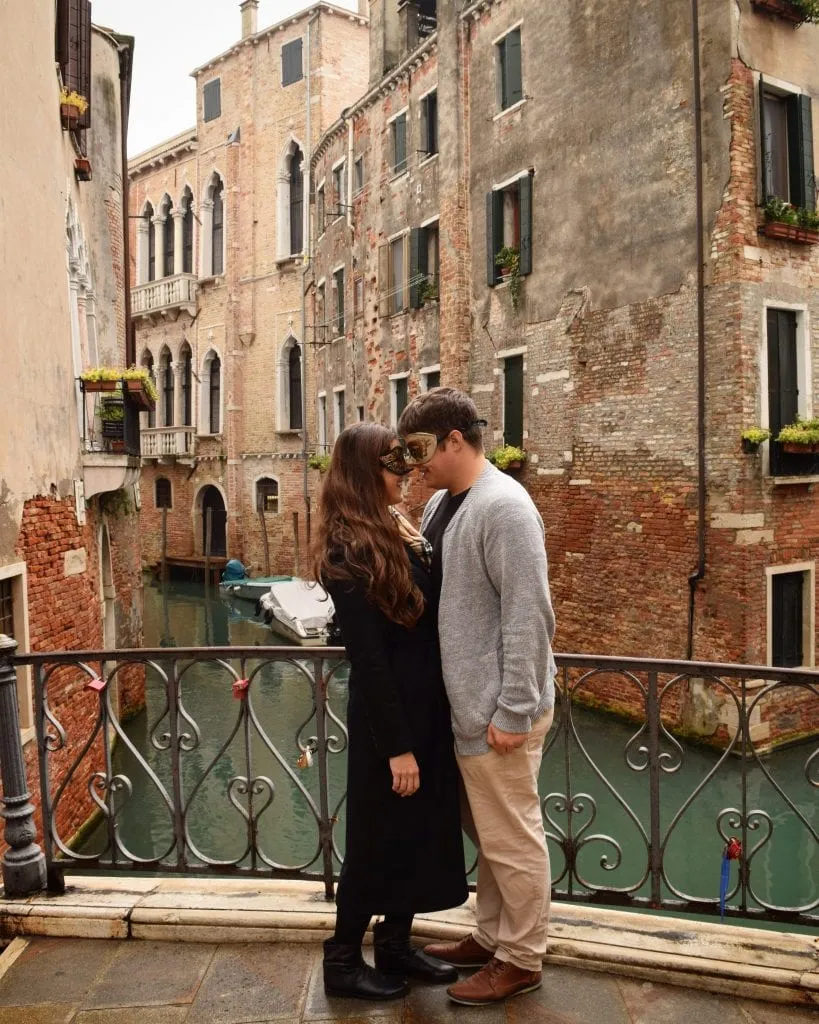
Thin sweaters like this that are easy to layer and cute tops like this are perfect for exploring Europe during winter.
A fun chunky sweater is a great way to mix things up, but to save space, we recommend only packing one, and only if you have space in your luggage.
I also love to bring my Northface fleece pullover along for travel days and to act as an extra layer when needed–I’ve had it for close to 10 years now and it’s still going strong.
A great pair of skinny jeans is essential when packing for Europe in winter–I’m obsessed with this pair –and thick fleece-lined leggings like these are excellent options as well.
If you prefer wearing pants, you might also like to bring an additional pair of jeans–black ones like these are a great way to mix things up.
If you like skirts, consider packing a cute skirt like this to layer with thick tights.

Waterproof Boots
A good, cozy pair of waterproof boots is incredibly important when putting together your winter packing list for Europe–more likely than not, you’ll wear them almost 24/7, so they need to be comfortable, functional, and fashionable.
I’m currently loving this pair , and something like this pair is another good option (mostly for non-snowy places, though–opt for something taller otherwise!).
Unless you’re planning a hiking or skiing trip–something where you’ll be out in nature with heavy snowfall–I personally feel that snow boots are overkill.
Of course, with good boots you need good socks–look for moisture-wicking wool ones like these to help counteract the inevitable reality of sweaty feet.
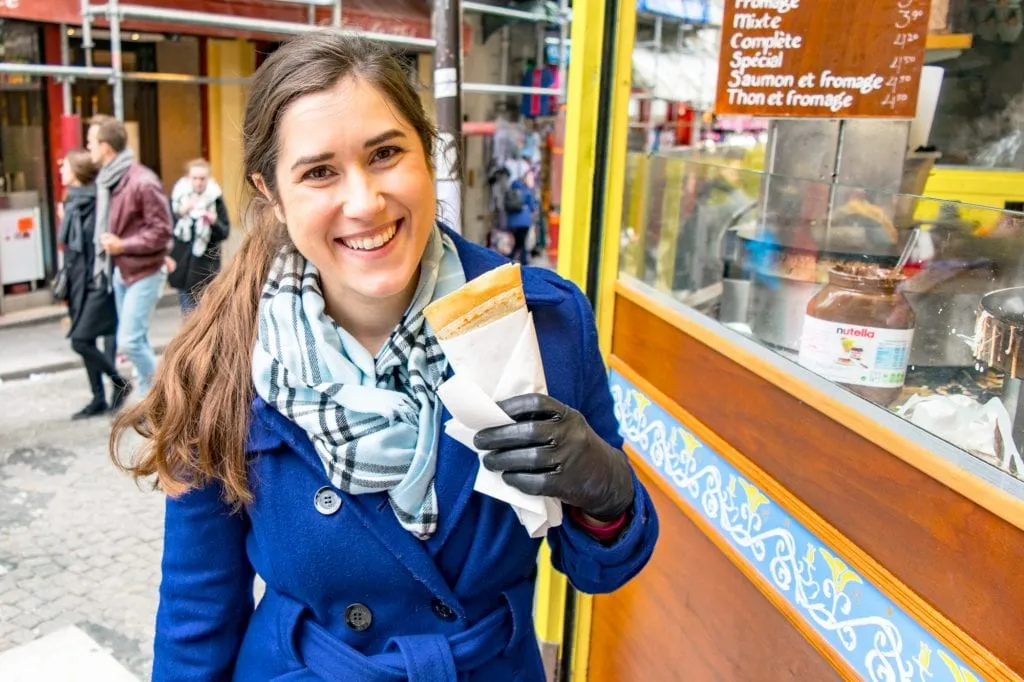
Your coat, along with your boots, is among the most important items to pack for winter in Europe.
Be sure to choose a coat that’s lined, and if you don’t pick one that’s waterproof (to be honest, I generally don’t, but that’s personal preference), be sure to throw in a travel umbrella and/or a rain jacket (I use this one ) as well.
If you’re sticking to southern or central Europe, something like this or like this is similar to what I generally choose and am comfortable in.
If you’re headed to northern Europe or you just tend to get cold faster than average, you might want to consider bringing a down coat like this –I can tell you right now that this would have been very cozy to walk around Vienna in last winter!

Bathing Suit
Seem counterintuitive to add a bathing suit to your packing list for Europe in winter?
Depending on your trip, it might be–but if you are headed to a hotel with a jacuzzi or sauna–maybe even one that overlooks a delightfully snowy mountain–you’ll be thrilled to have it along.
Accessories
Accessories during winter in Europe are absolutely essential.
Don’t start packing for Europe in winter until you’ve picked out a cozy hat , scarf , and gloves at the absolute minimum–and if you plan to take tons of photos when out and about in Europe (who doesn’t?) make sure that your gloves are touchscreen compatible .
I also love these boot cuffs for a little extra warmth and to mix up my look.
Also, fair warning: while you absolutely want to have the basics covered, don’t worry much about packing extra hats and scarves for your winter trip to Europe–that’s what all the markets are for.
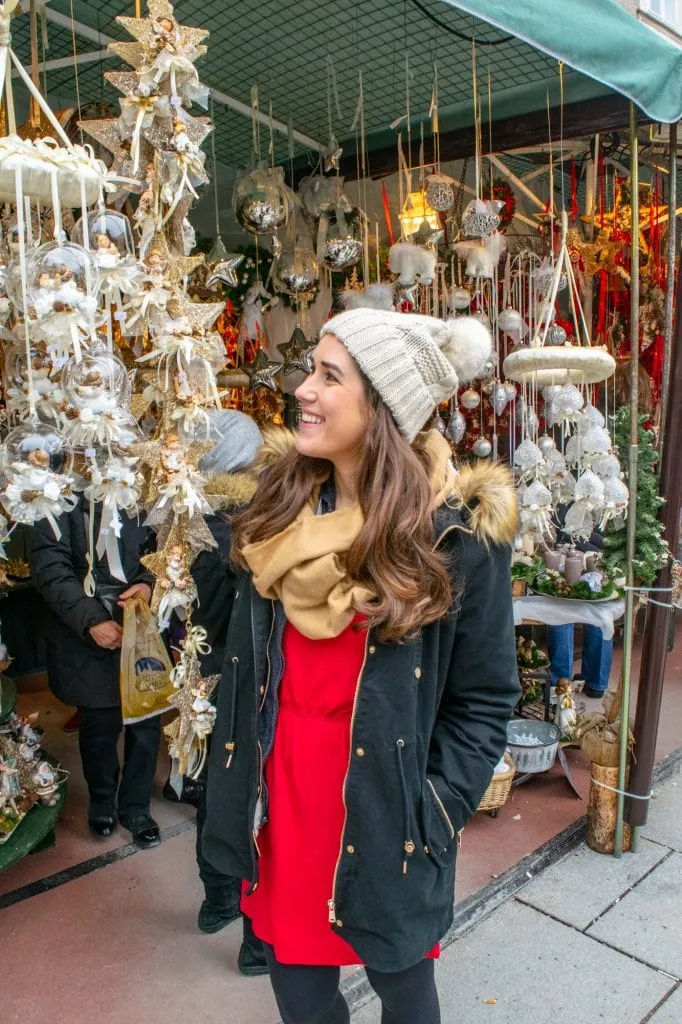
I don’t include these on our packing lists for Europe in any other season, because honestly, I tend to sleep in whatever is lying around more often than not, but hotel rooms in Europe during winter pretty much come in two categories in our experience: sweltering and freezing.
If you happen across the second, you’ll be thrilled that you took the time to pack some cozy pajamas for your winter trip to Europe–I recommend something like these (whimsical pattern optional, but highly encouraged).

As I mentioned in the female packing list section, you will probably be able to get away without a base layer in southern Europe most of the time–but if you’re headed further north, definitely be sure to pack a thermal set layer underneath your clothes!
Long-sleeved shirts like this and thin sweaters like this are both great options to add to your winter packing list for Europe.
If you prefer thick, chunky sweaters, you can certainly throw one like this in your bag, but bear in mind that they do take up lots of space and generally still need to be layered with other things.
Winter in Europe calls for a good pair of jeans like these . You’ll want to bring along some additional slacks or chinos as well.

A comfortable pair of warm, waterproof boots is essential to your Europe winter packing list–Jeremy is currently wearing this pair and loves them.
Be sure to bring along some moisture-wicking, warm socks as well–we suggest wool ones like these –to counteract the possibility (really, almost guaranteed reality) of sweaty feet.
If you’re headed to a hotel with a jacuzzi or sauna, consider throwing a bathing suit into your suitcase!

When deciding what to wear in Europe in winter, choosing your coat is among the most important items.
Choose something lined and very warm. If you’re traveling in central or southern Europe and layer appropriately, something like this or like this should work fine.
If you’re headed further north or plan to do a lot of outdoor activities in the snow, you’ll want to strongly consider a down coat like this .
If you don’t choose a coat that’s waterproof, be sure to bring along a travel umbrella and/or a raincoat when you go out.
While you should absolutely arrive in Europe with at least one of each, don’t worry too much about extra hats and scarves–extras can make cheap, fun, and easy-to-find souvenirs from your winter trip to Europe.
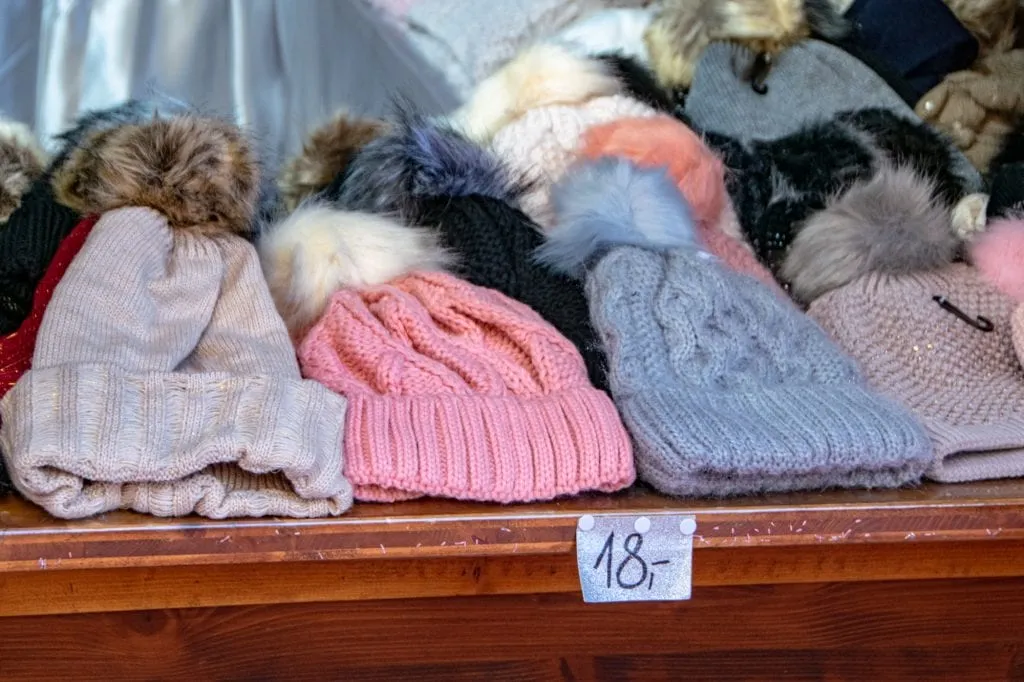
As I mentioned in the women’s section on what to wear in Europe in winter, we don’t tend to pack pajamas for most seasons in Europe–but if you happen across a particularly freezing hotel room, you’ll be incredibly glad you packed a set of cozy pajamas .
If you tend to prefer to stay extra warm when you sleep, consider throwing them in when packing your bags!
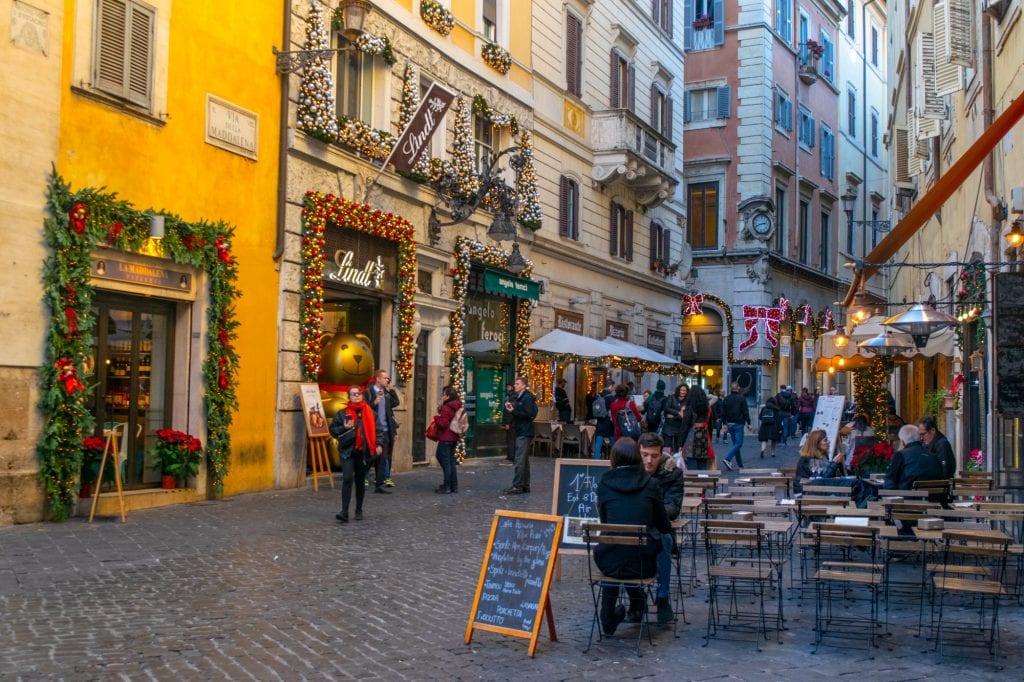
Moisturizer — Dry skin is a notorious problem when traveling in Europe in winter–be sure to bring a good face moisturizer (I’ve used this one for years and supplement with my Paula’s Choice products), and a good body lotion as well.
For lotion, we definitely recommend packing the kind that comes in a puck instead of a traditional bottle–it’s so much easier to pack and carry that way, and there’s no chance of the top of the bottle accidentally opening and damaging your clothes (definitely had that happen before).
Lip Balm — Trying to eat delicious, salty snacks at a European Christmas market with chapped lips is a special kind of annoyance–trust me.
Thermos — Look, this one is personal preference, but if you enjoy the luxury of sipping on a hot cup of tea at your leisure while walking through frigid streets as much as we do, consider adding a Thermos to your packing list for Europe this winter!
Basic Medication — Some people prefer to buy medication for basic headaches, fevers, and stomach aches as needed, but who wants to deal with language barriers when they’re sick? We’ve never regretted packing our own basic meds.
Check. The. Weather.
The weather in Europe–especially when we’re talking about an area as enormous and diverse as the entire continent –can be very unpredictable. The truth is, you won’t really know what kind of weather you’ll be dealing with on your winter trip to Europe until you get to your destination.
Take our trip to Dubrovnik this February, for example. Some days, I wore my winter coat. Some days, I wore this:
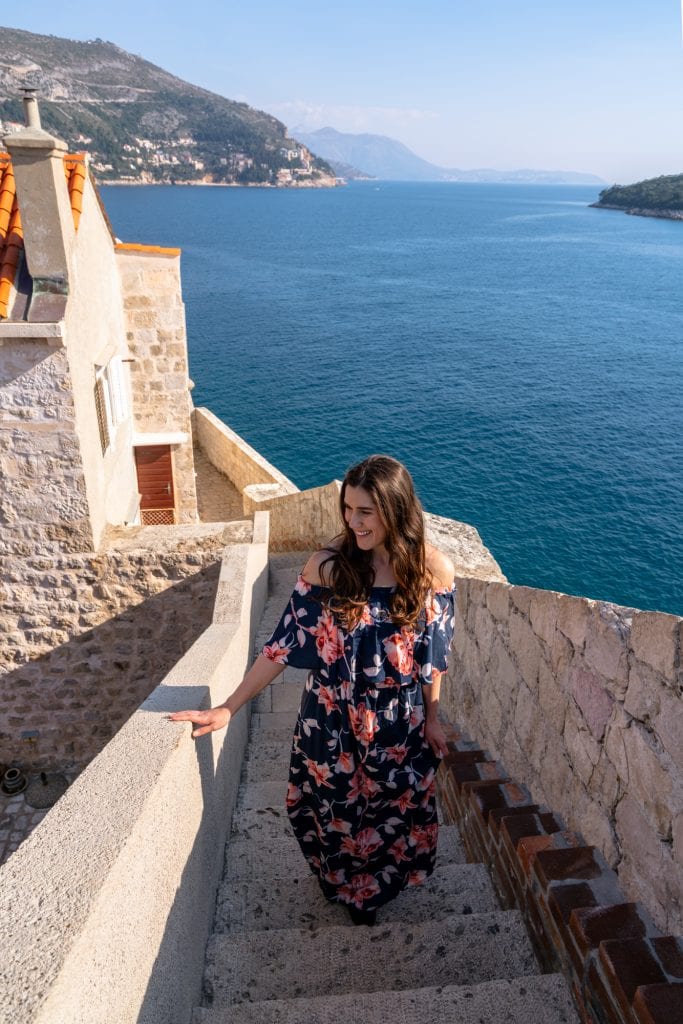
And sure, I had fleece leggings on under the dress and a light jacket with me to throw on when the wind picked up–but still.
The unpredictable nature of the weather only gets more dramatic if you’re in the mountains, so keep that in mind!
It’s all about the layers.
Layers will keep you warm and cozy while also saving room on your packing list for Europe in winter–chunky sweaters may look great (and if you love them, sure, pack one), but they also take up lots of room in your bag and still require layers underneath them to keep you appropriately warm.
Plan ahead: and seriously, that base layer I mentioned in the winter wardrobe section above is worth considering.
Keep the sun in mind.
Winter in Europe is characterized as being dark and gray, and the further north you go, the truer that is.
When making plans for your trip, keep in mind that there are times of the year where even in central and southern Europe you can expect the sun to set well before 5:00 PM.
If you have plans that depend on having daylight–like photos, for example–plan accordingly (and consider packing extra batteries and a tripod to get some great night shots–we took the below photo on a cold but glorious morning in Rome last February).

Pick a great coat, because it’ll be in all your photos.
I mentioned this above, but it bears repeating: there’s a reason that the vast majority of our winter photos from Europe show us in whatever coat we happened to have packed for that winter trip–it’s far too cold to bother taking them off!
Your coat will end up in just about all of your photos, so make sure that you pack one you truly love.
Personally, I have an enormous preference for coats that tie at the waist because I like to think that they help with the inevitable marshmallow effect of wearing tons of layers–but whatever makes you feel confident and excited to explore is the right coat for you.
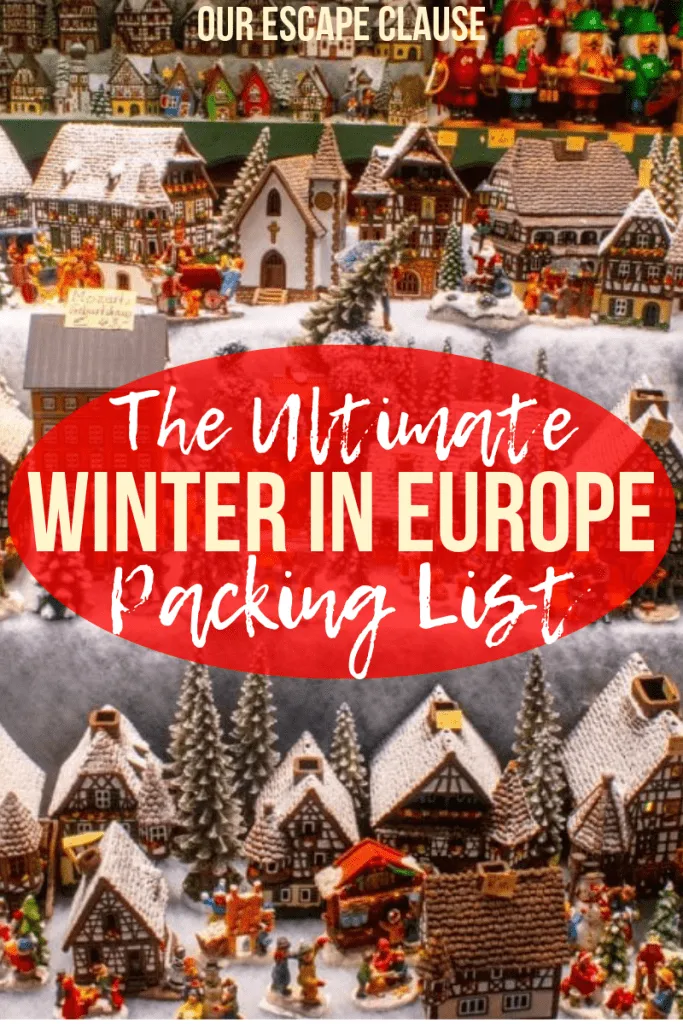
About Kate Storm

In May 2016, I left my suburban life in the USA and became a full-time traveler. Since then, I have visited 50+ countries on 5 continents and lived in Portugal, developing a special love of traveling in Europe (especially Italy) along the way. Today, along with my husband Jeremy and dog Ranger, I’m working toward my eventual goal of splitting my life between Europe and the USA.
8 thoughts on “The Ultimate (Cozy) Packing List for Europe: Winter Edition”
Thank you for the thoughtful in-depth write up and all the links! I was questioning bringing a few dresses, but you’ve made me feel confident they will work well for my upcoming trip.
So glad to hear it, Eva! Hope you have an amazing winter trip to Europe!
In your pictures at the beginning, what brand/type of boots are you wearing (the ones with white fleece material outside the top of the boots)? Thanks!
Hi Dre! Unfortunately, I don’t know, I bought them at a random shop in Budapest several years ago and don’t have them anymore. I loved them, though. 🙂 These days I’m mostly wearing my waterproof Ugg Kesey motorcycle boots to stay cozy!
Great insight into what I need to pack for Europe! Thank you so much x
Happy to help! Have a great trip. 🙂
Great write up which helped solidify my thinking. What about dress shoes for a nice dinner out eg Christmas Eve dinner and Christmas day lunch? I’ll be wearing a nicer outfit but not sure if my heavy duty day boots will look good . Any thoughts?
I’d imagine it depends a bit on personal style and what day boots you’re bringing! These days, I generally opt to pack one pair of very neutral black or brown boots that can be dressed up or down if I think I’ll need to dress up a bit. I wouldn’t necessarily bring a pair of heels or anything like that–probably more trouble than its worth.
If you’re going for a couple weeks or more, there’s also always the option of picking up a pair of nice shoes on the road and combining souvenir shopping with the convenience of carrying an extra pair of shoes at the beginning of your trip. I’ve done that once or twice, too!
Leave a Comment Cancel reply

Winter In Europe Packing List: The Ultimate Guide
Share this post!

Winter is one of my favorite times to travel to Europe, thanks to low crowds and the Christmas markets, but making a packing list for a trip can be difficult due to the weather.
The balance between staying warm and stylish is hard to find, but this packing list will give you the essentials for preparing for winter in Europe.
Below, you’ll find the essentials for visiting Europe in the winter, a complete list of what to pack, and what men and women can’t forget to have a great trip.
Last Updated: March 25, 2024
Published: January 21, 2024
Some links on this page are affiliate links , meaning I may earn a commission if you click the link or make a purchase through the link. This is at no extra cost to you. This compensation may impact how and where links are placed on this site.
✈️ Win a free 5-night stay in Aruba! Click here to enter . The giveaway ends on May 9, 2024 at 12:00AM PDT. Exponential Travels is not administering this giveaway.
Looking for more packing lists?
- Airbnb Packing List
- Barcelona Packing List
- Belize Packing List
- Cancun Packing List
- Caribbean Packing List
- Costa Rica Packing List
- Ireland Packing List
- Summer in Europe
- Thailand Packing List
- Winter in Europe
Table of Contents
Packing List Essentials For Winter In Europe

When traveling to Europe during the winter months, having all the essentials on your packing list will ensure you stay warm during your adventures.
Here are the essentials to pack no matter where you are going:
- Layering is vital – include thermal undershirts , long-sleeve tops, and sweaters
- Waterproof and insulated outerwear to protect against rain and snow
- Durable, warm trousers combined with thermal leggings or long johns
- Essential travel documents – passport, visas, travel insurance information, and any necessary health documentation
- Electronics suited for travel – a universal travel adapter , a power bank , headphones , and an e-reader for staying entertained in your hotel room or on transportation throughout cities or across countries
- Smaller, often overlooked items such as lip balm , moisturizer , and travel-sized toiletries to combat the harsh winter weather
With these items, you will stay warm and comfortable inside and out.
Complete Packing List For Winter In Europe

If you’re looking for more than just the essentials, here’s a complete Europe packing list for winter to ensure you have everything you need without overpacking:
- Thermal base layers: top and bottoms for insulation against the cold
- Mid-layers: fleece or wool sweaters and cardigans for added warmth
- Outerwear: a waterproof and wind-resistant coat or parka
- Socks: wool or thermal options to keep your feet warm
- Sturdy boots: waterproof and comfortable for long walks
- Hats , gloves , and scarves : essentials to protect against biting winds
- Travel documents: passport, visas, insurance, and important addresses
- Electronics: smartphone , charger , travel adapter , and power bank
- Personal items: toiletries , medication, and a first-aid kit
- Daypack: for carrying essentials while exploring cities
- Travel towel: quick-drying , like a microfiber towel , as it’s useful in various situations
- Sunscreen: yes, even in winter, the sun can be strong
- Lip balm and moisturizer : to prevent dry skin in cold conditions
This snapshot is perfect for printing or keeping on your device for a last-minute check. Remember, this is a starter kit; you might need to add or subtract items based on the specifics of your trip, including the duration and the activities you’ve planned.
Gender-Specific Considerations
When crafting a European winter packing list, it is essential to consider gender-specific needs to ensure comfort and practicality. The packing list below considers the differences in men’s and women’s travel essentials, providing tailored advice for each.
1. Packing For Winter In Europe For Women

Here are the essentials women should bring when traveling to Europe in the winter:
- Thermal leggings or tights – for warmth under dresses or pants
- Long-sleeved tops – versatile pieces for layering or wearing alone
- Insulated and waterproof boots – stylish yet functional for wet or snowy conditions
- Wool or cashmere sweaters – chic and cozy options for colder days
- Scarf , beanie , and gloves – fashionable and functional accessories to combat the chill
- Supportive, comfortable footwear – suitable for long walks on various terrains
- Quality moisturizer and lip balm – to protect skin against harsh winter winds
2. Packing For Winter In Europe For Men
Here are the essentials men should add to their packing list for Europe in Winter:
- Merino wool socks : keeping feet warm and dry is crucial in colder weather
- Thermal base layers : perfect for retaining body heat under regular clothing
- Water-resistant jacket : a must-have for unpredictable weather
- Durable, insulated boots : essential for warmth and grip on icy surfaces
- Waterproof trousers : for wet days, especially when exploring outdoor sites
- Knit hat , gloves , and scarf : to ensure full coverage against the winter elements
- Leather or insulated shoes : combining comfort with a touch of European elegance
While functionality is key, do not overlook the importance of style, as Europeans often dress more formally than their American counterparts. Opt for darker, neutral colors that retain warmth and adhere to a classic aesthetic.
Finally, leave some space in your luggage for any additional items you may find necessary based on your specific itinerary and interests.
Enjoy Winter In Europe!

Winter is a magical time to visit Europe. Whether you are enjoying the Christmas Markets or exploring without the crowds after the holidays, you will have a fantastic trip.
Just don’t forget to pack all the essentials from this winter in Europe packing list!
Traveling to Europe soon? Here are all my go-to travel planning resources:
- Top travel credit cards
- SafetyWing for travel insurance
- Daily Drop for daily travel tips and tricks in one fun, short newsletter
- Booking.com for a huge variety of hotels, vacation rentals, flights, and more
- HostelWorld for the best hostels around the world
- Vrbo for vacation homes and rentals
- FareDrop and Going for cheap flight alerts
- Skyscanner for the cheapest flights
- Amazon for travel and packing must-haves
- Priority Pass for airport lounge access
- TripAdvisor for the top hotels around the world
Click for the top hotel deals!
Winter In Europe Packing List FAQs
What are the top items not to forget when packing for a winter trip to europe.
The essential items not to forget when packing for a winter excursion in Europe include a warm, insulated jacket , thermal layers , waterproof boots , a hat , gloves , a scarf , and moisturizing skincare products to combat the dry, cold air. Additionally, don’t forget travel adapters for your electronics and a reliable bag to safeguard your travel documents and valuables.
How Do I Pack Light For Winter Without Sacrificing Warmth And Comfort?
To pack light for winter while remaining warm, focus on layering. Select versatile items that can be mixed and matched, opt for thermal leggings or undershirts , and choose lightweight, insulating materials such as merino wool. Compression bags can also help to reduce the bulk of your clothing by removing excess air.
Are There Items I Should Buy On Arrival Instead Of Packing?
Depending on your destination, purchasing bulky items such as heavy coats or snow boots upon arrival may be practical, especially if they can be found at a lower cost. Similarly, basic toiletries and snacks can often be bought at your destination to save luggage space.
What’s The Best Way To Prepare For Europe’s Diverse Weather Across Different Countries?
The best way to prepare for varied weather conditions across Europe is by having a flexible packing list featuring items that can be layered. Waterproof outerwear is crucial for unexpected rain, while lightweight items that can be added or removed easily will help you adapt quickly to changing temperatures as you move between regions.
Privacy Overview
Privacy Policy - Terms and Conditions
- Skip to primary navigation
- Skip to main content
- Skip to primary sidebar
Backpacking Brunette
Because life is not meant to be lived in one place
The Ultimate Packing List for Europe in Winter
March 20, 2023 by Alex | Backpacking Brunette Leave a Comment
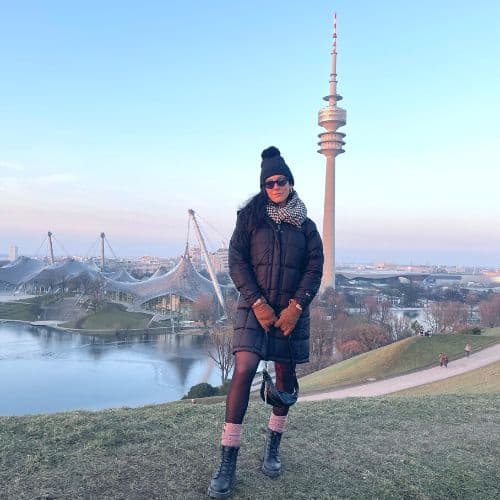
Find out the most important items for your European winter trip! Packing for cold weather is simple with this packing list for Europe in winter.
While the summer months in Europe get a lot of fanfare, a winter trip to Europe is tragically underrated.
From the magical Christmas markets to the fun-filled ski resorts, all European countries have something special to offer during the winter season.
However, if you’re going to enjoy your winter vacation in Europe, the most important thing is to pack properly for the weather conditions. If packing for cold weather feels intimidating, you’re in the right place 🤓
After reading this post, you will know:
- Best way to pack for winter travel in Europe (even if you don’t have a lot of space in your luggage)
- The best things to pack for popular European winter destinations like Christmas markets & ski resorts
- What to expect from the winter season in Europe (average temperature & weather conditions)
- Exactly what you need to include in your Europe winter packing list
Regardless of your itinerary, this Europe packing list will ensure you’re prepared for colder weather travel in Europe! Plus, this ultimate guide to includes tips to pack light so you can travel with less hassle–bring everything you need and nothing that you don’t.

This post may contain affiliate links. That means if you click and buy, I may receive a small commission (at no cost to you). Please see my full disclosure policy for details.
Packing List for Europe Winter & Packing Tips
Before we dive into the winter packing list itself, let’s go over some must-know tips to make sure you have all the warm winter clothes you need while still prioritizing pack light principles.
This section is especially important if you’re backpacking Europe during the winter or plan on visiting several destinations during your trip.
Many people avoid visiting destinations during the winter months because packing can feel overwhelming and they hate the idea of dragging around lots of luggage.
That need not be the case if you follow these packing tips for winter travel in Europe:
1. Pack clothes that you can layer.
The key to staying warm during your European winter travels is packing clothes that you can layer. Rather than taking up too much space with bulky sweaters and puffy pants, focus on packing items that you can layer.
Warm layers start with a breathable base layer for maintaining body heat without causing you to sweat. It’s a good idea to pay special attention to the type of material. Long-sleeve shirts like these are always great choices.
In colder weather, don’t forget your bottom base layer. Thermal long underwear is your warmest option, but in a pinch, I’ve layered up with running tights or regular tights.
For an extra layer on top, my preference is a zip-up hoodie. It’s perfect for layering under your winter coat outer layer. Additionally, warm accessories like a hat, gloves & scarf will make all the difference—plus, they’ll look festive in any photos you snap at the Christmas markets!
It’s a great idea to stick to a neutral color palette so you don’t have to think twice about whether or not something goes together.
2. Research the weather conditions for your destination(s).
Just like North America, Europe is a big place!
Please don’t make the mistake of thinking the weather will be the same in northern Europe AND southern Europe. There might be a lot of snow in eastern Europe while western Europe is having a wet winter.
The bottom line is you need to check (and keep checking) the weather forecast for the European countries on your travel itinerary.
It’s tempting to rely on a guidebook for average temperature and weather conditions, but thanks to climate change, the actual weather could be much different. Check the real time weather forecast for the most up-to-date information.
Still deciding on your itinerary? Here are some of the best places to visit in Europe in winter:
- Tromsø, Norway – Located in the north of Norway, Tromsø is one of the best places in Europe to see the Northern Lights. Plan your trip between the end of November and mid-January to see what a true polar night is all about.
- Dresden, Germany – Experience the oldest Christmas market in the world. The Striezelmarkt has been delighting visitors for more than 600 years. It’s open from late November until Christmas.
- Ischgl, Austria – For a bucket list ski trip, plan a visit to Ischgl. This ski resort village boasts some of the best slopes in Europe & the lively après-ski scene is legendary.
- Lapland, Finland – From glass igloos for watching the Aurora Borealis to reindeer rides and steamy sauanas, Lapland is one of the best places in Europe to enjoy winter weather.
- Berlin, Germany – The party doesn’t stop when the temperature drops. Winter is actually the perfect choice for a visit to Berlin since there will be fewer tourists to compete with when trying to get into the city’s legendary clubs.
- For even more inspo, check out this roundup by Fodor’s of 12 European cities that are even better in winter!

3. If you’re on the fence about an item, err on the side of not packing it.
Unless you’re planning a remote winter backpacking trip, you’re going to have access to stores and shops where you can buy anything you forgot or realized that you really do need.
Even when I’m traveling for an extended period of time, I prefer to only have travel sized toiletries (more on this in the toiletries section later on). When I run out of shampoo or toothpaste, I’ll pop into a local drugstore wherever I am and buy a replacement.
You might not find the same brand, but it can be a fun travel experience to discover and try new products.
If I need to upgrade my wardrobe (like I did in Berlin when I realized I needed a black tank top for clubbing), I set out on a mini shopping trip. Clothes make great souvenirs.
4. Stay organized with packing cubes.
I know what you’re thinking: Packing cubes? Really, Alex?
Trust me, I was right there with ya until the first time I had to pack for a winter trip to Europe. Determined to make the most of the space in my 30L Osprey Travel Backpack, I hit “add to cart” on these packing cubes .
The results blew my mind! Not only are you able to fit way more in your bag (hello, compression), but you’re so much more organized.
Prior to packing cubes, I was basically dumping out my whole backpack each and every time I needed to find something. Now, I dedicate each cube to a type of clothing–it’s so much easier to find stuff.
Regardless of what season I’m traveling (yup, even the summer months), I don’t think I’ll ever go without packing cubes again.
The Best Travel Backpack for Your Europe Trip
Here at Backpacking Brunette, we love–yep, you guessed it: BACKPACKS.
A backpack is the perfect luggage for year round travel but especially for winter in Europe. Who wants to drag a rolling suitcase through the slush?
The most important thing when choosing your travel backpack is buying the right size.
For my six-week Europe winter trip, I managed (with the help of packing cubes) to fit everything I needed into my 30L Osprey Travel Backpack.
If you’re packing for very different destinations (think city breaks AND ski resorts), you might want to upgrade to the 46L Osprey Travel Backpack.
- Read my FULL REVIEW of the Osprey Travel Backpack
Personally, the 46L Osprey is my max because anything bigger is too easy to overpack and gets too darn heavy.
Staying small forces you to think strategically about your packing list, but you’ve got this handy packing list to make sure you have everything you need and nothing you don’t!
The Ultimate Europe Winter Packing List
It’s the moment you’ve been waiting for: Let’s get to the Europe winter packing list.
To make things easier, I’ve divided up the packing list into essential clothing, must-have travel items and important toiletries.
The only way this list could be more organized is if I zipped it up into packing cubes!
Essential Clothing to Pack for Winter in Europe
Having grown up in Michigan, I thought I knew everything about winter clothes…
But, there’s an art to packing winter clothes–especially if you’re trying to pack light.
The key is focusing on quality materials that you can layer.
Even if this means spending money on some new items just for your trip, you will be so glad you opted to upgrade your winter wardrobe rather than trying to stuff a bunch of bulky sweatshirts into your backpack.
Winter boots – We’re starting from the bottom and working our way up! Comfortable footwear is vital for a successful Europe trip since (if your travel style is anything like mine) you’re going to be logging a lot of steps. For comfort, versatility & fashion points, I’m a big fan of chunky combat boots or for something slightly less military check out this pair with more than 10,000 reviews .
Warm socks – Not all thick socks are created equal. Avoid cold feet and opt for warm socks made out of a high quality material like merino wool ( like these ). Quality wool socks will keep your feet warm, not sweaty . Pro tip: Try your socks on with your winter boots in case you need to size up.
Regular socks – This is a good place to mention that you should try to avoid packing brand spanking new items. Whatever you plan on packing, give it a trial run first to ensure it’s comfy and functional. I generally pack 5-7 pairs of socks for a long trip.
Sneakers – A good quality pair of tennis shoes is a must for European travel regardless of the time of year. My go-to pair that I’ve worn for several trips now are the Nike Air Max . They’re a little pricy for sneakers, but the extra cost is worth it. These are the most supportive tennis shoes I’ve ever owned & they’re cute to boot.
Pair of jeans – Since they take up a lot of space, I only bring one pair of jeans when I’m backpacking Europe & they always end up being my most-worn clothing item. To make the most of your one pair, I recommend dark denim and a slightly looser fit.
Pairs of pants – When it comes to choosing pairs of pants to wear in Europe in winter, look for thicker materials that the wind won’t totally cut through. If you want to play it safe, stick to dark colors. Or, you can mix things up like I did on my recent Europe winter trip with some fun patterns: camouflage cargo pants and plaid bell bottoms.
Long sleeve shirts – If you skipped the section about packing clothes that you can layer, scroll back up–it’s important! A solid base layer is a long sleeve shirt made out of a breathable material like merino wool.
Tank tops and/or tshirts – These wardrobe essentials don’t take up a lot of space & in a pinch, they make a decent extra layer. I like an oversized graphic tee that I can also use as pajamas plus a simple black tank top for a night out.
Underwear – The max number of underwear I bring on even a long trip is seven pairs. Know that you’ll need to find a washing machine at some point, but if you’re ever in a pinch, you can wash a pair in the sink of your hotel or Airbnb.
Workout set – Given how heavy the winter cuisine is in some European countries, I like to tuck a sports bra, leggings and running shoes into my backpack. You’re on vacation, so by all means, enjoy yourself! And if you feel the urge to get a quick sweat sesh in, you have everything you need to do so.
Pajamas – If possible, try to pack items that you can wear both during the day and also to sleep. A solid option is a slightly oversized t-shirt and (unless you sleep really hot) a comfy pair of yoga pants that you can also wear during long travel days.
Light jacket – When I visited Ireland in early March, I was grateful to have t his lightweight waterproof rain jacket . Depending on where you’re visiting Europe in winter, you might be able to get away with a jean jacket + hoodie combo.
Warm coat – When it comes to a warm coat, go for functional before fashionable. I was so grateful for my North Face parka during my Europe winter trip. Trust me when I tell you that you’re going to want a warm coat that covers your booty! If you’re planning on partaking in winter activities that involve snow, it’s best if you have a waterproof jacket.
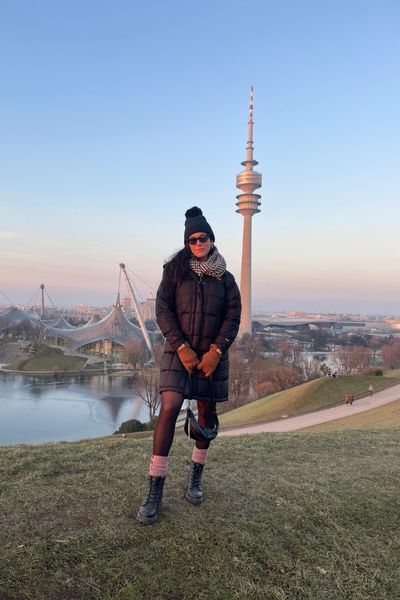
Extra Winter Clothes You Might Want to Consider
Your packing list will, of course, vary depending on which European countries you’re visiting, your planned activities and the weather conditions.
Here are a few additional winter clothing suggestions that you might to consider when traveling to Europe during this time of year:
Snow boots – If you’re headed to northern Europe to enjoy outdoor activities like seeing the northern lights, snow boots are likely a must. In case you’re new to winter footwear, the most important thing when choosing a pair of snow boots is that they are waterproof boots. Uggs (or other casual winter footwear) won’t cut it for long hours in the snow and slush.
Long underwear – For colder temperatures, invest in long underwear to serve as your base layer. Although ultimately I didn’t need it, when I was researching what to pack for ski resorts, many people suggested this long underwear to stay warm on the slopes.
Thermal shirt – Planning on spending a lot of time outside in a particularly cold destination? At minimum, pack a thermal shirt. I prefer ones with some compression if you’re planning on being active.
Bathing suit – Hear me out! If your travel itinerary includes destinations like Budapest with its famous thermal baths (an absolute MUST if you’re traveling in central Europe), you’ll want to have a swimsuit so you can take part in this beloved winter activity. Many ski resorts have saunas where you may want a bathing suit as well–although you’ll find many Europeans (especially Germans) prefer to go nude.
When in doubt about extra winter clothes for a specific destination, the best option is to wait until you’re there to buy anything additional.
For example, instead of carrying bulky winter gloves around with me, I waited until just before my ski trip to pick up a pair (not to mention, I was able to find a much more quality pair than anything that was available to me in my present home country: Mexico).
Non-Clothing Travel Essentials for Your Europe Packing List
When my Youtube subscribers and Instagram followers ask me for packing tips, I find that this is the section of their Europe packing list that they’re most likely to struggle with: non-clothing travel essentials.
While your non-clothing travel essentials are certainly some of the most important items to packs, people have a tendency to get bogged down…
It’s easy to go overboard with things that travel influencers and random TikTokers tell you that you need , but remember, you don’t want anything that will take up too much space in your travel backpack.
Travel backpack – My go-to travel backpack is the Osprey Porter 30L . It’s a manageable size for trekking up the stairs at train stations and storing in the small overhead bins on cheap Ryanair flights. If you need a bit more space, opt for the Osprey Porter 46L . Additionally, I suggest a small backpack for daily use. I like this one that folds up and you can hook to your main travel backpack when you’re not using it.
Packing cubes – I could kick myself for how long it took me to start using packing cubes. Seriously, just order these now and thank me later. I have the pink flamingo print !
Travel insurance – Especially if your Europe winter trip includes visiting ski resorts or taking part in other adventure activities, make sure you’re covered. I use World Nomads travel insurance.
Cell phone – These days this one is kind of a no brainer. You can use your cell phone in Europe (more on that in a second). Don’t forget a European adaptor to stay charged.
SIM card – You can purchase a local SIM card when you arrive OR (and this option is much easier) use the Airalo app to buy an eSIM. The code “EMILY9681” will get you $3 off your first purchase. Airalo is safe to use, and with data packs for 200+ countries and regions, it’s a total game changer.
Power bank – My fellow backpackers know the struggle of having to fight for an outlet at the hostel. It’s why I always travel with this power bank plus the lightning USB cord to charge my iPhone.
Credit cards – Remember to let your bank and credit card company know that you’re traveling. For withdrawing money while abroad, the Charles Schwab debit card is the perfect solution for avoiding ATM fees (get reimbursed each month). The checking account is free to open and doesn’t require a minimum balance.
First aid kit – We learned this one the hard way when my husband sliced his finger during our ski trip and the chalet had a fondue pot, 17 different board games and more fresh robes than we could have ever used but no first aid kit to speak of. At minimum, a ziplock baggie with different-sized bandaids and antibiotic ointment should get you by until you can visit a pharmacy.
Water bottle – In many European countries, if you order water at a restaurant, the waiter is going to bring you a bottle and they’re going to charge you. Often it’s more expensive than a glass of wine or beer! Fill this collapsible water bottle up with tap water which is perfectly safe to drink.
Do I need a money belt?
Almost everyone I know packed a money belt for their first trip to Europe, and not one of them ended up using it (myself included).
It doesn’t take up much space, but why bother? Instead, to keep your money safe:
- Bring a purse with a zipper (I like to wear a fanny pack crossbody-style)
- Keep your wallet in your front pocket
- Maintain situational awareness (this tip goes beyond keeping your $ safe)
Toiletries to Pack for Europe
This section of the Europe winter packing list is the most personal…I don’t know what all you need to look and feel your best!
I do, however, have a few must-have toiletries that you may not have thought of plus a few suggestions for how to pack light since that family sized shampoo you bought at Costco will take up entirely too much space.
Lip balm – A few days of European winter is enough time to chap the heck out of your lips. I love Lypsyl –a silky lip balm that’s apparently Swedish?
Face wash – This facial cleanser from Cerave is perfect to use both in the morning and at night . The bar form makes it great for travel & it can double as body soap. It’s super gentle which is ideal for dry European winters (harsh cleanser will leave your skin feeling tight).
Moisturizer – Speaking of dry European winters, this affordable moisturizer from Cerave contains ceramides, niacinamide and hyaluronic acid. It will keep your skin soft on even the most blustery day. Even though it says “PM” on the bottle, it’s so lightweight that you can layer it under your sunscreen in the morning.
Sunscreen – Just because you’re traveling to Europe during winter doesn’t mean you still can’t get a sunburn! I wear this La Roche-Posay sunscreen every day & it kept me sunburn-free while skiing in Austria plus it looks great under makeup or on its own.
Makeup remover – I like to keep my liquids at a minimum when I’m traveling since they’re heavy, prone to spillage and not carry-on friendly. My packing hack is to put a bunch of cotton rounds in a ziplock bag & squirt makeup remover into the same bag for them to soak up.
Shampoo and conditioner – These silicone portable travel bottles are leakproof and TSA-approved. Plus, they’re super easy to fill and refill.
Dry shampoo – Traveling in Europe during the winter months means you’re less likely to get super sweaty while out sightseeing. Embrace fewer hair washes and lean into dry shampoo life! My go-to is the classic Batiste which is available in a baby aerosol can that you can pack in your carry-on.
Makeup – For my makeup girlies and boys, take the time to really pare down your cosmetics. I only bring essential brushes and choose one palette for everyday wear.
A note about toiletries to pack for Europe
Especially if you’re traveling to a new-to-you country, you might feel stressed about running out of your usual products and having to replace toiletries on the road.
I’m here to tell you that shopping in another country is one of the most underrated experiences you can have while traveling. It’s a great way to see a city like the locals do and experience the culture.
Sure, mistakes might happen–in Germany, I accidentally purchased what I thought was lotion only to get it back to my Airbnb and slather it on my thigh to realize that it was, in fact, body wash.
But, it’s all part of the fun! Take your time, use Google Translate and think of it as part of the adventure.
Related Articles
- How to Travel Europe Cheap: 25 Money-Saving Hacks
- Backpacking Europe 101 (Plan Your Trip Like A PRO)
- The Ultimate Guide to Cheap Accommodation in Europe
Final Thoughts on Your Packing List for Europe Winter
Packing for a trip to Europe during the winter can feel like a monumental task.
It’s not something you want to leave until the last minute, and the more thought you put into what you’re putting in your suitcase the better.
You’re well on your way to thoughtfully-prepared luggage after reading this post. Bookmark this ultimate packing list for future reference, and don’t forget to share it with your travel buddy.
If you have any questions about the items on this packing list for Europe winter, please feel free to leave them in the comments below.
Or, if you have your own suggestions for items to include on your Europe winter packing list, let me know!
The winter months is one of the best times to visit Europe! Pack light & pack smart for your winter trip with this ultimate packing list for Europe in winter.
Reader interactions, leave a reply cancel reply.
Your email address will not be published. Required fields are marked *
Save my name, email, and website in this browser for the next time I comment.

Privacy Overview

- How to Use Points for Free Flights
- The Best Carry-On Luggage
- The Ultimate Guide to Traveling Like a Pro
- My Favorite Travel Credit Cards
- lake louise
- new orleans
- new york city
- palm springs
- packing lists
- product reviews
- How to Use Vitamin C Serum
- Easy Step-by-Step Skincare Routine
- Drunk Elephant: Best & Worst Products
- Fitness & Wellness
- How I Edit My Photos for Instagram
- Furniture My Interior Designer Loves
- Best Strapless Bras
- blogging & business
- Amazon Finds
- Hotel Lobby Candle
- Shop My Faves
- Promo Codes and Discounts
- Shop My Instagram

Packing List for Winter in Europe: How to Stay Warm & Look Cute

Packing for a trip to Europe can be stressful in general, but when you add unpredictable winter weather into the mix? Forget it. You’re left riddled with questions: what’s the temperature going to be like there? And how do I not overpack ? To help streamline the process, I created a detailed winter packing list for Europe that has everything you need to know. Below I’ll explain all about how to pack for a winter vacation in Europe, touching on the following categories:
- What European Winter Weather is Like
- Best Luggage To Take to Europe
- Cold Weather Clothing Guide / How to Layer for Warmth
- My Fool-Proof Winter Vacation Packing List
[Also: if you haven’t read my secrets to surviving a long-haul flight, be sure to check that out here .]
What to Expect from European Winters
Of course, the temperature and conditions vary depending on which countries you’re visiting. Some places will get lots of snow , and others will just get lots of rain. But one thing you can count on no matter where you’re headed in Europe over the winter? Freezing cold weather. (FYI the warmest European country during winter is Monaco, where it can get as warm as 50 degrees!) In popular destinations like London, Germany, and Paris, you can expect temperatures ranging from 45 degrees to 31 degrees, with the coldest and snowiest month being January.

The coldest European countries with the most snow are:
- Liechtenstein
- Switzerland
Best Luggage to Take To Europe
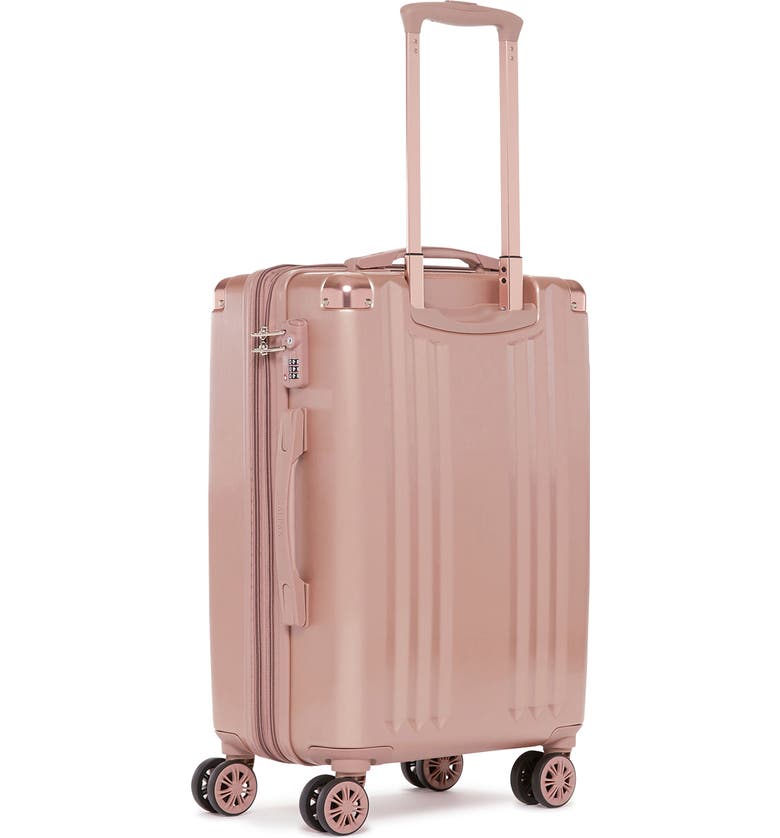
How to Layer for Cold Weather
My biggest piece of advice when traveling to Europe in the winter (or traveling anywhere that’s cold , quite frankly) is to wear layers. Layers give you options: you can be bundled up outdoors one minute, and chilling in a turtleneck indoors the next. The key to winter layering involves 3 main parts—a base layer, a mid-layer, and an outer layer.
BASE LAYER:
The base layer, of course, is the piece of clothing that you wear closest to your body. It’s the first thing you put on. An ideal base layer won’t just keep you warm—it will also help wick away moisture from your skin, ultimately making you feeling warmer.
Typically my “base layer” consists of:
- A warm long-sleeve top or turtleneck This one is so cute you’d never know it was a thermal top.
- Tights These lightweight but warm tights are a great and reasonably priced option.
- Leggings Thermal leggings will be your go-to. These are super popular.
- Socks These heated socks were recommended to me by a mountain guide during a recent trip

The purpose of your mid-layers is insulation—it retains the heat that is radiating from your body. But it doesn’t have to be unsightly. Since this is the layer that will be peaking out from underneath your coat, you’ll want to choose something that’s both cute and cozy.
In terms of fabrics, wool is excellent at keeping you warm, as are synthetic fabrics like polyester blends. For pants, any type of thick denim will do. Parts of mid-layers include:
- Denim, fleece-lined pants, or black jeans
- Sweaters : For my recent cold-weather trip, I got a TON of really cute sweaters here
- Fleece jackets : This highly-rated fleece from Nordstrom is affordable and cozy
- Flannel shirts : I love how this flannel button-down looks with a pair of black skinny jeans
OUTER LATER:
Finally, the outer layer (your coat!) defends and protects you from the elements—wind, rain, and snow. If there’s a chance of rain or snow at your destination, opt for a coat that is treated with a durable water repellent (DWR) finish. That way the water will bead up and fall off your coat, rather than soaking into the fabric. For a cute, cozy and budget-friendly option, I highly recommend this hybrid down ultra warm coat. (I wore it for a recent trip where the weather was below freezing, and it kept me warm the entire time. I love that it has a fleece-lined hood and fleece-lined pockets.
For more of a splurge, Canada Goose is obviously the holy grail in terms of the best cold-weather coats. This style is a favorite because the bodice is a bit more tailored and flattering (compared to some of their other coats that look wide and boxy.) You’ll find more of my top winter coat picks for a winter trip to Europe below.
Winter in Europe Packing List

Clothes to Pack for Europe in the Winter
- Long-sleeved shirts (base layer)
- Turtleneck or sweater
- Pants or denim
- Heavy Socks
- Bras and underwear
- Warm, comfortable boots
- Warm, long-sleeved pajamas
Accessories
- Winter hats
Essential Beauty Products For European Winters
- Hand lotion
- Moisturizer
- Sheet masks
- Check out my step-by-step winter skincare guide for more details
Detailed Packing List Breakdown
Obviously you need to wear something breathable as your base layer. Wearing a pair of thick tights or Spanx underneath your jeans will keep you warm and comfy.
- Spanx Sculpt Leggings
- Fleece Leggings
- Thermal Long Johns
For pants, pack something with a thicker material. Below are a few of my favorite styles of denim.
- AG Farrah High Waist Skinny Jeans
- Levi’s 501 Straight Jeans
- 721 High Rise Skinny Jeans
A classic turtleneck or crewneck sweater is a great option, because you’ll look chic enough for afternoon tea at Fortnum and Mason, but you’ll also be warm enough to brave the elements. Nothing keeps you toasty quite like wool sweaters. (The thick fibers are seriously reminiscent of a cozy blanket.) And while I typically love wool, I’m also a sucker for cashmere—especially if I’m headed somewhere fancy, like London or Paris. My favorites are:
- C by Bloomingdale’s Cashmere Sweater
- Cableknit Turtleneck
- Fleece Zip Up
For the more casual destinations (like skiing), heat-tech long-sleeve shirts are a dependable choice. So are turtlenecks. Uniqlo has the best selection of long-sleeved shirts. I love them because of their reasonable prices, warm fabrics and stunning color varieties.
What To Wear at Night in Europe in the Winter

Best Shoes for Winter In Europe
Forget cute flats or mules—for a winter vacation to Europe, you’re going to need boots. Luckily, there are a ton of great options that will keep you warm while also looking chic. Of course, depending on your itinerary, you might consider also packing something a bit more dressy, like over-the-knee leather boots or a pair with shearling lining.
These Nordic fur-lined boots from Sorel are fantastic. I’m also a big fan of these white, mid-calf boots by Columbia . Looking for more ideas? Here’s an entire guide to warm-but-stylish boots for winter .
Hats, Gloves, Socks, and Scarves
When the wind is blowing, you’ll appreciate bundling up under warm hats, gloves, and scarves. Another pro tip? Pick up a few of these toe warmers before your trip. I love tucking them into my boots whenever I’m skiing or exploring a European city in the winter.
- Wool beanies are always a great option—and they look super cute in photos.

- Be sure to stock up on toe warmers and hand warmers as well.
- This one is a best-seller.
Best Coats for European Winters
If possible, go for a coat that is treated to be water-resistant. Also: if you’re headed somewhere with wind chill, you’re definitely going to want a jacket with a hood. Here are my favorite coats for winter trips to Europe. I’m sure you’ll find one you love too.
Now you know everything you need to pack! When you are creating a winter Europe packing list, always check the weather a week ahead of time, and then plan for it to change. Winter can be unpredictable. Remember: layers are your best friend. What other vacations are you planning? Check out what to pack when you go on an African Safari and my beach vacation packing list for additional packing inspo!

You Also Might Like

The 10 Most Instagrammable Places in London

Four Seasons Bora Bora Review: Everything to Know Before You Book

The Only St. Barths Guide You Will Ever Need
Loved this post! Could you please share where your pink backpack is from? <3 Kayla
Leave a Reply Cancel Reply
Save my name, email, and website in this browser for the next time I comment.
The 13 Best Hotels in Miami
The best travel shoes for women.

The Ultimate Guide to Packing for Europe in Winter
Europe Packing List , Packing Lists , Travel Packing Lists
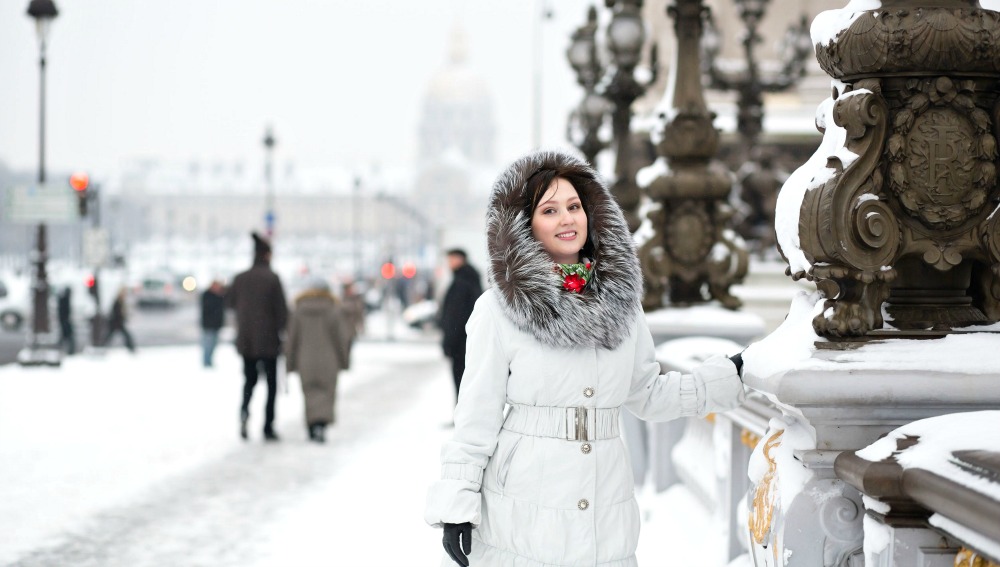
Support TFG by using the links in our articles to shop. We receive a small commission (at no extra cost to you) so we can continue to create helpful free content. We earn from qualifying purchases made to the featured retailers. Thank you, we appreciate your support!
Traveling to Europe in the cold winter season? Read our ultimate Europe winter packing guide, with fashion tips and travel tricks for a variety of countries throughout the continent to help you nail your travel wardrobe.
Packing for Europe in Winter
Table of contents.
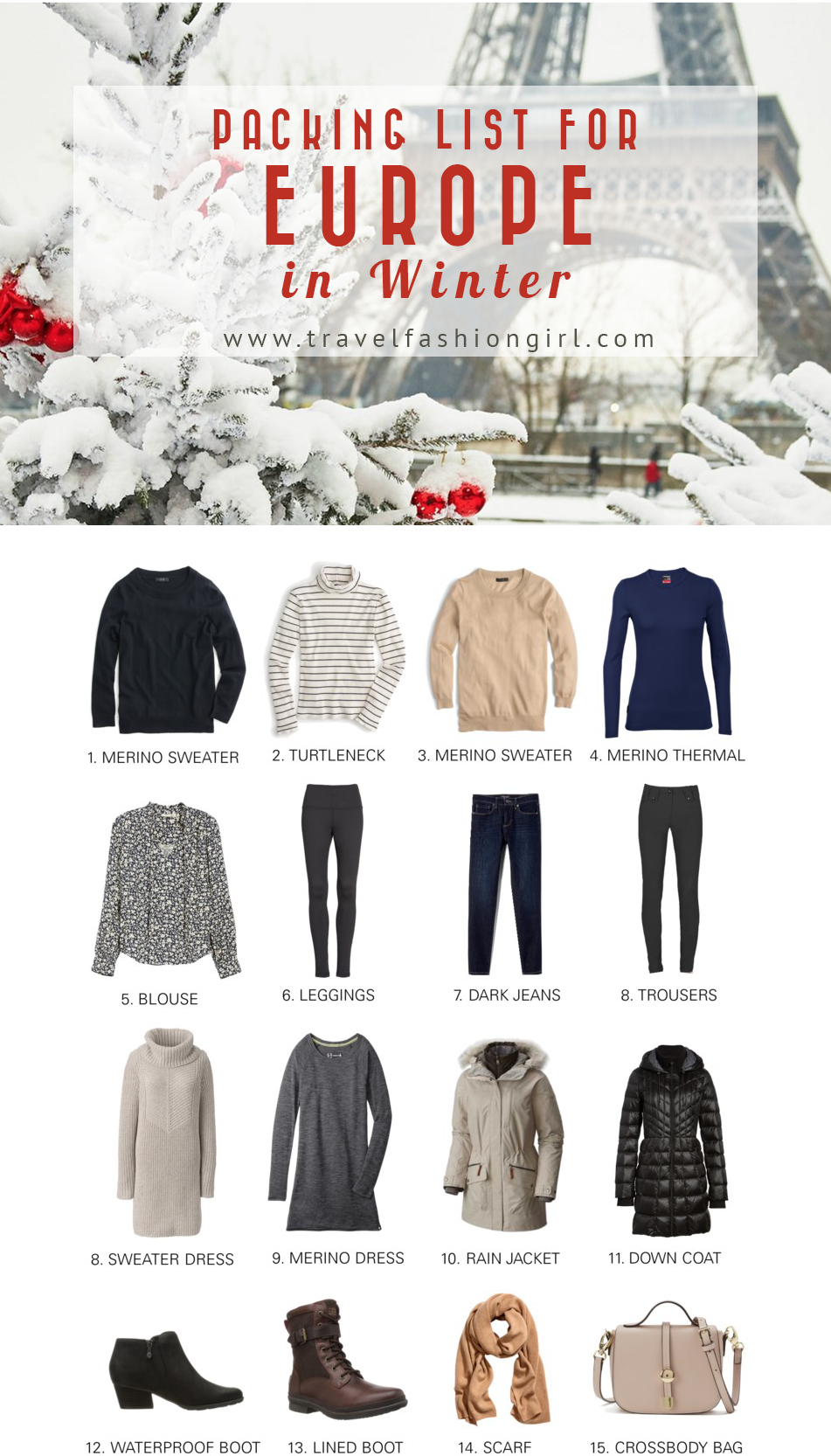
Europe can be an unpredictable place to travel to in terms of weather, and no matter what time of year you go, you could get sun or rain. It’s a huge continent with stunning and diverse countries, and vacations here can last from a weekend getaway to an entire year.
Winter in Europe runs from November to March and is generally damp and wet. However, you may be treated to warm weather in some southern countries.
Always, always, always check the weather forecast for each destination you will visit before your trip. Once you’ve researched the weather, you can focus on creating a travel capsule wardrobe , which should easily fit in a carryon suitcase with the help of packing cubes to compress your clothing.
No matter where you visit, you should always be prepared for changing conditions, using layers, umbrellas, and accessories to ensure you don’t get caught out in a sudden rainstorm. To help you plan, we’ve compiled our readers’ top tips for some of the most popular destinations.
But first, start by reading these general tips on packing for winter travel:
- Winter Packing List for Cold Weather
- Capsule Wardrobe for Winter
- How to Pack for Cold Weather
- How to Stay Warm in Cold Weather
- The Best Travel Shoes for Winter
Traveling carry on only? Here’s how to pack for two weeks in Europe in winter !
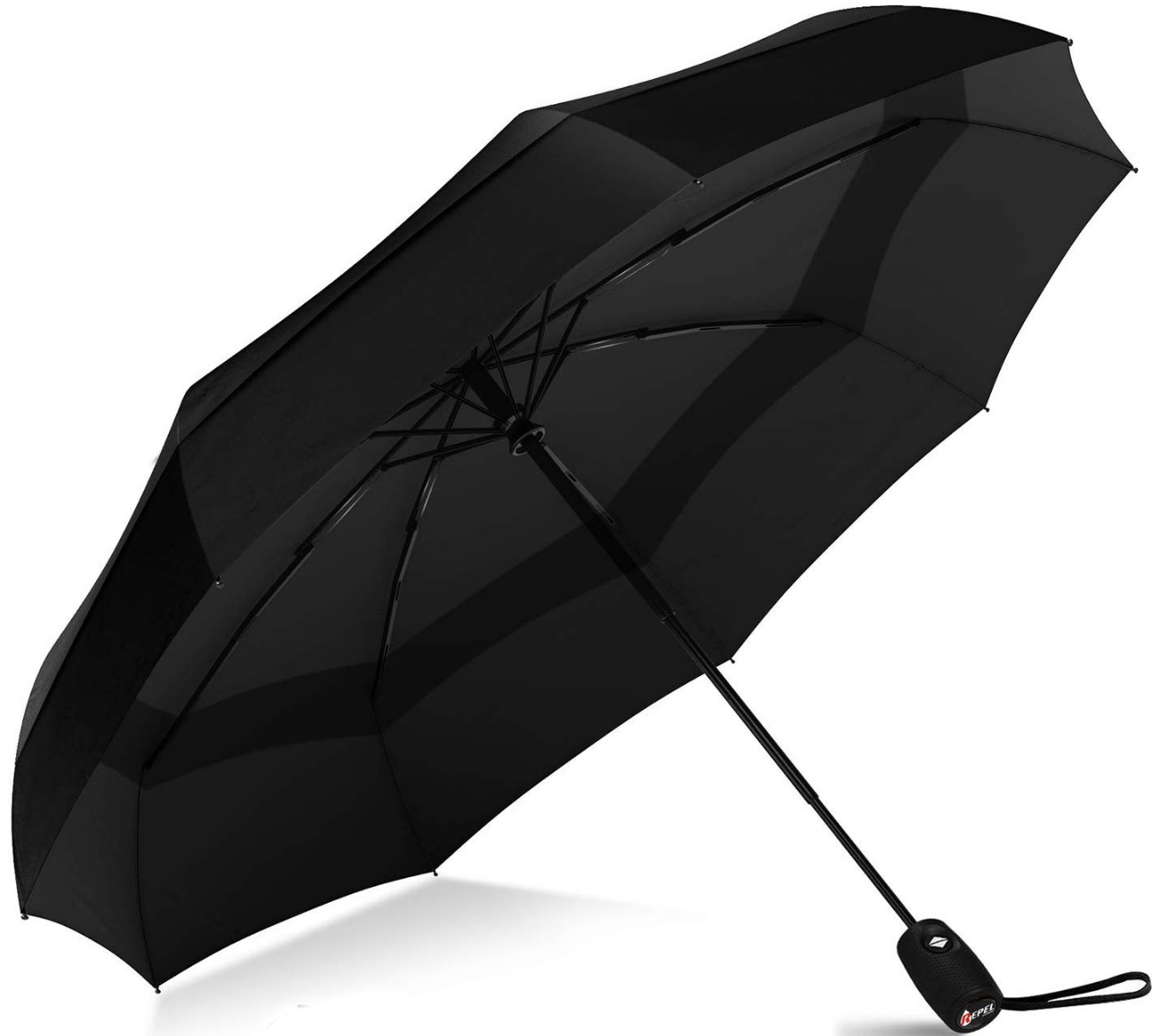
Repel Windproof Travel Umbrella
United Kingdom
The weather in the UK is always unpredictable, but when packing for Europe in winter you should definitely expect rain (and lots of it!) and potentially snow in some areas.
Whether you’re immersing yourself in the city of London , exploring the countryside in Wales , or experiencing the wonders in Scotland , the UK is a fantastic place to visit all year round, as there is plenty to see and do.
A waterproof jacket or trench coat is an absolute must for your winter vacation, and if you’re traveling around the country, it’s important to invest in one that is lightweight and folds away to fit easily in your carry-on bag.
Choose an insulated jacket or layer a packable down jacket underneath for the perfect travel combination.
Layering is the best way to battle the changing climates in Europe, and this is easily done by packing dark skinny jeans, a long-sleeve merino wool top, a sweater, and a jacket.
If you’re visiting London or other cities, a pair of waterproof leather ankle boots and warm wool socks are ideal. But if you’re planning on venturing out into the countryside, consider walking boots.
Don’t forget to throw in some winter accessories like gloves, a scarf, and a cute hat. These will keep you extra toasty and are a good way to add some extra color to your outfit. A small umbrella is the perfect accessory for hopping on and off trains or in and out of buildings.
Tip : Always keep an umbrella or hooded jacket with you! Rain can occur at any time.
For packing tips for England, take a look at this article!
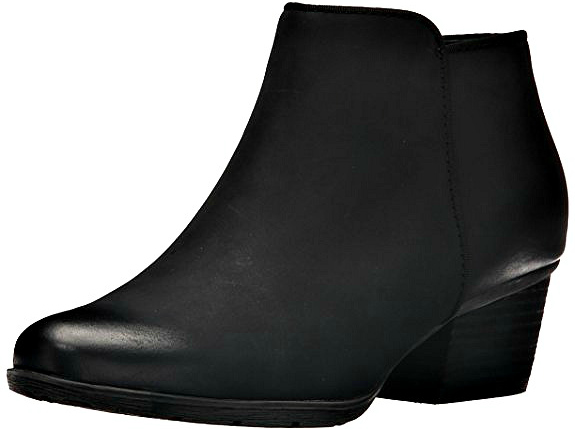
Blondo Villa Waterproof Ankle Bootie
The best thing about traveling to France in winter is being able to avoid all of the large crowds, allowing you to experience the Eiffel Tower or the Palace of Versailles without the long lines.
The weather varies depending on which part of France you’re visiting. (Read this packing guide for France.) The south is relatively mild, whereas northern cities are cold and wet. Keep an eye on the forecast before you go as it may also snow during your trip.
Most locals will be wearing a trench style coat as they’re both fashionable and practical, but remember to bring something more substantial if you expect to spend extended periods outdoors. When packing for Europe in winter, pick something dark to avoid it getting too dirty and lightweight so it packs easily into your suitcase.
To prepare for the cold weather, pack long-sleeve tops and sweaters, a pair of jeans or a skirt, and thick tights, and finish the look with an oversized scarf.
Like most European countries, France is filled with cobblestone streets, so comfortable footwear is an absolute must. Leather boots, waterproof brogues, or leather water-resistant sneakers would be ideal for looking stylish and feeling comfortable during your travels in France.
When in doubt, wear black. France is all about classic and minimal chic style. You can never go wrong with a combination of black, white, and grey with a touch of color. (Perhaps a red lipstick!)
Tip : The most recommended shoes for winter, fall, and spring are a pair of short black boots like these . Read this post to find shoe recommendations for other times of the year.
For more tips, read our guide on what to pack for Paris !
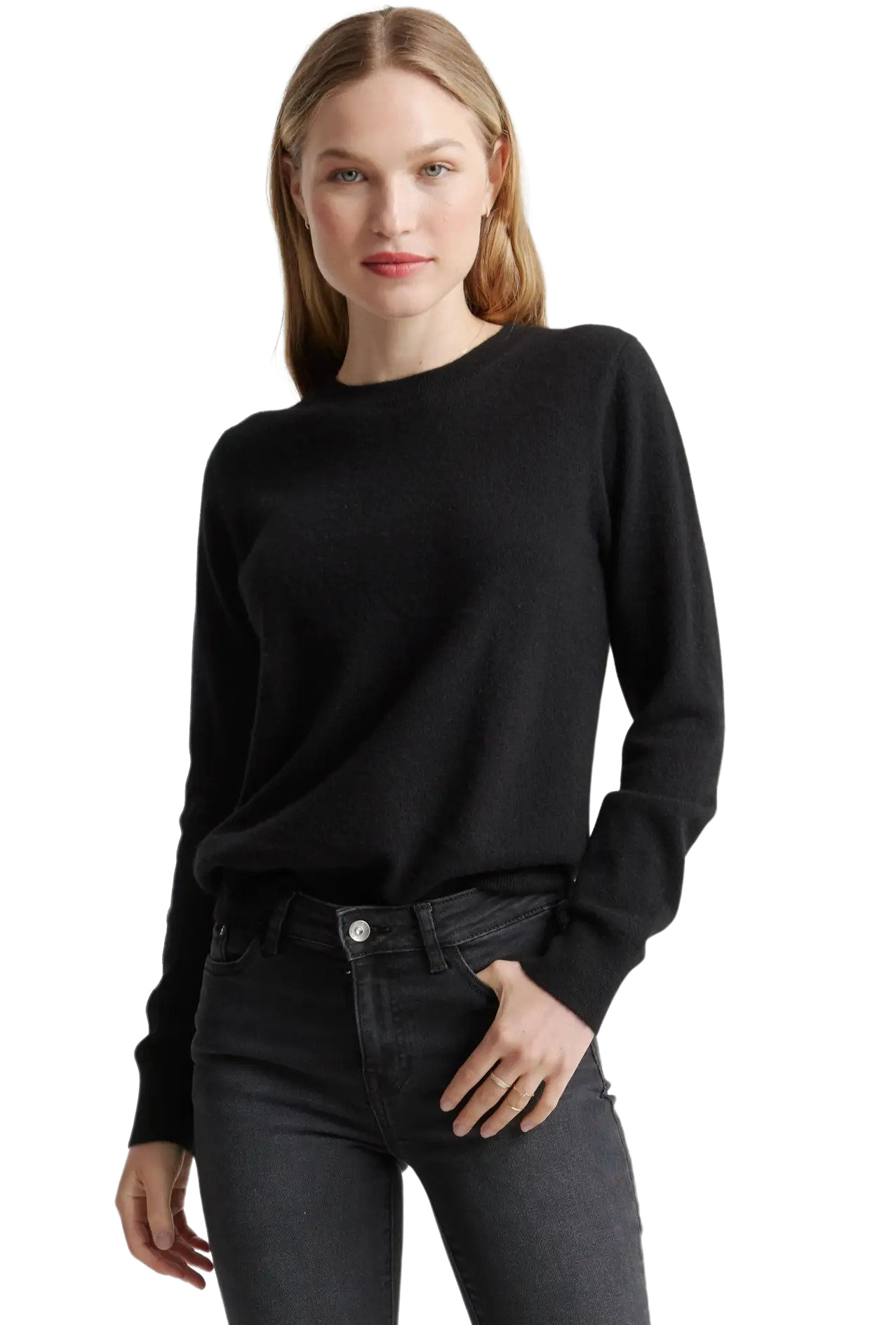
Quince Mongolian Cashmere Sweater
Italy is one of our favorite European destinations as it offers absolutely everything from fascinating history, to incredible food and beautiful landscapes. Even in winter, this country is a fantastic place to visit, and while most cities will be cold and wet, that doesn’t mean you can’t immerse yourself in true Italian culture.
Temperatures will change depending on where you decide to visit. In Milan , you should expect plenty of frost, but as you head further south, you’re likely to experience rain in Rome , and even sunshine in cities like Palermo and Sicily.
Layers are essential and you’ll need a mix of cool and warm clothes that you can easily strip off when needed like this Quince Mongolian Cashmere Sweater . When packing for Europe in winter, include a pair of dark skinny jeans, a long-sleeve shirt, and a lightweight sweater. If you’re heading up north, you’ll need a winter coat or quilted jacket to keep out the cold, as well as a scarf and gloves .
As cities like Milan can be snow covered in winter, it’s important to have a pair of sturdy boots that will keep your feet warm and dry. A pair of stylish leather ankle boots would be ideal for this climate, as long as they have a sturdy rubber sole on the base. If you plan on visiting the south as well, throw in a pair of lightweight sneakers like Supergas for those dry and sunny days.
Tip: Don’t forget your umbrella and sunglasses! Italy’s weather is quite diverse as you travel north and south.
For more tips, please read our complete Italy packing guide !
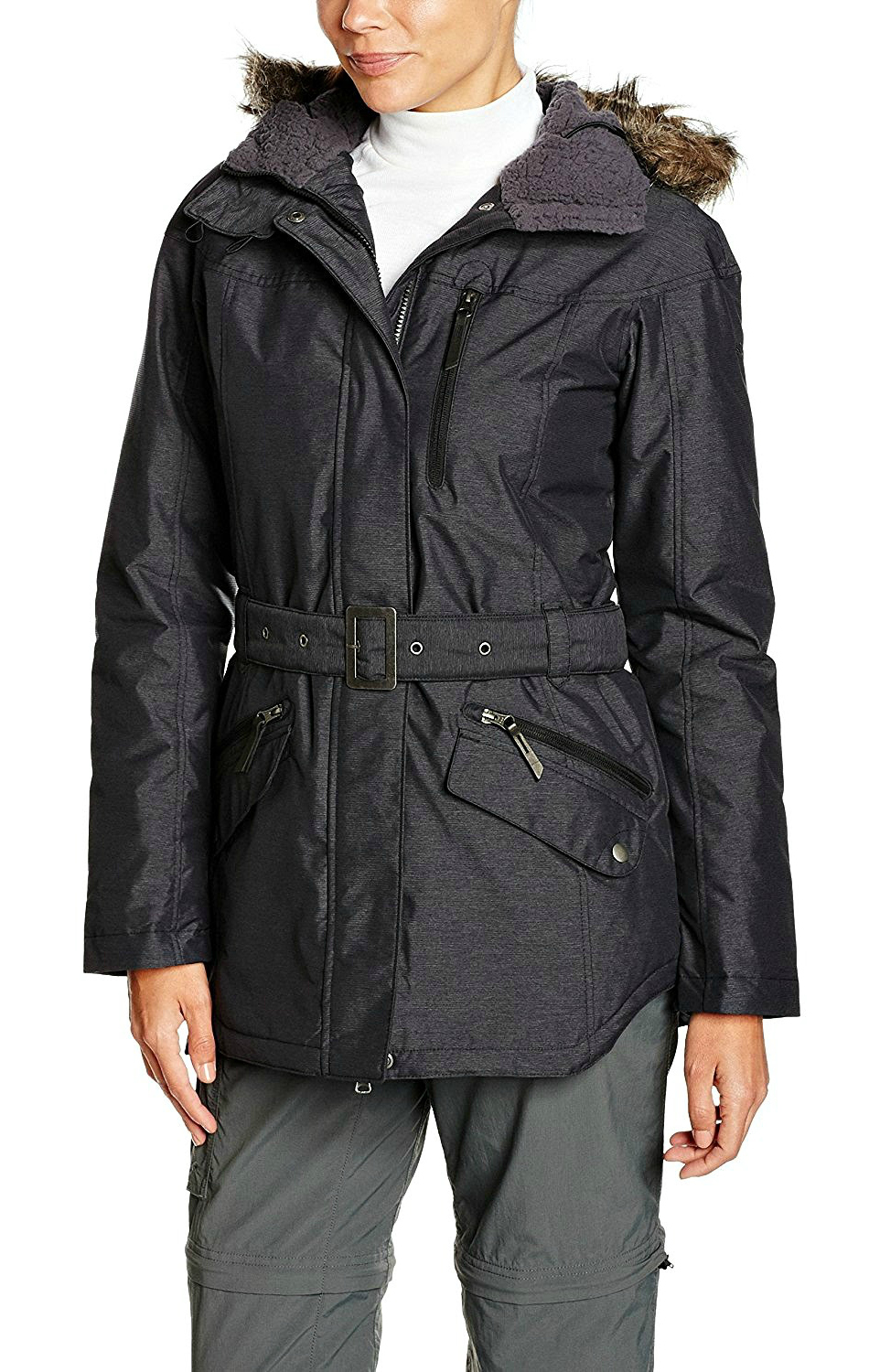
Columbia Carson Pass II Jacket
The Republic of Ireland is home to rich history, inspirational architecture, traditional pubs, and beautiful views. From the popular city of Dublin to the traditional town of Killarney, Ireland has plenty to offer tourists who will find themselves among some of the friendliest people in the world.
Winter in this country tends to be cold and windy with intermittent rain showers spread throughout the day. It is, however, known to have four seasons in one day, so layers are crucial for battling the ever changing climate.
If you’re heading to Dublin , remember that it’s a fairly trendy city, where the locals will be presentable and dressed for the weather. Your travel wardrobe should include jeans or travel pants, long-sleeve tops , a sweater , and a warm winter coat . If you still feel cold, pack some thermals , as well.
Leather ankle boots like these are ideal for a winter in Ireland, as they are waterproof and will be comfortable enough to walk around in. If you want to add some color to your outfit, pack a bright scarf that will keep you warm and give you a dressier look.
Tip: An umbrella will just blow in the wind. To keep yourself dry, wear your coat and run inside a pub. This is something all locals do, and it’s actually good fun.
Here’s the best jacket coat for Ireland !
Find out the benefits of the Columbia Carson jacket in my video review !
After testing out various jackets, I bought the above Columbia Carson waterproof jacket and couldn’t have been more happy with my purchase. Not only was it 100% waterproof but the insulating Omni-Heat material also helped keep me warm, too. ( For 2x & 3x Sizes Click here .) See the video above on why this jacket is so awesome!
Find out what to wear in Ireland !
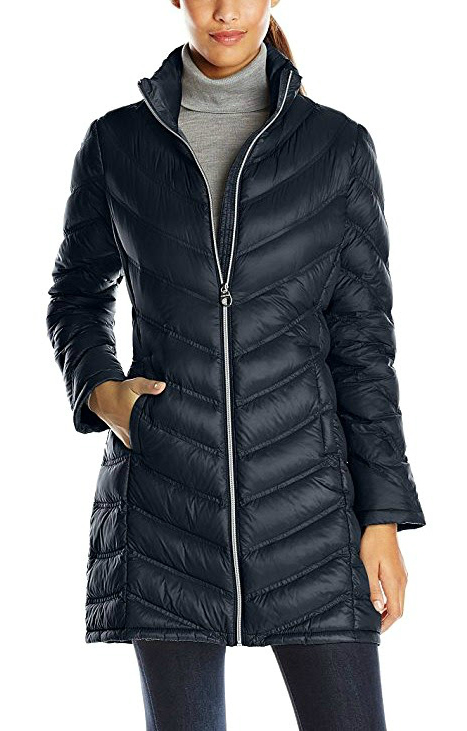
Chevron-Quilted Packable Down Coat
Austria is often overlooked when considering where in Europe to visit, yet there is plenty to see and do. From the history and culture in Vienna to the stunning views in Salzburg, it’s a beautiful country that’s perfect for a vacation at any time of the year.
The average temperature in winter hovers around freezing, which means you’ll need warm and thick layers wherever you visit. Innsbruck and Vienna will also have a fair amount of snowfall during this time, so thick waterproofs are a must.
The fashion in Austria is generally smart casual, with most women wearing dark colors and a fur coat to keep out the frost. Long-sleeve tops, a warm wool or cashmere sweater, and black jeans make for a perfect ensemble for an Austrian winter. Top it off with a lightweight down jacket with a waterproof outer-layer .
When packing for Europe in winter, bring merino wool thermals , wool lined socks , and waterproof winter boots if you’re heading to snowy regions, and if you’re planning on skiing you’ll need salopettes, goggles and ski gloves.
Tip: Jump on a train to visit different places and make the most of the stunning views. Here’s the best down jacket for travel!
Before your trip, find out what to wear in Austria !
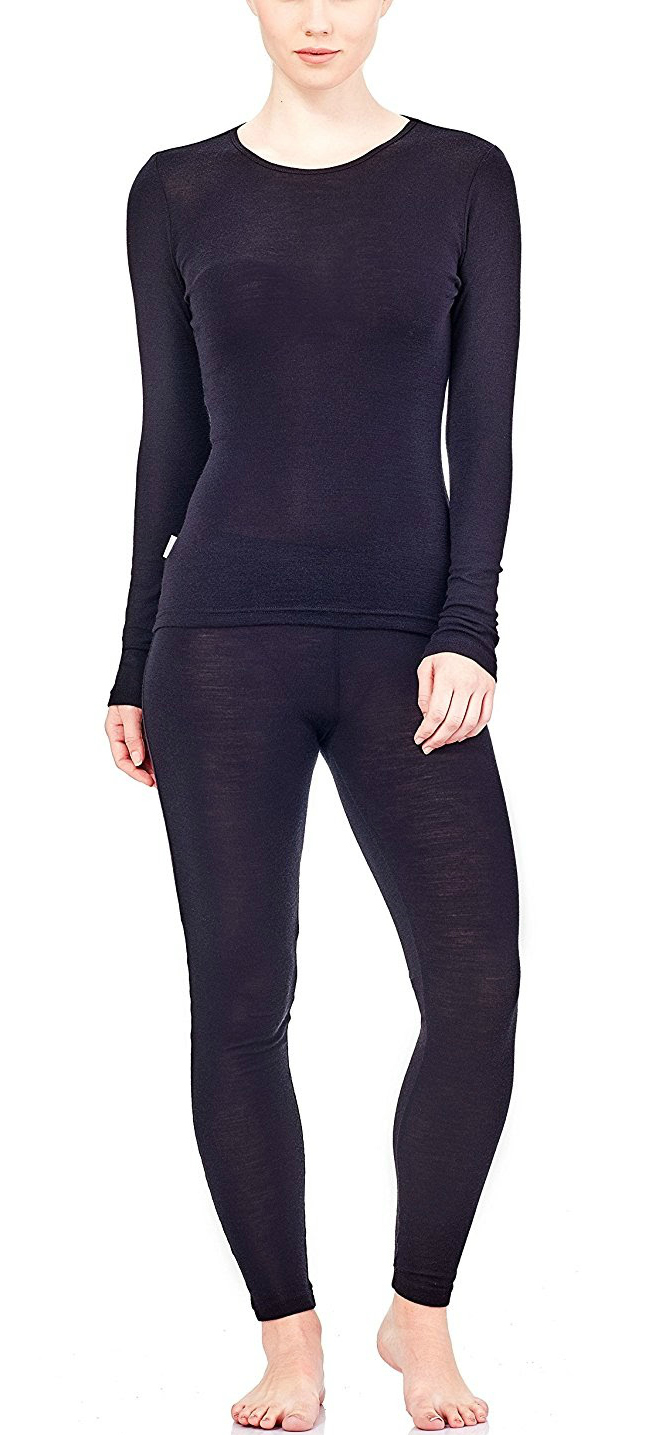
Merino Wool Thermal Top and Bottom
Germany has so much to offer tourists at any time of the year, from the history in Berlin to the architecture in Munich , and not to mention the various markets and beer festivals that take place across the festive period.
Winter in Germany is known to be bitterly cold, with icy rain, arctic winds, and average temperatures of around 38 degrees. However, it’s an excellent time to visit if you want to avoid large crowds for low prices.
Pack a pair of dark wash jeans or travel pants, and pair them with long-sleeve shirts, and a fleece or sweater to ensure you’re as comfortable as possible. If you’re not used to cold weather, wear merino wool thermals under your clothes and accessorize your outfit with a hat, scarf, and gloves.
Keep your feet warm with thick socks and waterproof boots with a faux-fur lining and a good grip on the bottom.
Tip: Due to the strong winds, an umbrella will be next to useless in Germany. Instead, pack a thick waterproof and windproof jacket with a hood to keep out the rain.
For more tips, read up on what to wear in Germany !
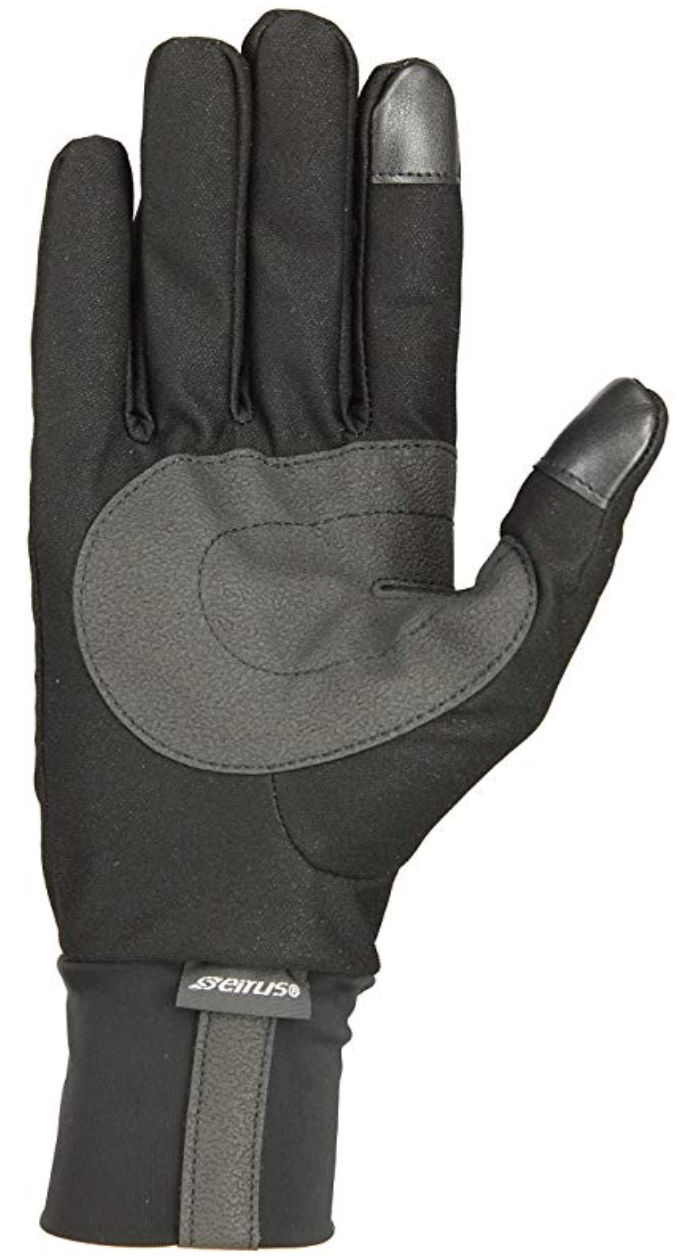
Seirus Innovation All Weather Glove
There are so many reasons to visit Sweden in winter, from a chance to see the mind-blowing Northern Lights to the opportunity to ski at one of the 200+ resorts, or to visit Stockholm’s traditional markets. This European country is like a frosty wonderland and should not be missed.
Winter here will most likely involve lots of snow and sub-zero temperatures. But there is plenty of heating indoors, so layers are a must so you don’t overheat. This can make packing for Europe in winter tricky! Read tips about this here .
Start with merino wool thermals to wear under your clothes. Then add a pair of jeans (for the cities), a sweater, and a down jacket with a waterproof outer layer to keep you dry. If you’re planning on getting involved in activities like sledding or skiing, you’ll need to invest in some salopettes or waterproof travel pants .
Faux-fur lined snow boots are great for ski resorts in Sweden, or if you’re just sticking to big cities then a pair of winter-friendly ankle boots will be fine. Don’t forget some wool socks , as well as a hat, scarf and warm gloves .
Tip : If you go skiing or partake in any snow activities, don’t forget sunscreen and sunglasses to protect from the harsh glare.
Here are some packing tips and Swedish style ideas to help you decide what to wear in Stockholm any time of the year!
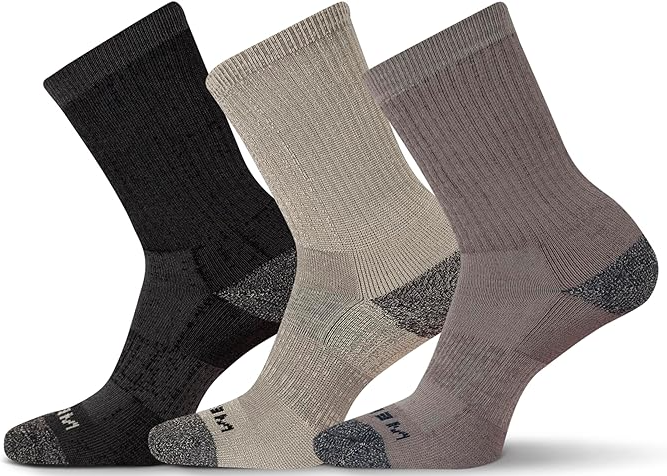
Merrell Performance Hiker Socks
Switzerland
Another popular European destination in winter is Switzerland . This mountainous country is full of glistening lakes, traditional villages, modern cities, and, not to mention, some very beautiful ski resorts.
While Switzerland doesn’t get as cold as some of its neighbors, winters here can still consist of rain, wind, and snow with average temperatures of 32 degrees in January and only a few hours of daylight.
The fashion is conservative and casual, which means dress for comfort and style. If you’re planning on staying in the cities then pack a pair of dark-colored jeans, shirts, a jacket, and a waterproof coat , as there are plenty of outdoor markets to explore. For anyone wanting to venture into the mountains or towards the lakes, thermals , and long-sleeve tops are a must.
Add a hat and gloves for warmth, and throw in a few scarves to dress up your outfit for an evening out. Wear warm socks and sturdy, waterproof lined boots to keep your feet warm. The wind is normally too strong for an umbrella, but you can bring one for the occasional mild day.
Tip: The trains in Switzerland are a terrific way to travel! They are clean, safe, and efficient, and will take you everywhere.
For more tips, read our guide on what to pack for Switzerland !
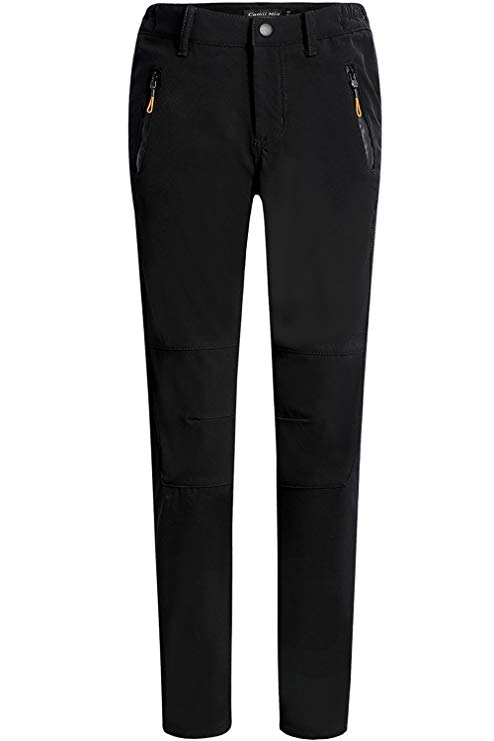
Camii Mia Outdoor Hiking Fleece Pants
Norway is a diverse country with cosmopolitan cities, stunning glaciers, and breathtaking coastlines. Throughout December to February, Norway turns into a winter wonderland, and many people visit at this time of year to see the Northern Lights.
Temperatures vary depending on what part of the country you visit, as the coastline is mild and wet and the central regions are a lot colder with plenty of snow.
When packing for Europe in winter, take quick-drying travel pants that will keep you toasty and dry, as well as long-sleeve tops and a sweater or cardigan. The J. Crew Halle sweater , which is featured above and made of 100% merino wool is a packable item that will provide warmth, without overheating the body. I’d recommend merino wool thermals for this destination as Norway can get unbelievably cold.
Wool socks and a colorful wool scarf are an absolute must for snowy conditions. If you’re planning on skiing in this beautiful country, you’ll need to pack appropriate ski gear, including salopettes, thick waterproof gloves, and a proper ski jacket.
You can’t go wrong with a neutral, minimalistic travel wardrobe featuring well-tailored pieces and clean lines to mimic the preferred Scandinavian style .
Tip : Check the weather before you go. If there’s a lot of snow, make sure you have some winter boots with good traction on the bottom.
Here are more tips on what to wear in Norway in winter !
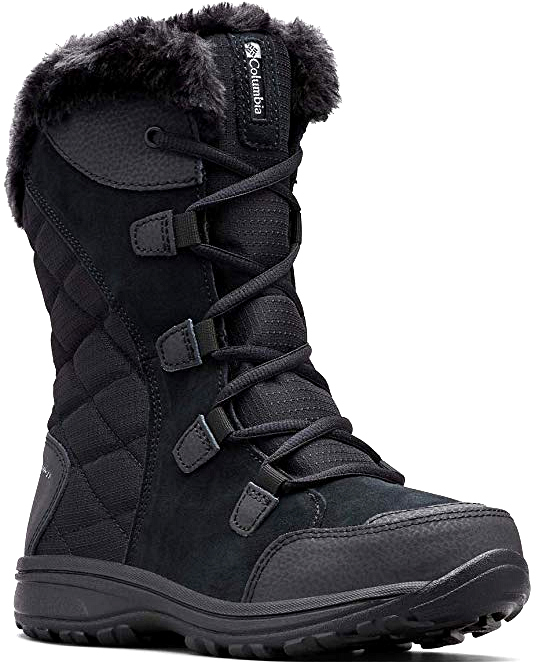
Columbia Ice Maiden II Insulated Snow Boot
Traveling to Russia in winter is like being transported to a snow covered fairytale, with cities like Moscow and St. Petersburg filled with fascinating markets and cultural sights.
The temperatures in these areas can drop down to 14 degrees Fahrenheit, making it a bitterly cold place to visit. Check the forecast before you go and be prepared to wrap up warm.
Pack an underlined raincoat that is roomy enough to wear layers underneath, and opt for some dark travel pants that will dry quickly and not leave you feeling uncomfortable. Wear Merino Wool thermals under your clothes and add a wool cardigan or hoodie.
Winter snow boots are ideal for shoes as they have a strong grip on the sole and an inner lining. If you want a dressier look, pack a pair of sturdy leather ankle boots with grip to get you across slippery streets.
Tip: You will need to cover your head if you visit any churches, so pack a few scarves for style, warmth, and practicality.
If you’re wondering what to wear in Russia in winter , take a look at what they recommend you bring for your vacation!
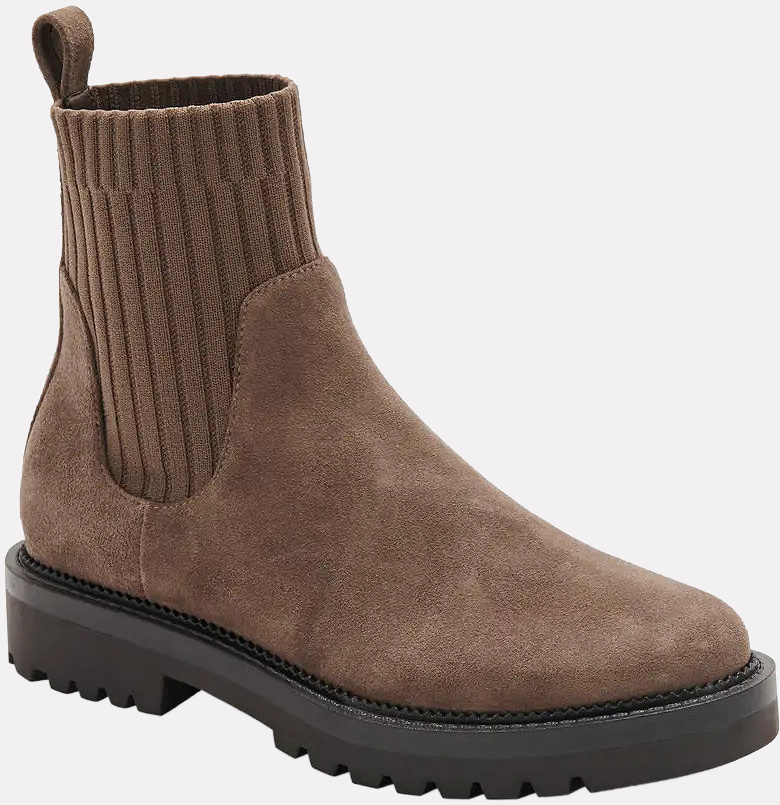
Blondo Hallie Waterproof Bootie
The Netherlands
The Netherlands is a beautiful country filled with history and architecture. Whether you’re heading to Amsterdam, Rotterdam, or another city, prepare for a cold and wet climate throughout the winter.
However, winter is still a fantastic time of year to visit as prices are generally lower, there are plenty of winter markets to visit, and there are far fewer crowds than the summer months.
Fashion in the Netherlands is practical and casual, consisting of mainly dark colors. Pack a pair of dark jeans or some quick-drying travel pants , a mix of short and long-sleeve t-shirts, and a sweater for warmth. There is a high chance of rain in the winter, so a raincoat and umbrella are essential.
Stylish leather ankle boots are great for this time of year, as they are comfortable enough to walk around in and keep the rain out. Don’t forget to pack a winter hat and some gloves for when the temperature really drops.
Tip : Many people travel around Amsterdam on bicycles, but it can be too chilly in winter, so instead use one of the reliable public transit options, like the bus, tram, or metro.
When it comes to choosing boots or the right winter footwear, it’s important to select wisely. You never want to be caught with freezing feet or not be able to walk comfortably. Check out the video below and how to select stylish winter shoes!
This video can help you choose proper, yet fashionable winter shoes!
The video above is part of a three-part YouTube series on how to prepare for winter travel and choose the right fabrics, review the whole series to plan your European trip.
Visiting the Netherlands on your next trip? Read up on what to wear in the Netherlands !
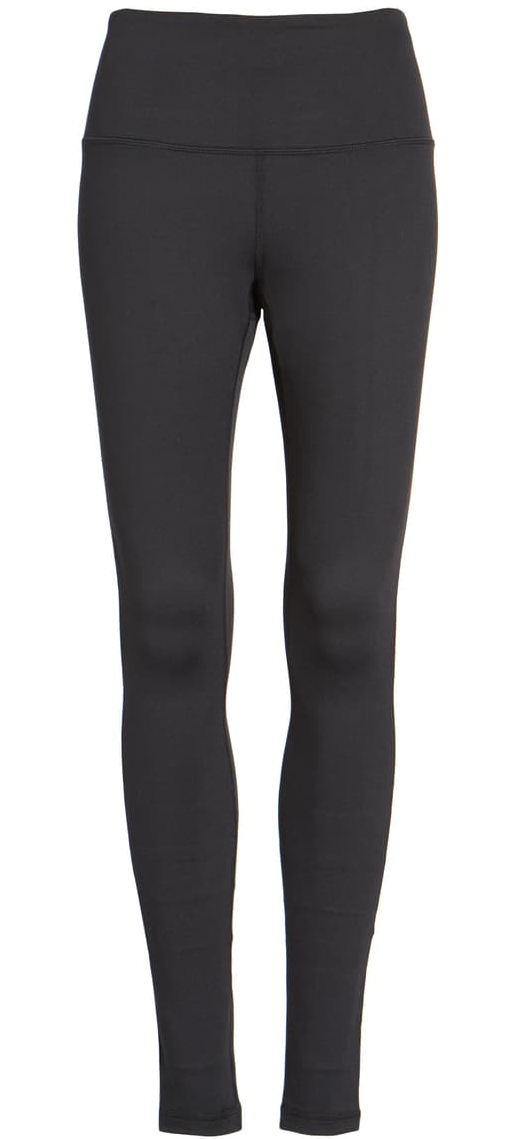
Live In Zella Slim Fit Leggings
Greece is better known as a summer vacation destination, as the different islands offer a range of beaches and delicious Greek food. A winter in Greece, however, can be just as enjoyable and a lot more authentic.
The winter months are extremely mild with temperatures over 40 degrees, and only an occasional drop of rain. It is quiet during this time of year and some resorts are closed for the season, but there is still plenty to do from hiking in the mountains to exploring the archeological sites.
Greece style is smart casual and you’ll find most local women in big warm coats. For your winter wardrobe, start with a pair of leggings , a long blouse, and a sweater.
Add a waterproof jacket when the temperature drops and a colorful scarf and pair of sunglasses for a local feel. Layers are essential here as some days will be cold and rainy, yet others will be warm and sunny.
Wear a pair of ankle boots during the day, and in the evening swap them for heels, a dress , and tights .
Tip: If you’re traveling to Greece in the winter, double check that there are regular ferries to the island you wish to stay on.
For more tips, read our full packing list on what to wear in Greece !
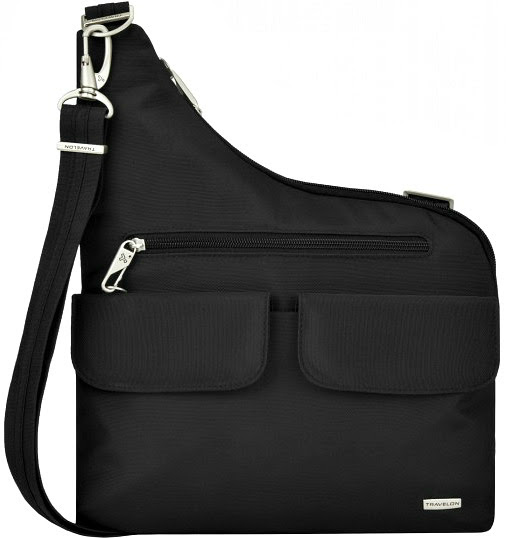
Travelon Anti Theft Cross Body Bag
Spain is a popular European destination due to its glistening coastlines; vast mountain ranges, fantastic food, and a blend of old traditions and modern cities. This country has so much to offer tourists at any time of the year, from indulging in tapas and paella to lazing on the beach to exploring palaces and castles.
Spain is definitely one of the more pleasant European countries to visit in winter, but that doesn’t mean you should expect sunbathing weather. The temperatures will vary depending on where you go, but from December through March, you should expect a mix of warm and cold days, with plenty of rain in the north.
Fashion in areas like Barcelona and Madrid is quite formal and dressy, whereas southern regions are relatively relaxed in their style. Make sure to check the weather forecast for each city because you might experience sun in one place and snow in the other. Read this guide on how to pack for trips with mixed weather.
Like most countries in Europe, layers are crucial for battling the volatile temperatures in Spain. Wear some dark jeans, a cute shirt, and lightweight jacket for when the weather is mild, and add an extra layer if the temperature starts to drop.
Another favorite for locals is to wear a long skirt and thick tights paired with a shirt and jacket. Most women will also be wearing a colorful scarf.
As for shoes, waterproof leather ankle boots are a must for winter in Spain, but make sure they have a solid grip on the soles as the streets are cobbled and steep, making them very slippery when wet.
If you’re going to mountainous regions, you’ll need to pack thermals , travel pants, a down jacket, gloves, a scarf, a hat, and comfortable hiking shoes .
Tip: Use a crossbody purse or anti-theft purse to secure your valuables against pickpockets. It’s also a great way to carry around a much needed umbrella .
To learn more, read our complete Spain packing list here !
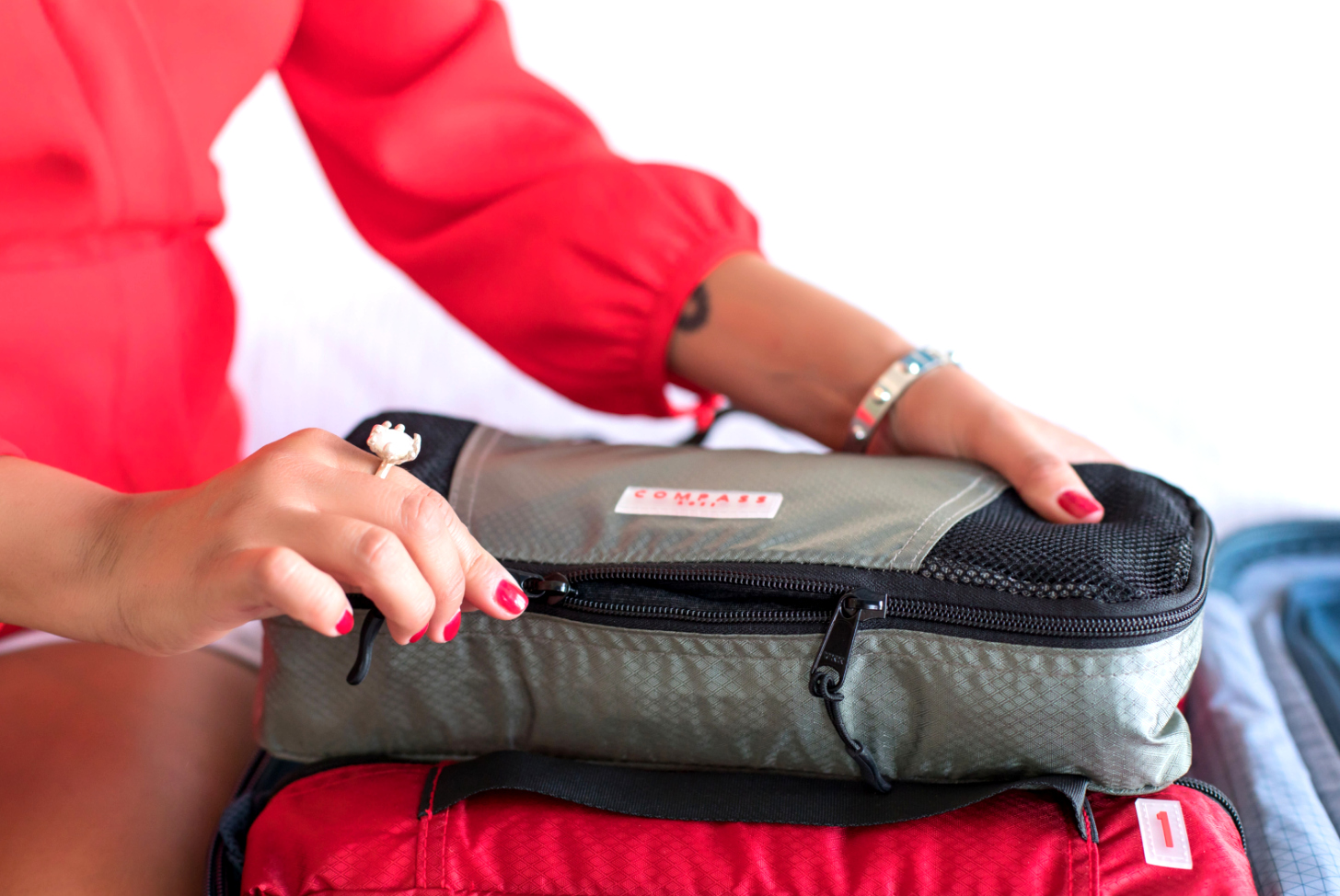
Compass Rose Travel Packing Cubes
The Best Method to Pack for Winter
The most efficient way to organize a winter wardrobe is to utilize packing cubes. While I’ve tried many brands over the years, I decided to create my own version that will take your packing to the next level: the Compass Rose Travel Packing Cubes shown above!
Learn our hacks with packing cubes in the video above!
The 4-Piece Set of Carryon Packing Cubes are sized to fit the exact width of a carry-on suitcase and they also have a unique color-coded and numbered organization system.
I put together a five-part YouTube series showing you the different methods to use packing cubes. If you use this specific packing strategy, they can also compress your belongings. This is the secret to traveling carry-on only!
Printable Travel Checklist
We’ve included some of the readers’ most talked about destinations in this winter Europe packing guide. If you want to see other countries, let us know which ones in the comments below!
For more Europe packing tips, please read:
- Backpack Vs Suitcase: Which is Right for My Trip to Europe?
- Ultimate Guide to The Best Travel Purse for Europe
- Money Belts and Anti-Theft Travel Accessories
- 10-Step Packing Guide for Europe
- What to Wear in Europe: Packing List for Every Destination
Suggested travel resources:
- Lonely Planet Europe on a Shoestring
- How to Choose the Best Shoes for Europe
LIKED THIS POST? PIN THIS PIC TO SAVE IT!

I hope you liked this ultimate guide to packing for Europe in winter. Please share it with your friends on Facebook, Twitter, and Pinterest. Thanks for reading!
Hi 🙂 Thank you for all your tips. Do you have recommendations for Portugal in December?
Today I was trying to decide what to pack on my trip to Europe in December. I was having a hard time deciding until I saw this list. Thank you.
This is a really helpful list! I’ve done COO a few times, for up to 3 weeks, but have never tried it for a winter Christmas Market trip – the last time, I was WAY overpacked! I’m looking forward to doing COO for that trip since it is so liberating! This group has introduced me to some of my new favorite brands (Quince!) and travel gadgets galore.
Thanks for the tips
These guides are so incredibly useful. I hate packing and need all the help I can get. I’ve spent hours on this site trying to decide what to bring on my upcoming Christmas markets cruise! Thank you!
This is super helpful! I am traveling to Austria in December and added many things from this list to my cart!
Great list! I will be using it soon!
Wow!! I love this! I’ve traveled to 64 countries and all seven continents and your lists are exactly spot on as far as packing. I’d say to leave yourself some space for an accessory or two to make a dull outfit stand out.
Hi Priscilla, that is so awesome to hear, thank you so much for your lovely comment!! Fantastic advice, thanks for sharing!
Submit a Comment Cancel reply
Your email address will not be published. Required fields are marked *
Save my name, email, and website in this browser for the next time I comment.
- North Dakota
- Czech Republic
- Switzerland
- Vegan City Guides
- Vegan Travel & Tips
- Vegan Fashion
- Sustainability
- Blogging Tips
- Photo Diaries
- Unfortunate (but hilarious)
- Recommendations
- Get in Touch
- Work With Me
- Best Travel Insurance
- Freelance Gig

- Europe , Pack Lists
Hopping on a flight and escaping to the snowy cities of Europe this winter? There’s nothing better than the strolling through the picturesque towns while the snowflakes fall gracefully upon your head, turning it into a Winter Wonderland. But wait wait wait… what in the heck do you actually pack? Don’t fret — I’ve got your back. Here’s the ultimate packing list for Europe in winter.
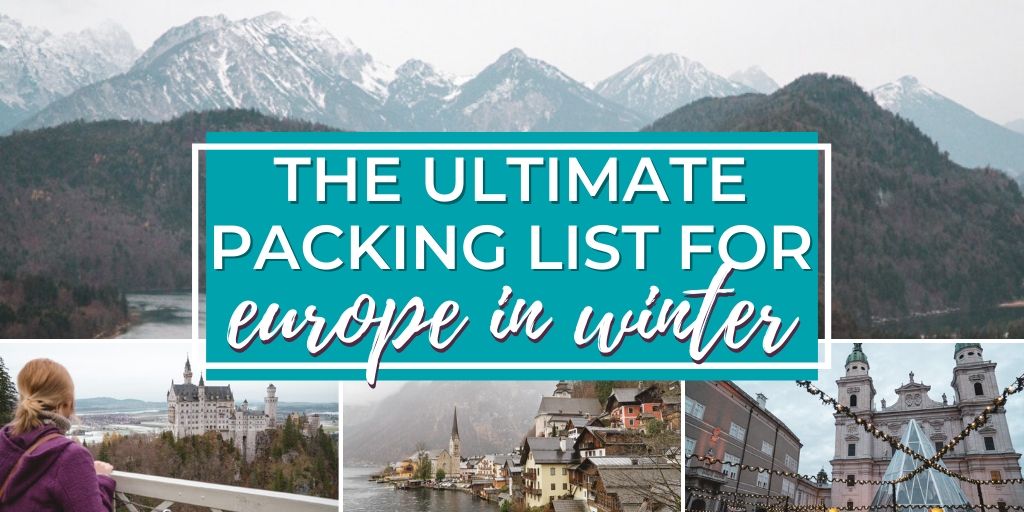
Psst. This post may contain affiliate links. Read our disclosure .
While Europe is spectacular in the sweet sun-filled summer days, there’s nothing else like it in the winter season.
As the temperatures cool down, the cities light up.
Christmas Markets sprout up in every city, charming lights adorn the corners of beautiful buildings, vendors hand out soul-warming mulled wine, the Instagram-worthy cobblestone streets wear a blanket of fresh snow, and — even though the cold is all around — you feel a soft warmth blooming in your chest while walking amongst the fairytale cities of Europe in winter.
Sounds pretty good, eh? Almost as if it’s a dream.
Well, lemme just tell you…
Visiting Europe is winter is most definitely dreamlike.
Just imagine it …
Walking through the twinkling Christmas lights as snowflakes flutter down to land in the mug of blueberry mulled wine warming your hands.
And yet… you sip on it anyways.
A small smile spreads across your face as the taste of bursting blueberries lingers on your tastebuds (yes, mulled blueberry wine! It’s devine).
You don’t have a care in the world; you’re content. Europe in winter is everything you could’ve imagined and more .
Ugh, now I’m yearning to hop on a plane and experience a European winter once again!
But while packing for summer months is easy, deciding on what the heck you need to be packing for Europe in the winter is a little harder, as the weather is unpredictable and you need to be practical with bag space.
Hence, I’ve put together the ultimate winter travel packing list so you don’t forget a thing!
Less stress and hassle, more mulled wine and winter delights, amirite?
While you have the ultimate winter packing list for a Euro trip here in your hands, do you have a kick-ass bucket list to go with it? Click here to check out the ultimate Europe bucket list!
Table of Contents
The Ultimate Packing List for Europe in Winter
Psssst. Keep an eye out for a winter in Europe packing checklist in this post! So you can make sure you have everything you need to have an incredible Europe winter trip. But first and foremost…
Helpful Info About Winter in Europe
Region ›› For this winter clothing list and packing checklist, we’re going to focus on the region of Western Europe . This includes the countries of Germany, Austria, France, Belgium, Liechtenstein, Luxembourg, Monaco, Netherlands and Switzerland.
Months ›› Typically, the winter season in Wester Europe lasts from about December to end of February . This is the same for Eastern Europe.
Temperature ›› Temperatures range from 32°F (0°C) to 41°F (5°C) . Although, Eastern European countries like Hungary, Czech Republic, Slovakia, and Poland have a very similar temperature range, albeit a bit colder, ranging from 21°F (-6°C) to 32°F (0°C) .

Europe in Winter Essentials
W arm, chunky scarf ›› Prepare for it to be cold. With that said, you’ll want to keep your neck warm from the snow and chill. Check out this cute, thick knitted scarf .
Knit hat ›› Going along with the prepare for it to be cold, you’ll also want to keep your head warm. Plus, who doesn’t love a cute knit hat? I like this one , which is made from man-made wool and is fleece-lined — perfect for winter! Check out the knit hat here .
Non-Slip Winter Boots ›› Whilst strolling through the picturesque Christmas Markets or through the snow-covered cobblestone streets, you don’t want to slip! That’s why I always make sure to pack some high quality, non-slip winter boots. No doubt, winter boots are the best shoes for traveling Europe in the cold, chilly months; leave the slip-ons at home! With that said, I like these vegan winter boots for casual walking and these boots if I’m preparing for a good amount of snow (like for skiing).
Cozy Socks ›› Don’t let those little toesies go cold! Make sure to bundle them up like any other part of your body. Because cold feet are never fun! P.S. Stay away from the wool socks and other wool products! (Learn why here ). Instead, try these fuzzy socks .
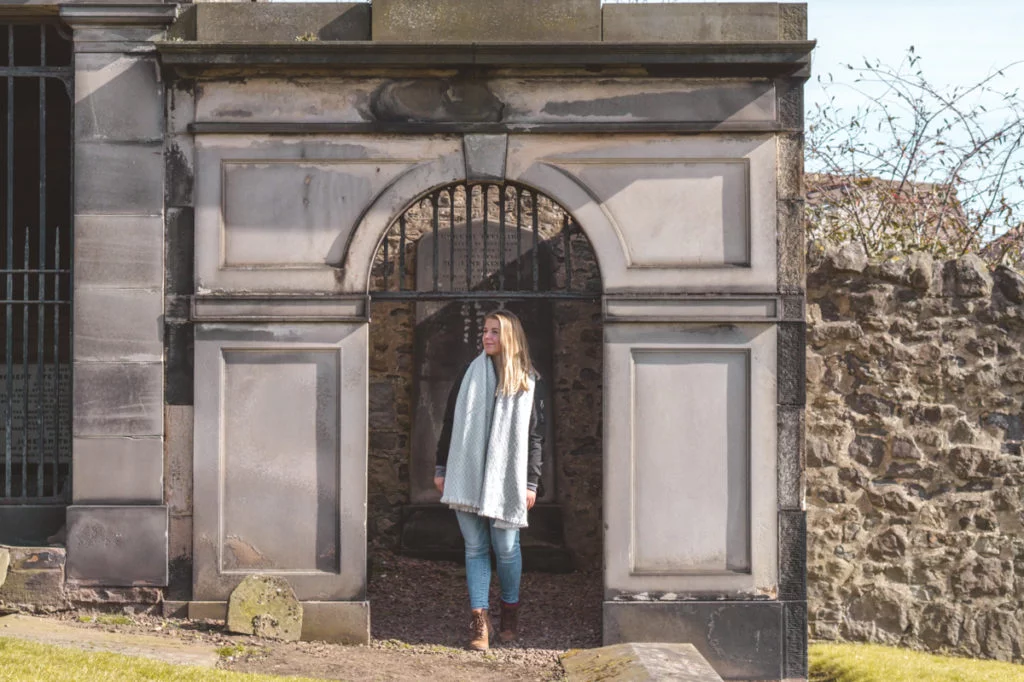
Outdoor Gear
Winter Jacket ›› This is something you can’t skimp on when traveling to Europe in winter! A warm coat that’s both durable and stylish is essential. I like the Columbia Mighty Lite Jacket ; comfortable, good quality, vegan, and packs super easily.
Winter Gloves ›› Who else hates their hands getting cold? With a good pair of gloves, those fingertips can stay cozy and warm! And, if you want to be able to take photos with your smartphone, make sure to get gloves with the special touch fingertips .
And, as mentioned above, don’t forget your hat, scarf, and winter boots!

Tops & Layering
Long-Sleeve T-Shirts ›› Make sure to pack enough long-sleeve t-shirts to stay warm! These are great for layering, which is essential for Europe during the winter. I personally love these fair trade cotton long-sleeve t-shirts . Additionally, Tentree (one of my favorite brands because they plant 10 trees for every product sold and they’re eco-friendly) has multiple long-sleeve shirts, which I love. I recommend bringing 1-2.
Tank Top ›› While a tank won’t do you much good on it’s own, remember, it’s all about layering! Tank tops are great for sticking under a long-sleeve or a thick t-shirt. I recommend bringing at least one. Additionally, I personally like this moisture-wicking, organic bamboo tank top .
T-Shirt ›› One or two t-shirts to stick under another warmer shirt will do! Plus, t-shirts are great if you need to remove a layer without having to go around in a tank top. You can find an eco-friendly, organic cotton t-shirt here .
Chunky Sweater ›› Need I say more? A chunky sweater will not only keep you cozy and warm, it’ll come in handy for a long plane ride because of it’s undeniable comfiness. Made with organic cotton and recycled cotton blend, this eco-friendly sweater is a great choice.
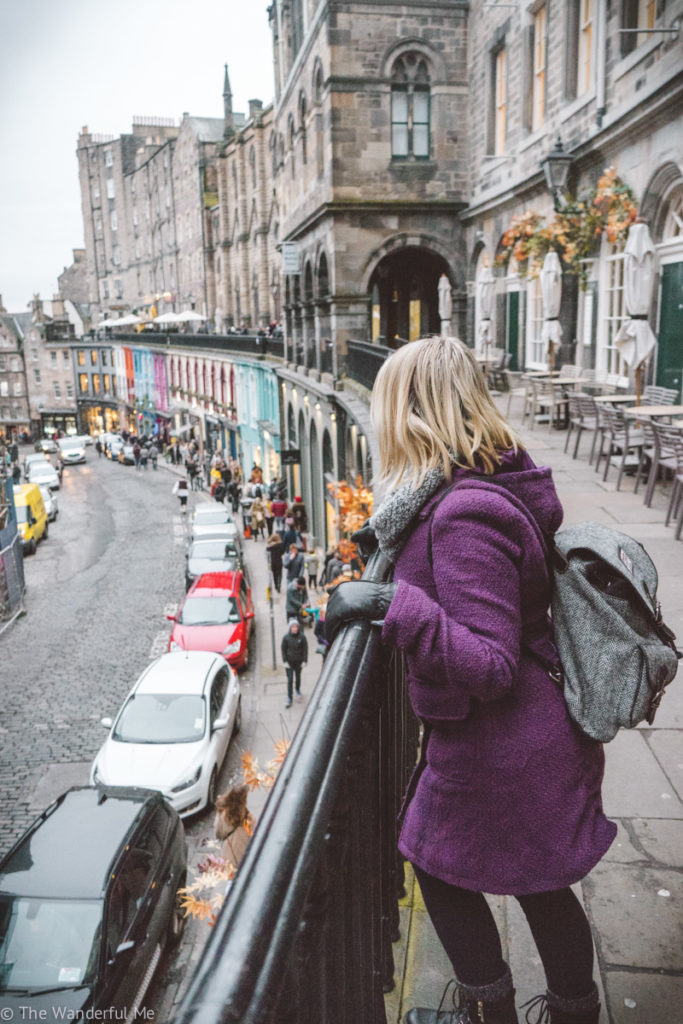
Sustainable Jeans ›› I suggest bringing a pair of both black jeans and light, denim jeans . Both are super versatile and can be paired with a variety of outfits! Plus, jeans tend to be pretty durable — great for walking outdoors.
Fleece-Lined Pants or Leggings ›› I absolutely adore fleece-lined pants and leggings! And not only are fleece-lined leggings super duper comfy, they go great with a nice sweater dress (or just a long sweater in general). The perfect addition to a Europe winter packing list.
Active Leggings ›› Just in case you’ll be doing any outdoor activities while in Europe! You never know; skiing, snowboarding, sledding, etc. Active leggings will help keep you dry and warm.
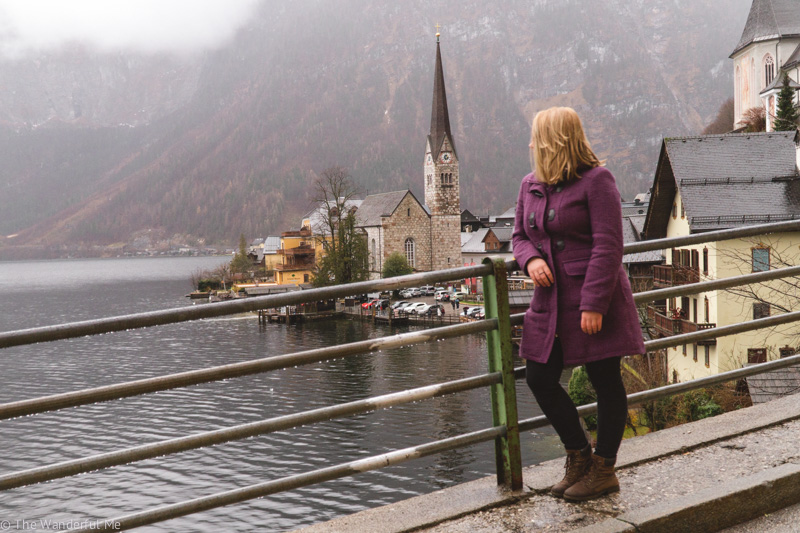
Winter Boots ›› As mentioned earlier, non-slip winter boots are an essential item to pack for winter in Europe. This is definitely a non-negotiable thing, as it’ll be chilly and snowy! Additionally, these winter boots are great for heavier winter activities, like skiing, while these winter boots are great for just strolling through cities.
Tennis Shoes ›› If you’re like me, you prefer to wear lightweight tennis shoes when flying. Thus, I always make sure to pack a pair of comfortable tennis shoes wherever I go. For my high arched feet, I prefer the Saucony tennis shoes , which are super easy to pack, lightweight, and supportive.

Undergarments
Moisture-Wicking Underwear ›› It’s time to let go of those cheap underwear from Victoria’s Secret that cost more than their value! Instead, switch to high-quality, moisture-wicking underwear that are perfect for travel. My favorite underwear is the ExOfficio brand ; antimicrobial, easy to pack, super fast drying, and durable fabric. Check it out here .
Bralette ›› One of my all-time favorite things to travel with is a comfy bralette. If you don’t know what a bralette is, it’s pretty much a bra but without all the uncomfortable wire and tightness. It’s like a dreamy hammock for your boobs. Also, it’s not the same as a sports bra because it’s most definitely not for exercising in! It’s just for ultimate comfort and relaxation. Try this prAna bralette — cute but also more supportive (and eco-friendly!).
Padded Bra ›› If you like a little bit more support, a padded bra is the way to go. I think one padded bra would do just fine for a winter trip to Europe! Keep those girls supported. (Though if you can get away with a more sports bra-type padded bra, this is my favorite !)
Warm (Not Wool) Socks ›› Would you consider socks an undergarment? I think so… Anyhow, as mentioned above, cozy and warm socks are one of the travel essentials for Europe in the winter. Don’t let your little toes go cold! Try these fuzzy socks .

Miscellaneous Europe Travel Essentials
In addition to the items mentioned above, there are a few non-clothing travel essentials you need to pack for Europe . So you don’t forget anything you need for your awesome winter adventure.
Travel Adapter ›› An absolute essential for any abroad trip, a travel adapter allows you to change over the European plugs into your home plug, such as the USA or UK. Check out this affordable travel adapter , which has a universal plug-in for most major countries, as well as smart USB plugs.
Packing Cubes ›› Who else loves a beautifully organized bag, where you can find everything you need in a jiffy? Packing cubes most definitely make this possible. You can have a cube for your tops, bottoms, undergarments, and miscellaneous items! They’re absolutely brilliant and one of the few things I never travel without . Check out some great packing cubes here .
High-Quality Camera ›› Need I say more? You’re going to the snowy fairytale land of Europe! Thus, you need a high-quality camera to capture all of the beauty. While a cell phone is great, it doesn’t do so well in low lighting, like at a Christmas Market. That’s why I always recommend the camera I personally use, the Sony a7 (or what my BF uses, the Sony a6000 , which is a model down of what I have).
Power Bank ›› If you’re traveling around Europe by train, or just like to have your things charged, a power bank is necessary. A lot of trains in Europe still lack power outlets, so having a packed power bank keeps all your things fueled and ready to go. I, for one, always forget to have my camera charged, so I find myself needing a power bank all the dang time! Here’s one I recommend .
SIM Card ›› Wifi is abundant but not everywhere. This is why I recommend you get a SIM Card when you arrive to Europe! Not only are they more than affordable, you can find stores selling them throughout any major city. Although, you can find one on Amazon here . Read the reviews though — there are a few directions on how to use it from other customers! Additionally, check out this Rick Steves article on buying a SIM card .
Quick Drying Towel ›› If you plan on staying in hostels or more affordable hotels, they might not always have towels! That’s why you should always pack one — just in case!. A quick drying one is not only smaller to pack but dries in no time. I personally use this one .

So, there you have it folks! The ultimate packing list for Europe in winter. Trust me, you’re going to want to bring everything on this list, granted your bag has enough space!
Additionally, keep in mind this list can be modified and revised, depending on how long your trip is and what you plan on doing.
Are you planning a Europe winter vacation? Do you have any questions or concerns about what you should plan or what you should bring? Let me know in the comments to see if I can help!
Not sure what to read next? Readers love these posts:
- Top 30 things to do in Edinburgh, Scotland (don’t miss #12!)
- Best Eastern Europe itinerary – 10-day, 2-weeks, or 1-month
- The ultimate list of the best things to do in Salzburg, Austria
- Manchester Christmas Market: 25 photos to inspire you to visit
- Best attractions to see and things to do in Munich in one day
Like this Europe winter packing list? Pin it!
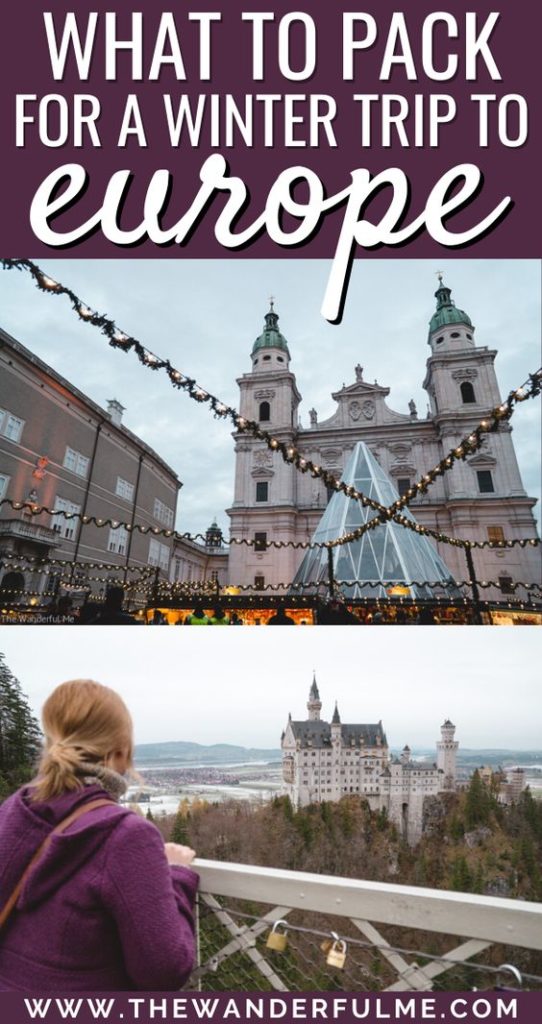
As mentioned above, this post contains affiliate links. Which means if you make a purchase through the links, this site receives a small commission at no extra cost to you. Read our full disclosure here .
Related Posts

The best 14-day Greek island hopping itinerary

Visiting Balos Beach on the Greek island of Crete
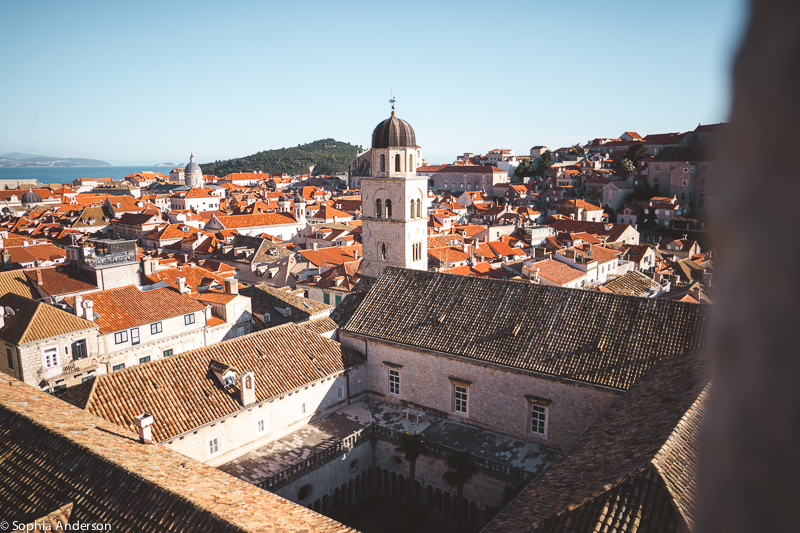
Discovering the Adriatic gems of Dubrovnik, Kotor and Budva
Article comments.
Michelle Tucker
This was spot on! So good and informative. We went to Great Britain and Croatia last February and I swear I spent a month trying to figure out what to pack. Great Job.
The Wanderful Me
Thanks Michelle! Glad you enjoyed reading 🙂 And thanks for stopping by!
I’m headed to Europe this winter for the Christmas markets, so this is exactly what I needed. I’ll definitely be packing my chunky scarves and sweaters. I had never heard of ExOfficio, but I’m excited to try them!
That’s awesome, Kate! I’m so so glad this Europe winter packing list helped you out — I tried to think of everything! And definitely check out the ExOfficio underwear, they’re seriously SO awesome, especially for those who like to travel minimally! P.S. Thanks for stopping by and I hope you have an incredible trip to Europe this winter!
Hi Sophie, I’m from Singapore, thanks for your tips on winter packing list. I’m planning for a Europe tour, but I’m not exactly prepared for the winter seasons, as my country is summer all year long. Looks like I will need to get more winter wear to complete my list. Anyway, your post did gave me some good inspiration. Thanks again.
Leave a Comment Cancel Comment
Sign me up for The Wanderful Me newsletter!
This site uses Akismet to reduce spam. Learn how your comment data is processed .

Your Ultimate Family Europe Winter Packing List for 2024: 111 Essential Items
Looking for a Europe winter packing list ?
The season brings a mix of weather conditions – snow, rain, and cold winds are all part of the adventure.
You might find yourself skiing in the Alps or exploring some of the best European Christmas markets . The secret to enjoying all of this without hassle? Being well-prepared.
We understand that packing for such a trip can be a bit tricky. That’s why we’ve put together this easy-to-follow Europe winter packing list.

This post may contain affiliate links, which means I may receive a commission, at no extra cost to you if you make a purchase through a link. Please see the full disclosure for further information.
Table of Contents
How to Use this Europe Winter Packing List
Packing for Europe in winter for adults and kids is not easy. At times you worry that you have overpacked, while other times, you fear that you packed too little.
For this reason, a travel checklist for Europe winter holidays is crucial.
But what should be on your Europe winter packing list? What to pack for winter in Europe depends on which country you’re visiting.
If your destination is Spain or Greece , where the weather is milder compared to their northern neighbours, you won’t need as many winter travel essentials as when you head to, let’s say, Norway.
This guide focuses more on snowy cities teeming with Christmas markets and frozen villages where you’ll find snow-capped peaks perfect for skiing. It aims to answer your most pressing questions, from what clothes to pack for Europe to what the weather is like in your destination.
We also have some packing tips and take a peek at Europe winter fashion. And because you are travelling with your little ones, we included a list of the top Europe travel gear you’ll need on your vacation.
Before tackling what to pack for Europe in the winter, let’s learn about the weather.
Weather in Europe in Winter
Europe covers a vast area and has different weather variations. Before you go, you should know the average temperatures in various parts of the region, especially if you plan to visit several places.
Winter months in Europe are from December to February, with January as the coldest . Depending on your destination, you may experience freezing temperatures, heavy rains, and short days.
Here is a quick breakdown of what winter weather is like in Europe by region:
Northern Europe includes countries like Sweden, Norway, Finland, Iceland and Denmark. Winters here are among the harshest on the continent.
In particular, Finland, Iceland, Sweden, and Norway often experience some of the coldest conditions.
Please keep in mind that, despite the freezing temperatures, this region also offers some of the most picturesque winter landscapes in Europe. Top Tip – Visit Nuuksio National Park for some BEAUTIFUL landscapes.

The farther north you go, the chillier it gets, with temperatures ranging between −13 °F (−25 °C) and −22 °F (−30 °C.)
Southern Europe includes countries like Spain, Italy, Portugal, Italy and Greece.
A large part of the region, particularly coastal areas, has a Mediterranean climate, marked by mild winters with temperatures averaging between 55 °F (13°C) highs and 45 °F (7°C) lows.

Some places, such as the mountain ranges of Spain and Italy, have cold, windy, and snowy winters.
Switzerland, Austria, Belgium, the Netherlands, Monaco, France, Germany, Ireland, and the United Kingdom are some of the countries in Western Europe .
Expect some rain and average temperatures of 41°F (5°C) highs and 28.4 °F (-2°C) lows. Western Europe also has part of the alps which can have lots of snow and closer temperatures.
Eastern Europe has countries like Bulgaria, Romania , and Hungary. The region often experiences cold, long winters, with average temperatures fluctuating between 32 °F (0°C) highs and 21.2 °F (-6°C) lows.
The Methodology Used to Come Up with this Europe Winter Packing List
Crafting the ideal Europe winter packing list for families required me to dive deep into the practical needs one faces when traveling abroad in colder temperatures. It’s a personal journey for many, and I’ve ensured that this list reflects not only necessities but also the little comforts of travel. Here’s how I approached this:
Balancing Comfort with Practicality (5/5)
Ensuring comfort while braving the European winter is paramount. Every item selected is crucial to maintaining comfort without compromising on the practical aspects of travel, making this a top priority.
Versatility and Layering (5/5)
The ability to adapt to changing conditions without overpacking makes versatility and layering indispensable. This approach is vital for maintaining comfort, regardless of how the day’s weather unfolds.
Space Optimization (4/5)
While packing efficiently is key to hassle-free travel, it’s slightly less critical than comfort or versatility. However, optimizing space is still highly important, especially for families that need to manage multiple luggage pieces efficiently.
Weather Resilience (5/5)
Given the unpredictability of winter weather in Europe, ensuring each family member is protected against the elements is of utmost importance. Items must provide reliable defense against potential harsh weather conditions.
Catering to Different Needs (4/5)
Accommodating the individual needs of each family member is essential for a harmonious trip. While it doesn’t supersede the collective comfort in harsh weather, it plays a significant role in each person’s travel experience.
Emergency Preparedness (3/5)
While it’s crucial to be prepared for emergencies, these occurrences are often less frequent. The focus is on preventing major disruptions rather than addressing less likely scenarios, making this important but less critical than other factors.
Packing List for Europe in Winter: What to Wear
Europe in winter can be extremely cold, even in countries that receive little or no snowfall. Wearing layers is a sure way to stay warm through the European winter.
Fundamentally, you dress in three layers – base, middle, and outer – for utmost coziness and comfort. You can change the number of layers throughout the day based on the temperature or activity.
In this Europe winter packing list for families, we start with the clothes you need for layering. Then, we proceed to other travel essentials for your trip.
Your Base layer
You will not need a base layer in Southern or Western Europe. This is an essential addition to your Europe winter packing list.
Thermal leggings or long johns .
These insulated items are perfect for keeping your legs warm when you’re out and about enjoying outdoor adventures.
Make sure they fit you snuggly but comfortably.
For kids, you can go for a fleece-lined base layer set made of lightweight material for easy movement.

Thermal shirts or singlets
A fleece-lined, breathable shirt is an excellent base layer to keep you warm under your sweater or pullover. If you spend a lot of time indoors, you can wear a thermal singlet or tank top to avoid feeling too hot.
Zip-up fleece vests
A down vest pairs well with a long-sleeved thermal shirt base and keeps your chest and back warm without restricting arm movement.
Long-sleeved shirts or turtle necks
Long-sleeved shirts and turtle necks are light enough to wear indoors or when the temperatures are warmer. Depending on how long your stay is, pack three to five tops. And because they are not as thick as sweaters, they don’t take up much space in your luggage.

Light sweaters provide an extra thick layer under your jacket or coat when you need more warmth on cold days outdoors. Mix and match these with various bottoms to create a different look each day.
There are many cute and cozy pullovers for kids that will keep the little ones warm while traveling to Europe in winter.
Outer layer
- Waterproof pants
Waterproof pants keep your base layer warm and dry while hiking, visiting Christmas markets, and doing winter sports. Check out the cute designs and comfy fit of these kiddie rain pants .
Jeans or pants
Thick, dark-colored jeans or pants are good additions to your travel packing list for Europe.
They’re great for a casual day indoors or for walking around the city in warmer winter weather. Just be sure they are not too tight-fitting, so you’ll still have room to layer underwear underneath them.
Waterproof jacket or water-resistant winter coat
A waterproof jacket for Europe winter travel will keep you dry during rainy days and prevent snow from seeping into your clothes. Get one with a hood to protect you from the chilly winds. For kids, you can opt for waterproof windbreakers .
- Waterproof boots
Waterproof boots are essential in all Europe packing lists for winter travel. You don’t want to walk around with wet, freezing feet. Be sure your little ones also have a pair of quality snow boots .

You will need several pairs of warm wool socks to keep your feet warm and dry. Cashmere, nylon, and spandex are fine materials, but if you don’t mind shelling out more, check out these merino wool socks .
- Warm gloves
We can’t stress enough how vital warm gloves are to your travel packing list for Europe. Consider getting your kids the children’s fingerless gloves with a slip-on-and-off flap cover that converts the gloves into mittens.
Winter hats or beanies
Each family member should have a winter hat or merino wool beanie to protect their head from the cold.
Make sure that it covers the ears. For younger kids, there are beanie hats with earflaps and hook-and-loop closure that ensures a secure fit on your little one’s head.
Neck warmers or scarves
Both protect your neck from the wind and cold, but neck warmers are more suitable for outdoor activities because they don’t unravel on the move. Many children’s neck warmers come in colorful and cute designs that make your kids easier to spot in the crowd.
Kids Europe Winter Packing List Essentials
Creating a kids’ winter packing list for Europe can be stressful. In addition to clothes, you need to pack extra items for the little ones so they are comfortable during the trip.
This Europe travel essentials winter list for babies and toddlers will help ensure that all your bases are covered and that you pack everything you need before leaving home.
- Travel potty
Having a travel potty helps prevent toilet accidents and bathroom meltdowns while on the road.
- Travel toys
Few things are more upsetting than a fussy, restless toddler on a long-haul flight. Travel toys keep your kids busy and entertained while traveling on airplanes, trains, or road trips.
Choose snow boots that are waterproof and have a good grip. They don’t only keep your kid’s feet dry and toasty but also help them maintain balance on slippery surfaces.
- Backpack with reins

The harness allows parents to keep their children close in public places, while the backpack provides storage space for snacks, toys, or a change of clothes.
- Travel-friendly baby carrier
Using a carrier is a safe and practical way to get around with your baby. It supports your baby while keeping your hands free, giving you more mobility. Look for a lightweight carrier that breaks down easily for packing and transport.
- Travel stroller
If you’re going on long walks during your trip, we recommend you pack a travel stroller, preferably one with a rain guard. Many European streets are stroller-friendly, and you can enjoy a fantastic winter city break in Europe .

Heavy and bulky coats often hinder young kids from moving and walking. Snowsuits are usually lighter but still keep your little one warm. Go for a waterproof one to protect your kid from rain or wet snow.
When traveling with kids, warm sleepwear is a must in your winter Europe packing list. Fleece one-piece pajamas are excellent for babies and toddlers.
Earmuffs protect your kid’s ears from loud noise and prevent ear discomfort when flying.
- Travel diaper bag
A regular diaper bag may be too bulky, so we suggest you bring a multi-purpose daypack that doubles as a travel diaper bag. You might also consider packing a portable diaper-changing pad .
Women’s Winter Packing List Essentials
Is it possible to look stylish and stay warm at the same time? Yes, you can look chic even if you dress in long pants and thick coats for most of your trip. The key is to mix and match and accessorize without overlooking comfort. Check out these essentials:
- 3-4 long-sleeved shirts. Around four 4 to 5 long-sleeved shirts are ideal for a week-long trip. If your vacation is longer than a week, use the hotel’s laundry service instead of bringing more clothes.
- 1-2 thermal base layer set. You might not need these in warmer countries, such as Greece or Spain, but you need a solid base layer to protect you from the cold if traveling to places with lower temperatures.
- 1 pair of leggings or tights. They’re great for layering underneath your jeans or long pants for extra warmth. You can also wear them under skirts or dresses whenever you want to look put together for a date night.
- 1 pair waterproof pants. Waterproof pants keep your legs warm and dry even in the harshest winter weather. A pair is a must in every winter Europe packing list.
- 2 pairs of jeans or long pants. They are the best bottom clothing for your winter getaway. Go for ones with thicker material but not too bulky.
- 1 dress or skirt. Dresses are great for when you want to look nice for a fancy dinner. You can wear tights or leggings underneath and a cardigan over it to keep you warm. If you have enough space in your luggage, consider packing a cute sweater dress.
- 1 waterproof winter coat. No Europe packing list is complete without a waterproof jacket to keep dry and warm on your trip.
- 1 cardigan or sweater. On days that are not too cold, you can switch to a cardigan or a light sweater as your outer base.
- 1 pair waterproof boots. Never go on a European winter trip without the proper footwear. Quality waterproof winter boots are a staple in any Europe winter packing list.
- 5-6 pairs of socks. All the walking around could result in sweaty feet. To avoid this, go for moisture-wicking merino wool socks .
- Extra pair of shoes. Not all days will be wet and freezing cold, so you may not have to wear your waterproof boots all the time you are in Europe. Get a pair of sturdy but comfortable walking shoes. And if you plan to go somewhere fancy, pack one that is a little more dressy.
- Underwear. Have one new change of underwear for each day of your trip. For instance, if you’re staying for a week, pack 7 to 8 pairs of underwear. If your trip is longer than a week, consider doing laundry on the road.
- 2-3 bras. Go for a regular bra, a crop top, or a sports bra.
- 1-2 pajamas set. Sleep in something warm and cozy after a tiring day exploring your destination. We recommend that you pack an extra pair of sleep shorts as some hotel rooms in Europe can be sweltering hot in winter (thanks to erratic heating systems.) Your sleepwear can double as your loungewear.
- 1 waterproof texting gloves or convertible mittens
- A travel day pack . You will need a day bag to carry your daily items (wallet, phone, camera, thermos, and snacks) while you explore your destination.
- Accessories. To add a bit of color and style and an extra layer of protection from the cold, don’t forget to bring two pairs of scarves, sunglasses, and a warm woolen hat.
Mens Winter Packing List Essentials

- 1-2 thermal set base layer set. A thermal set is essential in your Europe winter packing list if you visit colder countries.
- 3-4 long-sleeved shirts
- 1 pair of waterproof pants
- 2-3 pairs of jeans or long pants. Consider packinga dressier pair of casual trousers or chinos .
- 1 waterproof boots
- 5-6 warm wool socks
- Extra pair of shoes
- 1 warm winter coat
- 1 waterproof winter jacket
- 1-2 pajamas set
- Underwear. Bring enough pairs of underwear based on the duration of your trip. About 6 to 7 pairs of these will do for a week-long stay. You can always use the hotel laundry service or wash and dry if your vacation is longer than a week.
- Accessories. These include one to two neck warmers or scarves, a hat or a beanie, and sunglasses.
- A travel daypack .
Optional Items to Pack for Europe in Winter
Windproof travel umbrella.
Rain is always a possibility in a European winter. To be safe, consider packing a travel umbrella.
For those who want to sip some hot tea, coffee, or chocolate while strolling through the cold streets, a thermos will be a fantastic addition to your travel packing list for Europe.

- Ziplock bags
These bags are perfect for storing wet shoes or clothing while moving from one place to another. They also keep your toiletries from spilling.
Bathing suit
A soak in a heated pool after a long day of adventure is a terrific way to unwind. Check with your accommodation beforehand if they have a year-round swimming pool. There are also plenty of family-friendly water parks in Europe that remain open in winter.
- Travel laundry supplies
Bring laundry supplies to wash your dirty underwear and socks instead of cramming your bag with extra pieces you might not use. A small laundry soap or detergent packet, stain remover, and portable clothesline are all you need.
Luggage locks
These protect your belongings while in transit.

Electronics to Pack for Winter in Europe
- GoPro . Nothing captures special moments like a traditional camera does. Visiting Europe is a superb opportunity for your children to hone their interest in photography. If you’re unsure which camera to get, here’s our list of the best GoPro for kids .
- Smartwatch. Packing a smartwatch for your teens or preteens promotes independence, encourages exercise, and helps you track your kids’ activities. Here’s our list of the best smartwatch for teens to help you pick one that perfectly suits them.
- Smartphone. Your phone allows you to stay connected as well as snap some pictures. Don’t forget to bring the charger and charging cable too. Also, consider getting a local SIM card.
- Portable charger. Make sure that your phone and other electronic devices stay charged while on the go with a portable charger or power bank.
- Universal power adaptor. Having a universal adaptor means you can charge your devices wherever you travel. You don’t have to worry whether you have the correct adaptor or not.
What to Pack for Europe: Toiletries
- Suncream. It may be winter, but you still need to protect yourself from the sun while you are outdoors.
- Moisturizer. Cold weather can dry your skin, so a moisturizer is a lifesaver.
- Lip balm. Prevent dry lips with lip balm.
- Baby wipes. Baby wipes or wet tissues are great for wiping up spills or disinfecting surfaces such as tables.
- Sanitizer. You can use a sanitizer to clean sticky, greasy hands when there’s no tap available. It also protects you and your kids from germs.
- Hairbrush or comb
- Feminine products. You may need some during your trip. For your comfort and convenience, it’s best to pack ones from home to eliminate the hassle of finding the type you usually use.
- Toothbrush and toothpaste. Go for the travel-size ones, as they are easy to pack and don’t take up much space.
- Shaving products and razor
- Nail clippers
- Contact lenses/glasses and contact solution
- Make up. Be sure to bring just the essentials, preferably in compact sizes. Also, pack some makeup remover.
- Prescription medicine (if any)
First Aid for Adults and Kids
This first aid kit is ideal for travel and on the go. If you want to assemble your own, we suggest that it includes the following essentials:
- Motion sickness patches
- Small scissors
- Alcohol swabs
- Medical tape
- Pain relief medication
- Antihistamine cream
- Antibiotic ointment
- Loperamide tablets
Essential Travel Documents for Europe
- Government-issued photo IDs
- Credit Card and Debit Card
- International driving permit. A driving permit is necessary if you want to drive around your destination.
- Travel insurance. For your peace of mind and safety, consider getting travel insurance.
- Visa (if applicable)
- Copies of passports, IDs, tickets, reservations, and accommodation confirmations
- Itinerary
- Emergency contact information
Additional Skiing Essentials
Europe has some of the world’s top skiing resorts, and it’s a delightful experience to ski, snowboard, or explore the stunning snow-covered mountains.
You don’t have to bring your own gear because you can easily rent specialty clothing and equipment for outdoor activities.
But if you do decide to pack your personal tools, make sure you have these essentials:
- Neck gaiter or balaclava
- Rechargeable hand and toe warmers
- Ski backpack or hydration pack
- Skis and ski poles
What Not to Bring to Europe
Each airport or port of entry in Europe may have different guidelines and restrictions. But as a general rule, these are the items you can’t bring on your trip.
- Sharp objects. You can bring everyday objects such as scissors, nail files, or razors, but you should pack them in your checked luggage, not in your carry-on bag.
- Explosives and inflammable items. Airports and ports strictly prohibit aerosol paint and fireworks. You can’t carry them in your checked baggage. You can, however, bring a lighter as long as it’s in your checked luggage.
- Any meat or dairy products. This restriction applies to travelers from a non-EU country. You can, however, bring powdered infant milk, infant food, and specific food required for medical reasons, but no more than 2 kg.
- Endangered animals or plants or products derived from them
- Illegal drugs
Packing for Carry-On Only
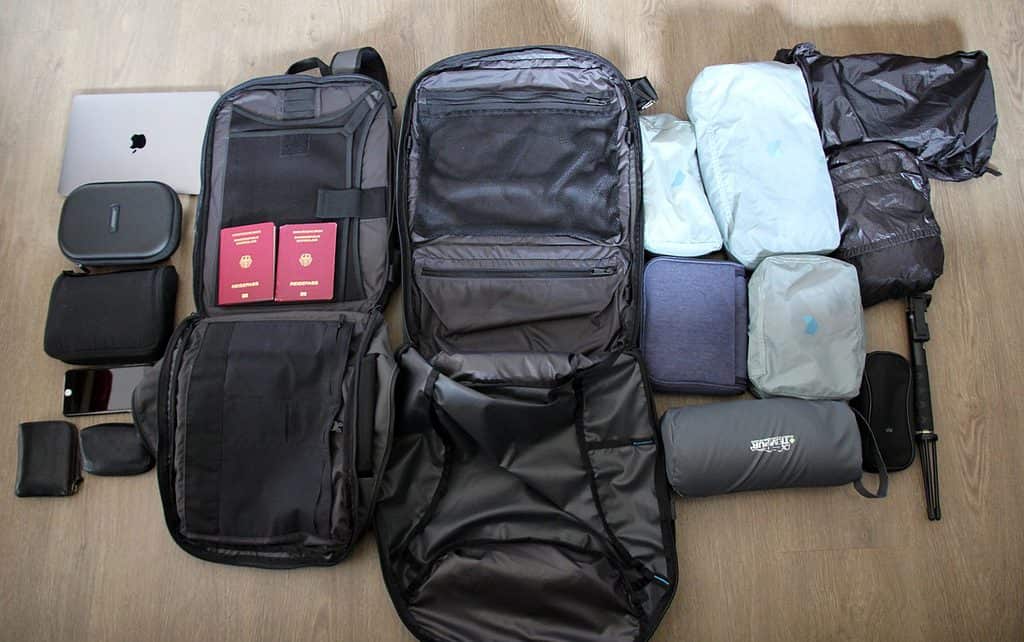
Sticking with just a carry-on when traveling with kids is a big challenge, but it’s possible. Here are some tips on how to do it.
- Pack fewer clothes but be ready to do more laundry . Most hotels offer laundry services. If there’s none available, you can use hotel sinks for washing underwear and socks. Bring a small laundry soap or packet of powdered detergent and a portable clothesline.
- Wear the bulkiest clothing on your flight . You can re-wear your clothes, especially your base layers. Choose garments made of wool as it has natural antibacterial properties and won’t smell.
- Get rid of the “I might need this” mentality. Do you really need that extra sweater, that jewelry, or an entire makeup kit?
- Limit the number of electronics you bring . Chances are, you won’t need a laptop on your holiday unless you use it for TV or working remotely. You can perform most of your online transactions on your mobile phone.
- European airports allow up to 100ml (3.4 ounces) of liquids as long as they are in a transparent plastic bag. Exceptions to this rule are prescription liquid medications, breast milk, and baby formula. If you’re traveling with an infant and have these items in your carry-on bag, inform the TSA officers.
Tips for Packing for Europe in Winter
- Layering. When you’re visiting Europe in winter, layering is the key. Pack for three layers of clothes – base, middle, and outer. Pick dark, neutral colors that match nicely with most outfits. Then, accessorize with colorful scarves. Wear heavy, bulky clothes such as jackets or coats on the plane.
- Pick accessories that give you extra protection from the cold. Keep your extremities – hands, feet, and head – warm with gloves, waterproof boots, scarves, and beanies that cover the ears.
- Go for breathable and quick-dry clothing. Nylon, polyester, and merino wool work well for travel clothing because they dry quickly and draw sweat away from the skin faster. You can hand wash them then they will be ready to wear the next day. Avoid clothes made of cotton, as this fabric absorbs moisture more and will only make you feel cold.
- Use packing cubes . Not only will they help you organize your essentials. They will also squeeze the air out of your puffier clothes so you can maximize your luggage space.

- Research the weather forecast. Europe has diverse weather, so the thick winter coat you wear in Austria may not be useable in Portugal. To avoid bringing unnecessary clothing and gear, find out in advance what the temperatures are like at your destination. You might end up not needing that extra umbrella at all.
Europe Winter Packing Checklist
- Thermal leggings or long johns (Northern Europe Only)
- Thermal shirts or singlets (Northern Europe Only)
- Zip-up fleece vests (Northern Europe Only)
- Long-sleeved shirts
- Turtlenecks
- Waterproof jackets
- Winter coats
- Winter hats/beanies
- Neck warmers
For Little Ones:
Women’s Essentials:
- Thermal base set (Only Northern Europe)
- Long-sleeved shirts or turtlenecks
- Leggings, tights, or jeans
- Dresses or skirts
- Extra shoes
- Woolen socks
- Underwear and bras
- Gloves/mittens
- Travel day pack
Men’s Essentials:
- Thermal base set (Only in Northern Europe)
- Jeans or long pants
- Waterproof jacket or coat
- Waterproof gloves
- Neck warmer
- Hat or beanie
Miscellaneous (Optional Items):
- Windproof travel umbrella
- Bathing suits
Electronics:
- Portable charger
- Universal adapter
Toiletries:
- Moisturizer
- Hairbrush/comb
- Feminine products
- Toothbrush and toothpaste
- Prescription medicine
First Aid Kit:
Essential Travel Documents:
- Credit card and debit card
- Travel Money Card
- International driving permit
- Travel insurance
- Copies of passport, IDs, tickets and confirmations
FAQs: Europe Winter Packing List
Your Europe winter packing list should include a base layer (thermal underwear), a middle layer (sweater, long-sleeved shirt), and an outer layer (jackets, long pants.) Pack accessories that keep you warm, such as beanies and scarves, and wear waterproof boots. Bring a first aid kit, toiletries, and your travel documents. If you’re traveling with young kids, you will need a stroller, feeding items, nappies, and toys.
Focus on layering and bring clothes you can mix and match. They should also be breathable and quick drying so you can wash and re-wear them the next day. To avoid overpacking, know what the weather is at your destination.
In the colder parts of Europe, people dress in warm base layers, topped with sweaters or long-sleeves shirts, thick winter coats, and scarves. Bottoms are typically form-fitting, dark colored jeans or thick long pants. For outdoor activities, they usually wear waterproof shoes and waterproof gloves.
Conclusion: Europe Winter Packing List
Winter is one of the best times to visit Europe. Planning your family trip can be fun, especially after you figure out what essentials to bring. We hope this Europe winter packing list gave you helpful ideas to make the preparation process smoother and stress-free.
You May Also Like
Can You Take Nail Polish on a Plane?
TOP Switzerland Cities for Families
Return to Homepage >>>
Sylvie Simpson
Sylvie Simpson is the founder of European Cities with Kids. For the past 6 years, she has been travelling all over Europe whenever she has the chance, both solo, for work and with her daughter. Sylvie is on a mission to help people make the most of city breaks in Europe with kids and helps over 50,000 readers per month plan and make the most of their trips in Europe with kids.
- Sylvie Simpson https://europeancitieswithkids.com/author/sylvie-simpson/ 55 Inspirational Cruise Quotes
- Sylvie Simpson https://europeancitieswithkids.com/author/sylvie-simpson/ Finland’s Nuuksio National Park with Kids
- Sylvie Simpson https://europeancitieswithkids.com/author/sylvie-simpson/ The 9 Best Switzerland Cities to Visit in 2024 [The Family Edition]
- Sylvie Simpson https://europeancitieswithkids.com/author/sylvie-simpson/ The BEST Water Parks in Poland to Visit with Kids (2024)

Europe Travel Essentials: The ULTIMATE 2024 List
Whether you’re visiting Paris in the summer or the Swiss Alps in the winter, it’s always helpful to have a guide to assist you with packing. I know if I didn’t use a Europe travel essentials list, I would probably forget everything from my passport to my suitcase.
During my years of traveling, I have been creating this comprehensive list of everything I personally own and use on my travels, and I would never recommend anything I don’t believe in. So, you can feel confident that I have tried and tested ALL of these products, and continue to use them on every trip I embark on!
If you are planning a trip and are researching “packing lists” or “essential travel items”, you’re probably going to find dozens of articles all stating the 30 items you absolutely must buy before traveling … and that is simply not true.
You don’t need to go out and spend a ton of money on items that you either won’t use at all or will only use once then forget about upon your return. I have linked to only 5 items below, and I can promise you that they will vastly improve your travel experience and you’ll use them time and time again.
While this list is mainly geared towards European travel, many of these items still come along with me on my travels all over the world. So, even if you aren’t going to Europe, this list is still very versatile. But if you are, be sure to check out my Greatest Tips for Traveling to Europe for the First Time !
Happy Travels!
Your FREE Travel Essentials Checklist is Here!
Get the ultimate travel checklist for your next trip abroad!
What are the Basic Travel Essentials?
When it comes to packing for a long trip, it’s very easy to get overwhelmed and forget even the simplest of items. That’s why I’ve created this basic Europe travel essentials list!
Europe Travel Essentials: Clothing

* Quantity will vary based on season of destination and length of travel
Europe Travel Essentials: Toiletries

* Prescriptions and medications must be accompanied by a letter from the doctor or prescriber for TSA approval
Europe Travel Essentials: Personal Items

Carry-On Europe Travel Essentials

Now, it may seem simple enough to pack a carry-on bag, but there are a few things you really don’t want to miss. Unfortunately, airlines make mistakes sometimes and you could end up without your checked bag for the first couple of days (or more!) of your vacation.
To prevent ending up in Spain without a bathing suit or Norway without a jacket, be sure to follow these simple tips on your next trip abroad!
✔️ Always pack an extra set of clothing in your carry-on bag
This way, if your checked bag gets lost, you won’t be stuck in dirty clothes that you were stuck on an airplane for hours in.
This could also help you save a bit of money since you won’t have to buy any clothes at your destination while you wait for your bag to be returned to you!
✔️ If it’s cold in your destination, always keep your coat with you
I’ve fallen victim to the classic “I’ll just throw my coat in my bag, it’ll be comfortable on the flight” mindset, then they lost my bag and I ended up wandering around Germany for a few days in March with nothing but a few long sleeve shirts.
Running from store to bar to restaurant in 40 degree (Fahrenheit) weather made for some great laughs, but keeping my coat on my person would have saved me from catching a cold.
Likewise, if you’re hitting the beach in your destination, keep a change of clothes plus a bathing suit and sandals in your carry-on. Since most hotels provide towels, you won’t even notice your bag is missing!
✔️ Be prepared for an overnight
This means a travel-sized toothbrush and toothpaste, a mirror and a small amount of makeup, deodorant, your phone charger, and whatever else you feel is essential to spend a night in a new destination.
Just remember to keep it light and only pack what you will need.
What Should I Not Forget to Pack on my Europe Travel Essentials List?

Outside of your Europe travel essentials list, there are a few items I highly recommend keeping room in your suitcase for! For me, travel is all about the experience. I love becoming fully immersed in new places, cultures, cuisines… you get it.
But, over my years of traveling around the world, I have found that ripping through my suitcase for that one shirt I wanted to wear and wasting money on purified water because I didn’t have a reusable water bottle with me negatively affected my travel experience.
So, after tons of research and years of testing out different products, these few items are the only ones I bring with me everywhere I go now.
I can personally say I have tried and tested each of these products, and would never recommend you anything I don’t believe would truly improve your travel experience.
Packing Cubes
To stay organized during my travels, I always pack everything in packing cubes . They come in fun colors and have a see-through mesh lining on top so there is no guessing where your favorite shorts might be.
They come in different sizes, allow for you to choose different amounts of cubes, and they even come with bags for your shoes! This is my all-time top Europe travel essentials list item.
There are several companies that make packing cubes, but I highly recommend Veken since theirs are made of waterproof fabric, are durable and extra thick so they won’t rip or tear easily.
I made the mistake of buying a cheap pair when I was first trying them out and they ripped before I landed in my destination… hence, go with Veken and save yourself the headache!

Reusable Water Bottle With A Filter
If you have traveled to a 2 nd or 3 rd world country before, it’s likely you have tasted water that wasn’t necessarily great for drinking… most travelers will know what taste I’m talking about. Even in Europe, there is a need for a reusable water bottle, especially if you plan on traveling further east of Germany.
While a normal reusable water bottle is great for the environment and helps save you some money, it isn’t very useful if the water you are putting into it is dirty. Unless you plan on boiling all of your water then waiting for it to cool, then you’ll want one with a filter.
This reusable water bottle with a built-in filter is my absolute favorite and never leaves my side whether I’m in Europe, the Caribbean, or the Galápagos Islands!
Mini Travel Bottles
I can’t say enough how much money these bottles have saved me. Retail stores love selling convenient mini lotions, shampoos, conditioners, face washes, etc., at a significantly higher markup than their larger bottles. Why?
It’s convenient for the buyer to not have to check a bag because of the size of their liquids. So, in the end, the buyer thinks they’re saving money by only spending a few extra dollars on travel-sized bottles versus checking a bag.
For a single week-long trip, you can spend upwards of $15 on travel-sized lotions, etc. So, by buying a reusable pack of TSA-approved bottles, you only make one purchase that will last for all of your future trips.
These mini travel bottles in particular are my favorite because they are already labeled for me so you don’t have to worry about putting lotion in your hair or soap on your legs after you’ve already showered!
They come in fun colors and also come with their own clear, travel-approved case which makes them easy to fly and get through security with, as well.

Universal Travel Adapter
If you plan on traveling outside of the U.S., this is absolutely essential. Not having the right adapter can actually be dangerous and can increase your chances of starting a fire.
This universal travel adapter is my personal favorite because it’s well made and the small, moveable parts don’t get stuck when you try to convert it for a different country.
The U.S. uses 110 volts to power appliances and such, whereas Europe and the U.K. use around 220 volts. Outlets will vary depending on the country, so a universal travel adapter should definitely be included on your Europe travel essentials list.
This one also comes with 4 USB hookups allowing you to charge multiple phones or cameras at once!
Power banks are great for when you are on the go and don’t have much time to go back to your hotel and charge up your phone while sightseeing. If you’re like me and use your phone for everything from Google Maps to your main camera, then this power bank will be your backup for when your phone dies.
It’s super lightweight, slim fit, charges quickly, and is adaptable to almost any device!
If you’re flying in the very back of economy with no outlets (this is where you’ll find me on all of my flights), then this power bank is a lifesaver when you land you realize your phone iPod, phone, or camera battery is almost dead. It’s also great for long car, bus, train, or ferry rides!
Easily one of the most important items on this Europe travel essentials list.
Essential Packing Tips

Looking to get the most out of your new packing cubes? We’ve got some great tips to help!
✔️ Be sure to roll your clothes
This means carefully folding your clothes until their all tucked together, then rolling them up into a neat cylinder-shaped roll.
This helps limit wrinkles, allows you to fit more clothes in your packing cubes, and keeps everything neat and tidy.
✔️ Plan your outfits
Overpacking is a quick way to add on weight limit fees and become frustrated with the amount of clothes you’ll have to go through to find what you’re looking for.
Instead, check the weather, plan your outfits ahead of time, and roll them together for easy-to-grab convenience!
✔️ Separate your shoes from your clothes
If you purchased the Veken packing cubes above, then you’re in luck! The set comes with a travel bag just for your shoes and you won’t have to worry about getting your clothes dirty.
✔️ Pack a laundry bag or designate a packing cube for dirty clothing
Especially if you are traveling for more than a few days, dirty clothes can start to smell.
Bringing along a plastic bag to put dirty laundry in and then zipping it up inside its own packing cube can prevent the rest of your clothes from getting smelly, and keep you from wondering which socks are clean and which are dirty.
✔️ All liquids that go through TSA must be 3.4 ounces or under
This includes beverages, lotions, gels, liquid foundation, and perfumes that may be packed inside your carry-on bag. Larger liquids may be packed inside checked bags.
✔️ In addition to the size requirement, there is also a liquids limit
All of your carry-on liquids must be able to fit inside of a clear, quart-sized ziplock bag without bursting open.
✔️ Before packing your life away, be sure your suitcase is the right size
If you are flying economy, you’re typically allowed one personal item (purse, camera bag, or small backpack) and a carry-on. Carry-on bags must meet certain size requirements.
For example, United Airlines requires them to be a maximum of 9 inches x 14 inches x 22 inches (22 centimeters x 35 centimeters x 56 centimeters), including the handles and wheels. This will vary between airlines.
✔️ Keep all of your wires neatly folded and in a zipped-up case
Headphones, phones, cameras, and laptop chargers should all be tied together with elastic bands, then sealed in a zippered case of some kind. Be sure to include paper clips and twist ties on your Europe travel essentials list for this very reason!
This will prevent them from getting torn in zippers, lost in your luggage, and from taking over your purse, backpack, or suitcase.
✔️ Softer bags are better
You may think that your hard suitcase can survive any tossing from the crew below deck, but unfortunately, that’s not true.
Hard suitcases are far more likely to break during travel. Softer duffel bags can squeeze into tighter overhead spaces, under the seat in front of you, and can handle far more falls to the ground before ripping or tearing.
✔️ Never lock your suitcase before getting to the airport
If you have a suitcase with a built-in lock, keep it unlocked until after you land in your destination.
If your checked bag gets selected for an extra security check and they must get inside, they don’t come to find you on your plane… they simply break the lock open, ruining your bag.
So, you’re probably thinking, “what is the point of having a suitcase with a lock on it then if it can’t get locked until it is with me at all times?” Exactly.
Don’t buy these suitcases unless you plan on putting your travel insurance to the test on your next trip.
Things to Prepare Before Traveling
After you pack and before you hit the road, there’s usually a whole list of items that still need to get done.
From preparing your house to be empty to calling your credit card companies, be sure to make time to complete everything on this list that pertains to you!
Set Up Your Home For Your Absence

Whether you are leaving for a long weekend or a few months, there are certain steps you need to take when preparing your home to be vacant while you’re gone.
First, if it’s summer and you plan on leaving for over a week, you may want to hire someone to mow your lawn while you’re gone so you don’t come back to a jungle in your front yard. If it’s winter, having someone snow blow your driveway would also be helpful if there’s a storm while you’re away.
Also, if it’s winter, be sure to leave your heat on low! Turning off your heat entirely can lead to burst pipes and flooding… not what you want to find after hours of traveling back home.
Next, if you have any pets at home that need caring for, be sure to hire a pet sitter well in advance. I have a dog and I book our pet sitter typically 3 or 4 months before leaving for our trips!
Similarly, if you have a large garden that needs to be periodically watered , asking a neighbor for a helping hand isn’t a bad idea.
As for the indoors, unplug everything that doesn’t need power running to it . This includes toasters, microwaves, extra chargers, etc. Not only will this save you a little bit of money on your electric bill, but it will reduce the risk of an electrical fire while you’re gone.
Check that the stove and oven are completely turned off , the garage door is closed , all doors and windows are shut and locked , the dishes are done , and the trash and recycling have been taken out . This will prevent you from coming home to any foul odors, leaves in your living room, rain damage, etc.
Lastly, if you are close with your neighbors or have family or friends that live in the area, asking them to keep an eye on your house always helps calm the nerves. Even in “good” neighborhoods, a house that is vacant for days, weeks, or months on end is a target for unwanted visitors.
If you can afford to do so, hiring a live-in house sitter can solve all of your problems at once and leave you with just one person to contact in the case that you have any questions or there is an emergency.
What You Should Not Forget When Traveling

It may seem obvious not to leave your passport or wallet on the kitchen counter, but it happens all the time. Including these things on your last-minute Europe travel essentials list will save you time, money, and possibly missing your flight!
Before traveling it’s important not to forget essential items like: your passport any necessary visas cell phone and charger wallet at least one paid off credit card for emergencies some currency local to your destination a government-issued photo ID your suitcase (yes, people even forget this) your camera and charger your itinerary with the confirmation codes for all of your flights, hotels, trains, ferries, buses, and excursions.
If you are traveling to a big city, you’ll most likely be able to pick up anything you forget as soon as you land. For smaller rural areas and airports, it’s going to be essential that you follow a checklist.
Typically, you’ll be able to buy clothing anywhere you go, but electronics can be difficult to find and personal belongings simply cannot be replaced.
The last thing you’ll want to make sure you have is travel insurance . I always use SafetyWing for their super affordable comprehensive plans, and unique coverage for medical emergencies, cancellations, and trip interruptions across the globe.
They have plans for both single and multi-country vacations and offer 24/7 customer assistance.
Over my travels, I have been slowly creating my travel essentials checklist so I would stop forgetting things on my trips. With it, I have saved hundreds of dollars , no exaggeration, on not having to buy replacement items in my destinations.
Now, I have sorted it into a convenient, easy-to-download pdf guide for you!
What To Do Before Traveling During COVID-19

Travel requirements are changing on a daily basis. It is very important that you use local and government websites to research COVID-19 entry and exit requirements when traveling. This article is NOT meant to be used as a primary resource for traveling requirements.
It’s unfortunate to say, but even in 2024, the COVID-19 virus is still very much present in our daily lives. Social distancing and masks are mandated in most regions across the world as are negative RT-PCR testing requirements.
If you are planning to travel in the upcoming months, there are a few things you will need to do to ensure a pleasant experience.
First, research all of the entry and exit requirements of your destination . Is a negative COVID test required? If so, what kind (RT-PCR or Rapid) and how long before arrival?
Do you need to quarantine on arrival? Do you need to test on arrival and quarantine while you wait for your results? Are there internal travel restrictions? Are masks mandated in public places?
Adhering to all of these requirements is essential to a successful trip, so be sure you know exactly what you’re getting yourself into before you plan your visit.
Second, if you do need proof of a negative COVID-19 test result within a certain timeframe of departing or arriving at your destination, be sure to book your COVID test in advance .
Tests at CVS can be booked up to 2 weeks in advance and typically provide results within 1-3 days (though result times may vary due to increases in testing volume).
Also, there is a chance that you will need to be vaccinated (and boostered) prior to arriving. Some countries have put in place vaccine requirements, and those who are not vaccinated (regardless of medical status) will not be allowed in the country.
Some countries will allow entry without vaccination with proof of medical documentation and a negative COVID-19 test result.
Lastly, you may be required to print and fill out a health form . Check with your airline and the local government before traveling. Many times, digital health forms will not be accepted.
✔️ Pro Tip: If you are planning to travel during the COVID-19 pandemic, be sure to include all of these items on your Europe travel essentials list.
Other Helpful Resources for Europe
✔️ How to Plan a Trip to Europe: The ULTIMATE Guide for 2024 ✔️ The Ultimate Europe Bucket List: 101 Experiences to Have in Europe ✔️ Packing List for Europe in Winter: A Full Country by Country Guide ✔️ Minimalist Packing List for Females Traveling to Europe ✔️ Backpacking Europe Routes for 2 Weeks: Routes & Tips ✔️ European Honeymoon Itinerary: 9 Incredible Options for 1 Week, 2 Weeks, + 1 Month ✔️ 30+ Best Places to Visit in Europe in December ✔️ 73 Best Places to Visit in Europe in January 2024 ✔️ 25 Best Places in Europe for New Years Celebrations ✔️ 30+ BEST Places to Visit in Europe in April 2024 ✔️ Is Azerbaijan in Europe? The Facts for 2024 ✔️ Is Norway in Europe? Norway & the EEA EFTA States ✔️ Is Denmark in Europe? The EU, the Danish Krone, & Its Territories Explained
The Wrap-Up: The Ultimate Europe Travel Essentials List

Whether you’re planning a 3-day vacation from Belgium to Luxembourg or a 2-week trip across Europe , having the perfect Europe travel essentials list with everything you need is key to a happy trip. We hope this one helps!
Hey there! I'm Emily Concannon, a seasoned globetrotter who has backpacked her way across over a dozen European countries, immersing myself in the diverse cultures, languages, and cuisines of the region.
My passion for travel transcends personal experiences; I've spent years learning how to transform my globetrotting knowledge into personalized itineraries for fellow travelers worldwide.
With a tally of 26 countries (and counting!) under my belt, my day job involves extensive research on different countries which often leads me to booking a new adventure every chance I get!
- About the Blogger
- About the Globetrotters
- Community Groups
- Privacy Policy
- PR & Media Inquiries
- Guest Opportunities
- Giveaways & Offers

- Best Destinations
- Explore My City
- Australia & Oceania
- Middle East
- Pregnancy Travel
- Baby Travel
- Toddler Travel
- Tween & Teen Travel
- Theme Park Travel
- Travel Health
- Travel Photography
- Flying with Kids
- Beach Vacation
- Camping, Hiking & Outdoor Adventures
- Travel Toys
- Baby Travel Gear
- Toddler Travel Gear
- Outdoor Gear
- Airline Reviews
- Accommodation Reviews
- Attraction Reviews
- Book Reviews
- Travel Gifts
- Packing Lists
- Expat Life Blog
- Expat Money Matters
- Global Parenting Interviews
- Expat Entrepreneurs
- Family Life in Abu Dhabi
- Booking Tools
Essential Winter Packing List for Europe – Perfect For Families

Are you and your family planning a winter trip to Europe but aren’t sure where to start with the packing process? We know how overwhelming it can seem, especially if you have multiple children!
Our family recently spent almost a month travelling Europe by rail, and we learned quite a bit along the way about how to pack for Europe in winter and more.
If you’d like to learn more from our experiences, check out our guide to Europe winter travel as part of our Discover Europe with kids series.
- Helpful Tips On How To Dress For Winter In Europe
- What to Wear in Europe in Winter
- Additional Essentials You’ll Need For Winter Travel in Europe
Printable Packing List for Europe in Winter
As Amazon Associates, we earn a commission from qualifying purchases made from this page.
We’ve also included a helpful printable packing list for Europe to help you check items off as you organise and pack them. Let’s get started!
Practical Pointers On How To Dress For The Cold
If there’s one thing we learned from travelling Europe with our kids, it’s the importance of dressing in layers! We quickly discovered the wide range of daily temperatures and the necessity for waterproof footwear during European winters.

The type of weather you encounter will vary widely depending on where in Europe you’re visiting, so here’s how we recommend that you prepare for the trip:
Three Layers is Key
You’ll find that you will forever adjust the number of layers you wear as the day goes on! The best advice out there is to dress in three layers for maximum warmth and comfort:
- Base Layer : The right long underwear is key for a warm and comfortable day of travel. Choose synthetic fabrics like polyester or merino wool for a natural option. Your base layer should be snug (but not too tight) and of midweight thickness.
- Middle Layer : Your middle layer’s job is to keep you warm – think puffy down jackets and heavyweight fleece. Considering the amount of rain, sleet, and snow you’ll likely encounter, we suggest a puffy coat with synthetic filling – it’s better for damp conditions. And don’t forget your legs! Fleece or insulated pants will keep your lower half warm while sightseeing.
- Your outer layer needs to protect you from the elements and keep you as dry as possible. Choose a shell jacket that’s waterproof, not merely water-resistant! A breathable waterproof shell jacket is the best choice. You’ll also want a pair of shell pants to keep your legs dry and warm.
Cover Your Extremities
Protecting your head, hands, and feet is essential for staying warm in cold weather. Choose hats, gloves, and boots that do the same thing as your layers – keep moisture away, insulate, and protect you from wind and rain.
Merino wool or synthetic beanies, scarves, waterproof insulated mittens, and waterproof boots should all be on your Europe winter packing list.

Avoid Cotton Fabrics
We don’t have anything against a good cotton shirt, but we don’t recommend wearing cotton layers when packing for Europe in December. This type of fabric tends to soak up moisture (a no-no for layers!) and takes a long time to dry out. The last thing you want is to get wet early in the day and shiver your way until dinnertime. Not only will you be cold and miserable, but you’re also more likely to become ill.
Europe Clothing Packing List for Men, Women, Kids
What to wear in europe for winter.
Here’s what we recommend you include on your winter packing list for Europe:
Base Layer Set

Pack several sets of base layers for each person. This option is great for kids because they can choose many colors and patterns. A merino wool top and pants like these are excellent options for women and have corresponding sets for men .
Under Layers

I also packed a few pairs of fleece-lined tights for our trip so that I could wear them with slightly dressier outfits. For example, these work nicely with a sweater dress for a night out to dinner.
Lightweight Sweaters

Depending on how long your European winter trip is, pack 4-5 light long-sleeved shirts and sweaters. There are many cute sweater options out there for women, and we love these warm fleece pullovers for kids .
Jeans/Pants

It’s always a good idea to pack a pair of jeans or two, and make sure to include some dress pants or slacks if you plan on going somewhere fancier while on your vacation.
Waterproof pants

Waterproof pants , or rain pants, are essential for hiking, exploring Christmas markets, and walking in the city. They keep your underlayers nice and dry and don’t add much weight to your suitcase. These Mountain Warehouse rain pants work for both boys and girls, and they’re very affordable.

We can’t emphasize enough how essential warm socks are to your family packing list for Europe! You can find very affordable packs of merino wool socks for women and men, and you can find options for kids in fun prints and colors .
Warm Mittens/Gloves

Warm mittens definitely make our list of essentials for European travel in cold weather ! Our children loved these convertible fingerless gloves because they had mitten covers that they could slip on and off. In hindsight, however, we would have chosen something a bit more waterproof. These waterproof gloves keep your hands toasty warm and you can still use your phone to take pictures, so that’s a plus.
Waterproof Boots

There’s nothing more miserable than being forced to walk for hours with wet, cold feet. That’s why we recommend a quality pair of waterproof boots you can wear comfortably for extended periods of time. Timberland boots have always worked well for us because they aren’t as bulky
Warm Winter Coat
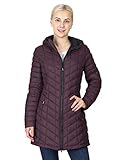
A waterproof winter jacket is essential to include on your winter packing list for Europe. Choose one that’s breathable and filled with synthetic down if possible. This lightweight puffer coat compresses well for packing, and the Helly-Hansen Men’s Dubliner is also an excellent choice.
Waterproof Jacket

Aside from your winter jacket, we also suggest packing a waterproof jacket for rainy days that don’t necessarily warrant a heavy winter coat. We love this reversible waterproof windbreaker as an option for kids!
Hats/Beanies

Keeping your head warm in frigid weather is incredibly important, so pack a few merino wool beanies for each family member. We also acknowledge how hard it can be to keep a winter hat on a small child or baby, so we recommend this waterproof aviator option for kids.
Snood/Neck Warmer

Given how much you’ll need to pack for a winter trip to Europe, we recommend packing neck warmers instead of scarves. They take up less room in your suitcase and travel pack, and it’s easier to keep track of them.
Bathing Suit

Hear us out! Yes, we know you’re traveling to Europe in winter, but if you plan on staying at any hotels with indoor heated pools, your kids will love the opportunity to splash around after a day of excursions. Even better if there’s a hot tub for you to soak in!

A pair or two of cozy pajamas should be on every European winter packing checklist! This is especially true if you’re traveling with children, as there are bound to be a few “accidents” along the way. On that note, it’s also wise to check whether your accommodations will have a washing machine.
Versatile Dresses

If you enjoy wearing dresses, pack a few long-sleeved options to layer with leggings and boots. They’re nice for a night out to dinner or a concert while you’re on vacation.
Winter Packing Especially for Babies & Toddlers
- Travel Stroller w/Rain Guard : If you’re traveling with a toddler or baby in tow, a travel stroller is a must for your family packing list for Europe. We’ve researched several excellent lightweight and compact travel strollers to suit your family’s needs.
- Travel-Friendly Baby Carrier : If you want to keep your bub close for warmth and protection, add a travel-friendly baby carrier to your list. Many soft structured baby carriers and wraps break down nicely for travel and packing.
- Travel Diaper Bag : You might want to avoid bringing your regular diaper back on your winter trip to Europe, so a travel diaper bag is always an option. Or you can put diapers, wipes, and other essentials in your travel day pack.
- Portable Bottle Warmer : Mums everywhere know the importance of having warm breastmilk and formula on hand, and this can get somewhat tricky when traveling with your bub. A portable bottle warmer doesn’t take up much room in your travel bag, and many options just need hot water to work.
- Portable Monitor : A portable baby monitor might not be necessary if you and your family plan to stay in one hotel room. However, it does come in handy if you’re renting an Airbnb or similar accommodations and want to keep tabs on your bub while they’re sleeping in another room.
- Travel Toys : Anyone who’s been on an airplane filled with fussy toddlers can verify that a bored and tired bub is a cranky one. Packing a few entertaining travel toys can both entertain and soothe your child during flights and train rides to and from your destinations.
Diaper Changing Kit

Becoming stranded on a day trip or excursion without a diaper-changing kit was always our worst parenting nightmare! This portable diaper changing pad has all you need to keep everything dry and mess-free on your trip.
Wearable Blanket

If you’re concerned about your bub staying warm enough on your European winter trip, consider bringing along a wearable blanket . They’re a great additional layer in cold weather and double as an extra blanket during naptimes.

Keep your baby soft and snuggly warm while out and about with a bunting or snowsuit . We suggest a baby snowsuit with built-in mittens and footies, as it just makes everything that much easier!
Fleece Rompers

If you’re traveling to Europe with a baby, then fleece rompers are an essential item on your winter packing list. They do the job of a shirt, pants, and socks and take up less room!
Warm Booties

Babies can’t easily regulate their own body temperature, so keeping their extremities warm is incredibly important. A few pairs of warm baby booties will help protect your bub’s little toes from the cold weather.
Stroller Footmuff

Another option to protect your little one from rain, sleet, and snow is a stroller footmuff . Several universal stroller footmuff options easily slip over your stroller and have a fleece interior to keep baby snug and warm against the elements
Toiletries and Hygiene
- Sunscreen – yes, for many, this is still necessary even in winter!
- Lip Balm – dry lips can be particularly troublesome in the cold
- Toothbrush & Toothpaste
- Shaving Products
- Contacts/Glasses, Contact Solution
- Body Lotion (for dry skin)
- Nail Clippers
- Multivitamins/Vitamin C
- Your Usual Prescription Medications
You can find our complete guide to family toiletries, medicines, and first aid items you should consider packing over here
Other Essentials You Will Need For Winter Travel In Europe
- Passports/ID card
- Bookings/reservations printed out
- Lift Tickets/Passes
- Travel Insurance

GPS Tracker Watch

Wallet – Neck Wallet

Camera/GoPro

First Aid Kit

Rechargeable Hand Warmers

Travel pack of tissues

Small Portable Charger

Electronics Case

Universal Power Adapter

Jet Lag Relief Pills

Windproof Travel Umbrella

Prepaid Europe SIM Phone Card

Packing Cubes

Quick-Dry Travel Towel

Hanging Toiletry Bag


Travel Daypack

Activated Charcoal

Motion Sickness Patches

Moisturizer

Travel Journal

Tripod & Wireless Remote

Extra Memory Cards

We hope you’ve found some helpful tips in here packing for your European adventure with kids.
All subscribers to Globetrotter news can receive our ultimate family packing list completely FREE! All we will ask for is a signup email, and you may receive some occasional inspirational newsletters from us during the year.

Further Reading
If you’ve found this winter packing list guide for Europe helpful, you may also want to check out next:
- All our top tips for European travel in winter – from keeping track of your kids in the crowds to tackling the Christmas markets
- We share with you here our complete Europe rail itinerary with kids , plus more inspiring European destinations to visit in December with family
- Skiing in your Europe plans? There are a few more essentials you’ll want to pack, check out our family ski packing list and the best family-friendly ski resorts in Europe .
- If seeking out the winter sun is more your thing, we have you covered there, too with the warmest destinations to visit in Europe over winter .
- Looking at a sunny escape instead? You’ll want our complete guide to packing for a vacation at the beach – with a printable checklist
- Feeling brave enough to try winter camping? All our top tips for camping in the winter months , plus our guide to camping in the desert and what to pack – the perfect outdoor winter escape in the Middle East if cold and snow is not your thing!
Helpful? Bookmark this page or save it to Pinterest for later

Disclosures: This page contains affiliate links to our preferred suppliers, which earn us a commission if a qualifying purchase or booking is made. You can find our full disclosures, privacy policy, and website terms of use here .
© Our Globetrotters | Feature Images CanvaPro
Like it? Share it!
Leave a Reply Cancel reply
Your email address will not be published. Required fields are marked *
Save my name, email, and website in this browser for the next time I comment.
This site uses Akismet to reduce spam. Learn how your comment data is processed .

Join the Expat Explore family!
We’ll deliver top travel tips, insider info and travel inspiration right to your inbox.
By submitting this form you agree to our Privacy Policy .
Where to go

Get prepared to travel

Travel Europe on a Budget
The Savvy Backpacker
City Guides .\33 a132798-3f3b-4585-954d-7e70cf863447{fill:#231f20}
Europe packing list | the ultimate packing list for visiting europe.
The ultimate Europe packing list. Advice for choosing clothes, toiletries, shoes, electronics, luggage, and more for Europe.

Packing for your trip to Europe can be stressful so I’ve put together my Europe packing list . This mega packing list will cover everything from clothes and luggage to electronics and toiletries. I’ve even tried to include specific packing tips for summer travel and winter travel.
Interested in packing tips for backpacking Europe? We’ve created a Backpacking Europe Packing List For Women and Backpacking Europe Packing List For Men .
Europe Packing List
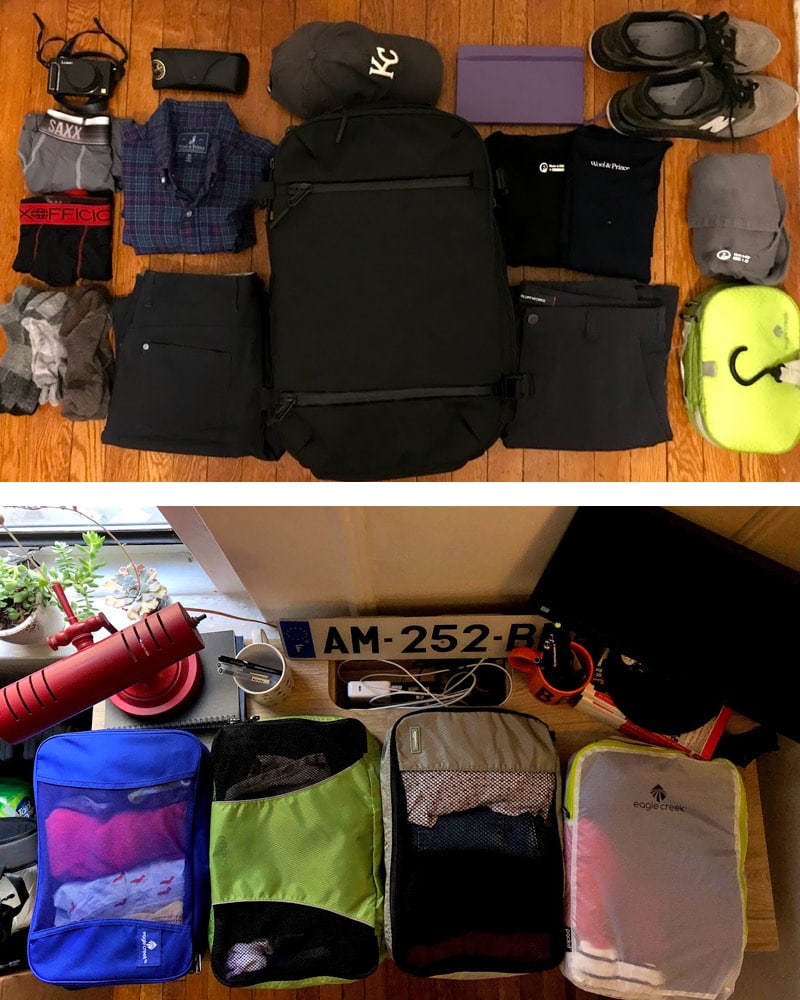
This Europe packing list is very extensive so here is a quick rundown of what you’ll see in this guide. Keep reading to see everything.
Rolling Luggage
- Travel Backpacks
Packing Cubes
Packing folders.
- Toiletry Bags
Travel Underwear
- Travel Socks
- Shoes For Travel
- Shirts & Tops For Travel
- Jeans, Pants, & Bottoms
- Outerwear For Travel
- Winter Clothing
Travel Towel
- Travel Flashlights
- Eyemask & Earplugs
- Water Bottle
- Sleep Sheets
- Travel Laundry
Travel Utensils
- Electric Plug Adapters
Travel Power Strip
- Phone Chargers
Digital Camera
- Travel Hairdryer & Straightener
- Shampoo/Conditioner/Body Wash
- Toothpaste & Toothbrush
- Travel Toilet Paper
- Wet Wipes/Baby Wipes
- Body Powder
- Pepto Tablets
Europe-Friendly Luggage
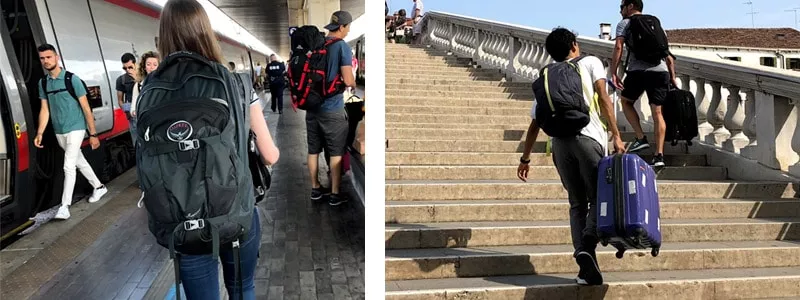
The type of luggage you choose will have a major impact on your travel style.
You essentially have two choices — a wheeled suitcase or a travel backpack . Either option is perfectly fine but both have their positives and negatives (which we’ll cover in this section).
Before I talk about luggage, I want to reiterate the idea of packing light because traveling light makes moving around easier and more enjoyable.
Rolling luggage is the most popular style of luggage for traveling in Europe. It offers a lot of benefits but it’s not always right for everyone.
Rolling Luggage Benefits
- Weight Isn’t a Huge Concern: You don’t have to worry about weight as much since you’re pulling your bag. This can lead to overpacking — which will make carrying your bag up and down staircases and into luggage compartments more difficult.
- No Back Pain: Not everyone can strap on a heavy backpack so rolling luggage is much more ideal in these cases.
- Rugged: A quality suitcase can take a bit more punishment than a backpack because they’re designed to be thrown around a bit.
- Ideal For Door-to-Door Travel: If you plan on taking taxis from your hotel to the airport/train station then traveling with a suitcase makes sense.
Disadvantages of Wheeled Luggage
- Cobblestones: Wheeled luggage is great on flat surfaces but becomes unwieldy on stairs and cobblestone streets.
- Stairs: While hotels might have elevators, most rental apartments and hostels might have quite a few stairs.
- Public Transportation: Not all public transportation in Europe has escalators or elevators. A large suitcase will be unwieldy when you have to lug it up a bunch of stairs. Additionally, public transportation tends to be crowded, so pulling a big suitcase through a mob of people can be difficult.
- Not Hands-Free: You’ll lose the ability to use both hands when you’re wheeling your suitcase around — which will impact the ease of travel.
Features of Quality Rolling Luggage
- Hard-Shell or Soft-Sided: Soft-sided bags tend to hold up better than hard-shell bags and they also fit into overhead bins much easier because they’re more flexible. They can be thrown around without much chance of major damage. Hard-shell bags are normally much lighter than soft bags, but there is a larger chance the bag could crack. However, a hard-shell bag will keep the things inside your bag safer since it has more structure — so a hardshell might be best if you’re traveling with a lot of fragile things.
- Two Sturdy Wheels: Those four-wheeled rolling luggage are great on flat smooth surfaces but get eaten up by Europe’s streets. Look for bags with two sturdy wheels.
- Size: If you’re planning to carry on your luggage then you’ll want to ensure it fits those requirements — especially if you’re traveling on Europe’s size-stingy budget airlines. Not carrying-on? Try limiting yourself to a reasonably sized backpack that you can handle without assistance.
- Color: A non-black bag will help you recognize your bag more quickly at the baggage claim. If you do have a black bag, we suggest using a distinctive luggage tag or luggage strap to help prevent other people from accidentally taking your bag (it happens more often than you think).
Travel Backpacks For Europe
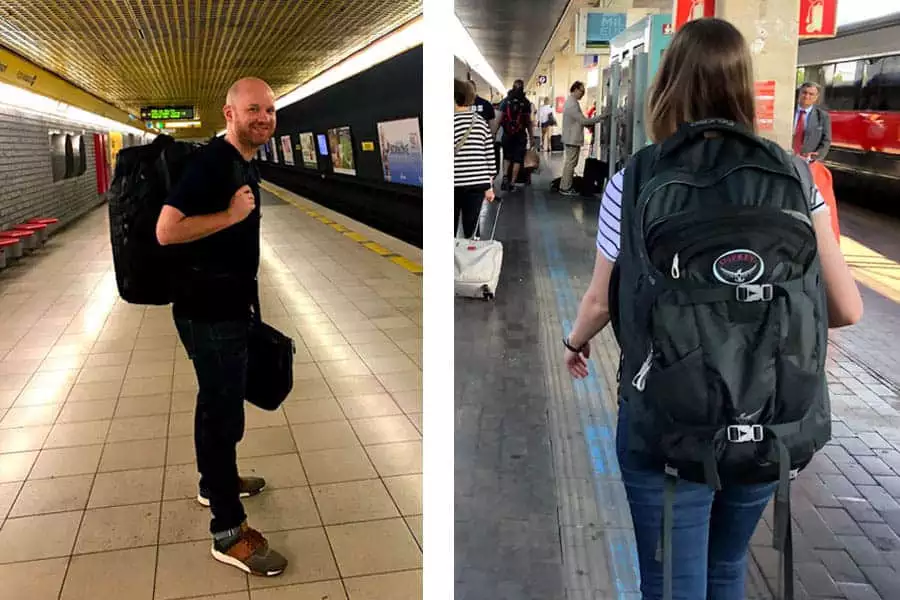
I’m a big fan of travel backpacks and it’s my preferred luggage choice. However, they’re certainly not for everyone so I’ll cover what to consider before buying a travel backpack.
Check out my guide to the Best Travel Backpacks and the Best Carry-On Backpacks .
Benefits of Travel Backpacks
- Mobility: Easily navigate crowded streets and public transportation since all your stuff is on your back.
- Hands-Free Travel: Traveling with two free hands makes your life much easier and more enjoyable.
- Navigate Stairs & Streets: You won’t have to worry about stairs or cobblestone streets with a backpack.
- Less Stress: We find that our stress levels go down when we use a backpack since we don’t have to worry about knowing where our stuff is.
Disadvantages of Travel Backpacks
- Uncomfortable If Overloaded: A travel backpack will be uncomfortable if you overpack.
- Checked Luggage: If you have to check your backpack when flying, you must be cautious because the conveyor belts can sometimes rip off the straps of the backpack You’ll have to take extra precautions when checking your bag (or get a backpack that has stowable straps).
- Must Fit Well: It is important to get a backpack that fits your body well. If not, it can quickly become uncomfortable.
- More Difficult to Pack: Most modern travel backpacks open up like a standard suitcase so they’re easy to pack but some ‘hiking’ style bags only open from the top.
- Back Pain: Even a well-packed can start to cause back pain so it might not be great for people with mobility issues.
Features Of A Great Travel Backpack
I’ve written multiple guides about finding the perfect travel backpack. Here’s my Guide To Choosing The Perfect Travel Backpack and a list of my favorite backpacks traveling Europe .
Recommended Travel Backpacks and Rolling Luggage
Travel Backpacks We Like:
- Osprey Farpoint and the Osprey Fairview
- Osprey Porter
- Tortuga Outbreaker , Setout , and Setout Divide .
Rolling Luggage We Like:
- Osprey Transporter , Osprey Ozone , and Osprey Sojourn
- TLS Mother Lode Wheeled Duffle
- Eagle Creek Expanse Drop Bottom Wheeled Duffel 32
Where To Buy Travel Backpacks and Wheeled Luggage
There are a lot of places to purchase luggage and travel backpacks. Here are a few of our favorites:
- Amazon — Amazon has everything.
- Zappos — Zappos doesn’t always have every brand/model of luggage but they have free shipping and super easy free returns in case your bag doesn’t fit you correctly.
- REI — REI has a decent selection of luggage and their selection of travel backpacks is very solid.
Get Organized For Traveling Europe
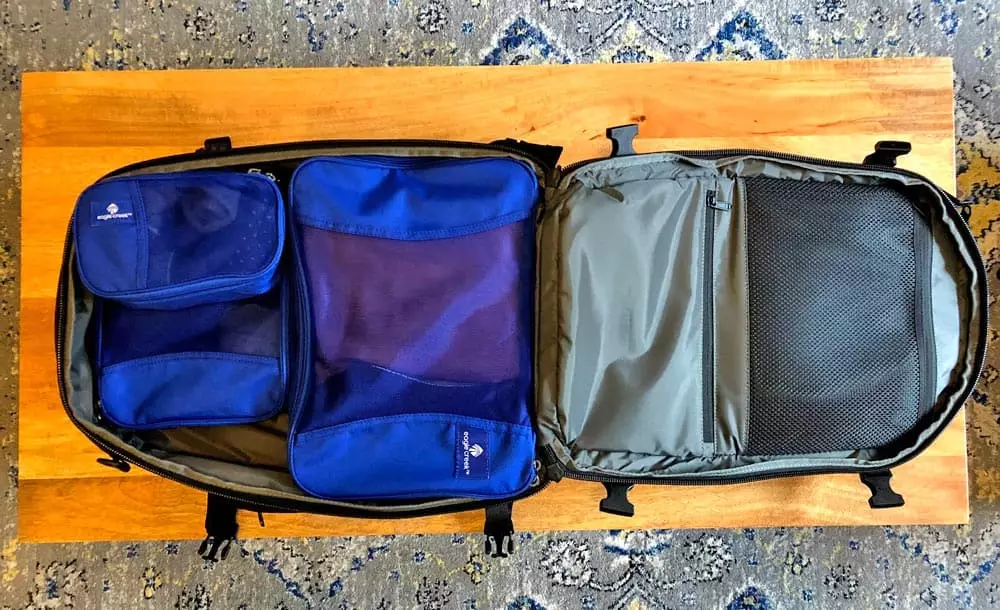
Life gets a little more complicated when you’re living out of a bag but worry not… I’m here to help.
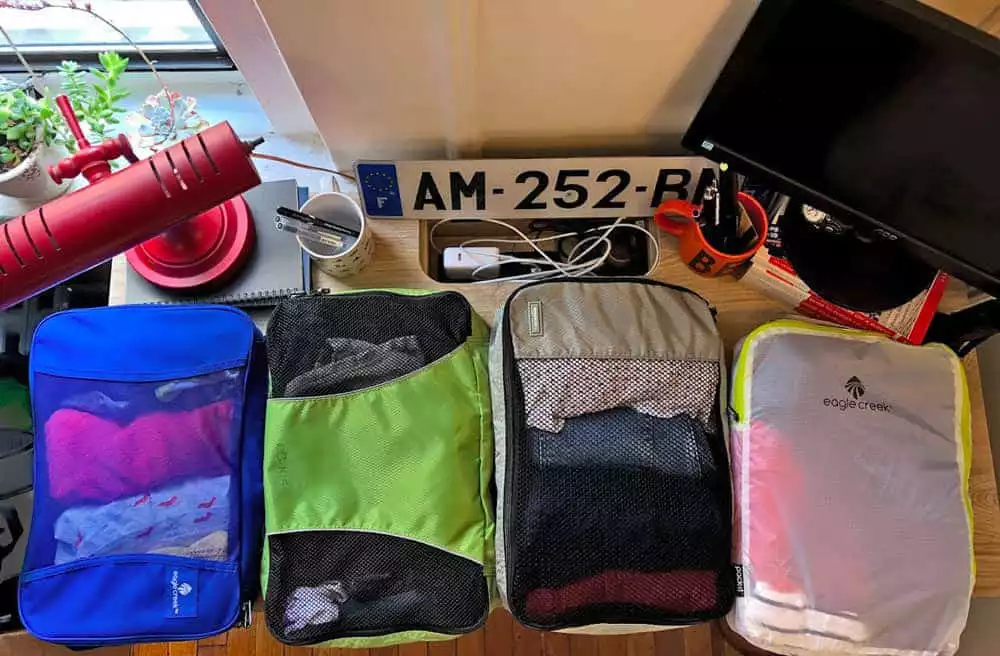
Behold the magical packing cubes.
They may not look like much but these simple travel accessories make packing so much easier.
The idea behind packing cubes is simple — you divide your clothing up between different cubes (socks in one cube, underwear in another cube, etc.). This keeps all your clothes compressed and organized.
This way you can quickly grab what you need. And these make repacking all your stuff easy as well since you know where everything goes.
As an added bonus, packing cubes can also help reduce wrinkles by preventing your clothing from shifting around in your bag. And the compression lets you fit more stuff into your luggage.
There are a ton of companies that make packing cubes but here are a few of our favorites:
- Eagle Creek Pack-It Cubes (best overall)
- eBags Packing Cubes (close second place)
- Eagle Creek Spectre Tech Packing Cubes (ultra-lightweight favorite)
- AmazonBasics Packing Cubes (best budget option)
Learn More: Read a more in-depth review of the best packing cubes .
We don’t personally use packing folders but they’re a popular travel accessory. Basically, packing folders are designed for larger items like dresses, button-up shirts, and pants.
We recommend Eagle Creek Packing Folders — which cost anywhere from $16-$25 depending on size (via Amazon ).
Hanging Toiletry Bag
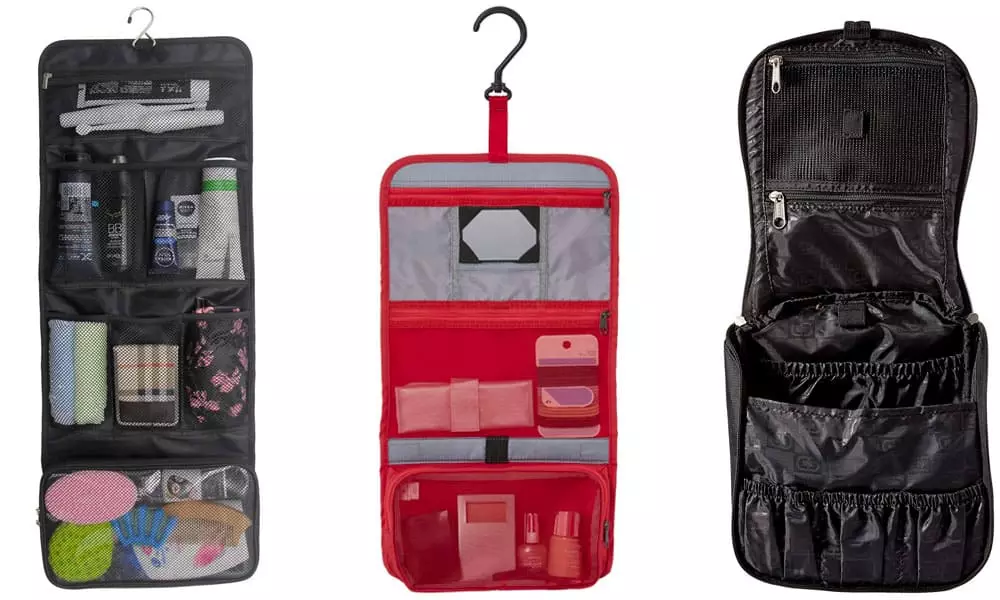
A toiletry bag is essential for keeping all your toiletries contained.
Do yourself a favor and buy a toiletry bag with a hook so it can be hung up since most European bathrooms have little/no counter space. There are a bunch of different bags available on Amazon but here are a few popular travel toiletry bags:
- The Ogio Doppler Kit (via Amazon ).
- The Lewis N Clark Hanging Toiletry Case (via Amazon ).
- Eagle Creek Toiletry Kits (via Amazon ).
- TANTO Toiletry Bag (via Amazon )
Other Helpful Organization Aides
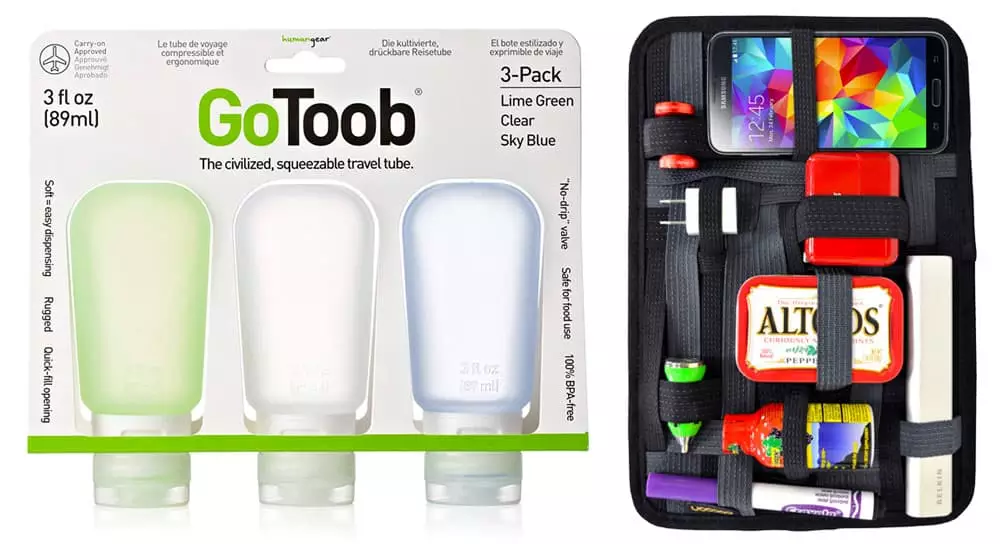
- Humangear GoToob Travel Bottles are probably the best travel bottles for shampoo and other liquids/gels. They are a little expensive ($17-$25 for a set) but they don’t leak. There are multiple sizes so check Amazon to see what works best for your needs.
- The Grid-It Organizer is a handy way to keep all those electronics and wires in order. They cost about $15-$20 and come in different sizes (via Amazon ).
- A compression stuff sack is nice for keeping dirty clothes away from your clean clothes, and it serves as a good bag for doing laundry. Multiple companies make them and they run about $10-$40 depending on the size (via Amazon ).
- Ziploc bags come in handy for storing multiple things and keeping liquids from spilling over all your stuff (I like to keep my passport in a plastic bag for safekeeping). Ziploc makes multiple sizes of bags, so I like to pack multiple bags just in case I ever need one. There is even a three-gallon bag that works well for storing an extra pair of shoes so you don’t get your clothes dirty.
Travel Clothing Packing List
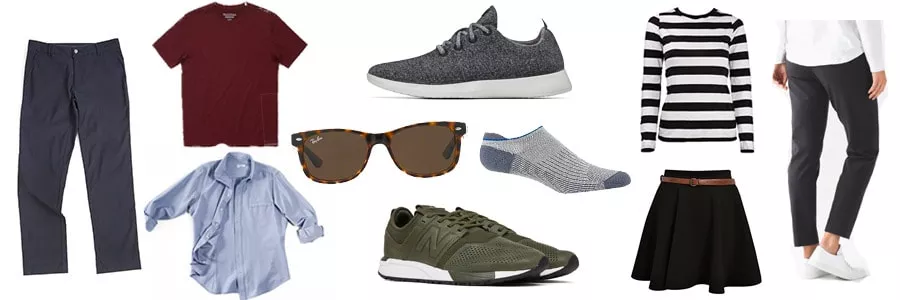
The majority of the weight in your luggage will come from clothing so it’s important to limit your clothes if you want to travel light. Of course, this is easier said than done.
In this section, we’ll help you choose which types of clothes to pack, some general tips for packing light, and packing tips for all seasons (summer, fall, winter, and spring).
Efficient Clothing Packing Tips
- While it might be a bit boring, it is usually easiest to pack mostly dark colors since they’re the easiest to coordinate. Additionally, dark colors do a better job of hiding stains than light colors.
- Avoid Single Wear Clothing: Don’t bring anything that you’ll only wear once because it’s not worth lugging around for your entire trip. Choose pieces that can be worn for a variety of occasions.
- High Maintenance is No Good: You’re going to be wearing your clothes a lot so you want things that can take a bit of punishment and is machine-washable
- Accessorize: You’ll probably get tired of wearing the same thing all the time so throwing in a few accessories (hats, scarves, sunglasses, etc.) is a good way to change up your outfit.
- Buy Clothes as You Travel: We know a lot of travelers who only bring the bare minimum of clothing and then buy new stuff as needed.
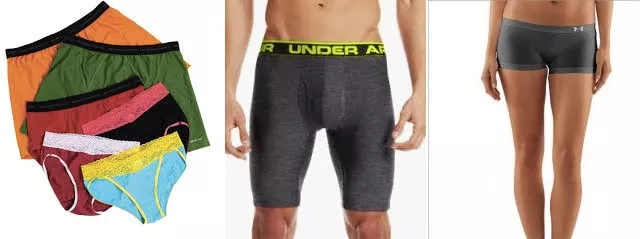
I’m a big fan of travel underwear — mainly because you can easily wash them in the sink and they’ll dry in a few hours. They’re also designed to be more comfortable when you’re traveling all day. When you’re searching for travel underwear, look for the following things:
- Furthermore, cotton can take well over 24 hours to air dry — which makes it a pretty poor choice.
- Cotton does the exact opposite — it retains sweat and it leads to that “swampy” feeling we’ve all experienced.
- Odor Control: The best travel underwear helps manage odors. Cheaper synthetic underwear will start to smell pretty quickly but the higher-quality synthetic fabrics will do a better job. We’ve found that fine Merino wool does the best job of stopping odors.
The number of pairs you bring is a personal preference. We don’t like washing underwear every night so we bring five or six pairs — but you could conceivably get away with two pairs (if you don’t mind washing often
Recommended Women’s Travel Underwear
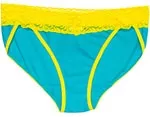
The most popular travel underwear is made by ExOfficio — they get a ton of great reviews on Amazon . They are ideal for travel because they’re breathable, odor-repellant, and dry in just a few hours. They do tend to be more expensive than normal underwear but most experienced travelers swear by them.
ExOfficio has a fairly wide range of underwear styles available and they’re priced anywhere from $8-$20/pair (depending on style and color):
- ExOfficio Thong
- ExOfficio Lacy Low Rise Bikini
Patagonia also makes some really nice underwear that is great for travel. They get good reviews for being soft and comfortable. The Patagonia underwear won’t dry quite as quickly as ExOfficios but they still dry quickly. Patagonia stuff is always high quality but it also comes at a price — these normally cost about $20/pair.
- Active Hipster Briefs
- Barely Hipster Briefs
- Active Boy Shorts
Bring two or three comfortable bras . You may also want to bring a quality sports bra for those long travel days.
Recommended Men’s Travel Underwear
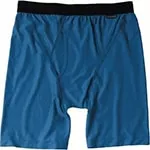
ExOfficio Give-N-Go underwear is the most popular underwear for travelers ( read our personal review here ) and their boxer briefs have over 5000 reviews on Amazon .
I wear mine even when I’m not traveling because they are pretty damn comfortable. ExOfficios breathe well, inhibit odor, and air dry super quickly. ExOfficio offers a few different styles and they cost between $15-$25/pair ( via Amazon ). They’ve also just released their new Give-N-Go Sport boxer briefs that look really nice. They cost $30 ( via Amazon ).
Under Armour also makes HeatGear underwear that performs similarly to the ExOfficios. They cost around $20/pair ( via Amazon ).
If you prefer wearing natural fibers, we suggest Merino wool. The Smartwool underwear is nice and will keep you cool and dry. They usually run about $48 so they are on the expensive side. We also have a pair of boxer briefs from Wool & Prince that we really like.
Socks For Travel
It might not be exciting but a quality pair of socks will make a world of difference when you’re traveling. I’m a huge fan of socks made from fine Merino wool.
Lightweight merino wool socks are great in the summer because they’ll actually keep your feet cool and dry. Heavier-weight socks are good for traveling in the winter because they’ll keep your feet warm and dry.
Quality socks are expensive but they’ll last for a long time if you take care of them. Synthetic/wool blends also work well.
Ideal Travel Socks:
- Wick Moisture: Your feet will sweat but a good pair of socks will draw moisture away from your feet. Keeping your feet dry will help eliminate odor and will also help stop blisters.
- Dry Fast: A lot of good wool and synthetic socks can be washed in the sink and will dry overnight (about 6-8 hours).
- Eliminate Odor: High-quality wool is naturally odor-resistant. Some synthetic socks have special anti-bacterial features that help eliminate odor but they’re not quite as effective as wool. Synthetic-wool blends also work well.
- Aren’t Cotton: Cotton is a terrible choice when it comes to socks. Cotton traps moisture and dries very slowly — this will lead to blisters and smelly feet. Additionally, cotton socks take a long time to air dry (24+ hours) so they’re difficult to wash in the sink.
A good pair of socks can be worn 2-3 times before they start to stink (although you’ll want to rotate the days you wear each pair so they can “air out”). For a more in-depth article about the wonderful world of socks, check out our article about the best travel socks .
Recommended Travel Sock Brands
- Darn Tough Socks: Darn Tough Socks are known for being super durable — in fact, they’re guaranteed for life. Plus they’re made in Vermont.
Shoes For Traveling Europe
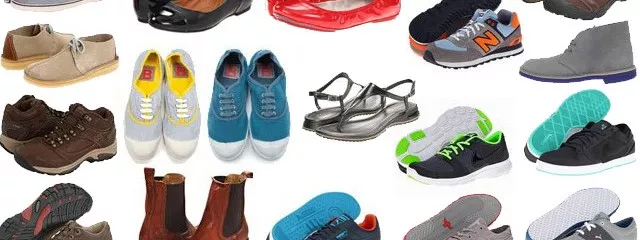
Wear. Comfortable. Shoes.
The most important packing tip is to wear sturdy, comfortable shoes when traveling Europe.
Trust me — you’re going to be on your feet way more than usual and your feet are going to take a beating. That’s why you should put comfort over fashion — luckily there are plenty of fashionable and comfortable shoes on the market.
So let’s look at a few tips for ensuring your feet stay happy:
- Here’s a list of what I think are the best travel shoes if you want my top picks.
- Have bad feet? Consider adding a pair of insoles to your shoes. Superfeet insoles get a lot of great reviews but there are a lot of other brands available.
- Consider Your Environment: Match your footwear to your environment. For example, you may want to consider a waterproof shoe if you’re traveling to rainy/snowy locations. Conversely, you probably don’t need heavy-duty mountain-hiking boots if you’re spending all your time in cities.
- Break In Your Shoes Early: Even comfortable shoes can take a little while to get broken in. That’s why I recommend wearing your shoes for a few weeks before your trip so you know they won’t give you blisters or foot pain.
- For Winter Travel : I recommend a lightweight pair of waterproof boots for poor weather (snow, rain, cold, etc.) and sneakers for the nicer days. Luckily, boots can often be dressed up a bit they still look nice enough at restaurants, etc. Check out our guides for the Best Waterproof Boots for Men and Best Waterproof Boots for Women for some fashionable and functional options.
- For Hostel Travelers: Don’t forget a cheap pair of sandals for the showers…
Learn More: Take a look at our guides to the Best Travel Shoes For Women and the Best Travel Shoes For Men —both articles go into much more detail about what you should look for in a pair of travel shoes as well as a selection of footwear perfect for travel.
Shirts and Tops For Travel
Now let’s dive into shirts and tops. To help keep things simple, I’ve split this section up into a women’s section and a men’s section.
Treat these sections as general guidelines on what kind of shirts/tops to pack — don’t forget the general rules of durable fabrics, dark colors to hide stains and wrinkles, and choosing items that can be easily paired with other items.
By the way, if you’re an ultralight traveler, you’ll probably want to pack less than what is listed below.
Tops For Women Packing List
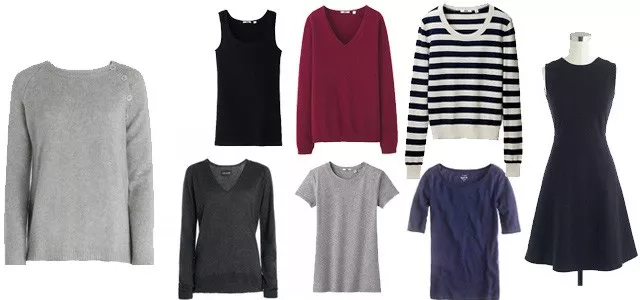
- Shirts (3 or 4): A mixture of short and long sleeve tops is ideal. Remember to dress for the weather, but also realize that it can get cool at night during the summer. Bring a mixture of casual and dressy tops so you can mix and match.
- Light Sweater/Cardigan: Even during the summer, temperatures don’t always get really hot (although they can). In Paris, the average high temperature in June is around 72 degrees and it can drop into the low 60s at night. That’s why it is a good idea to bring a light sweater or a cardigan.
- Dresses (1 or 2): Look for a versatile lightweight dress that can be worn casually or dressed up.
- T-shirts and Tank Tops: Sometimes you just want to wear a simple t-shirt so be sure to bring a few. Just pick whatever you’re comfortable wearing. The ExOfficio Lacy Shelf Bra Cami is a nice undershirt or sleep shirt — it is super lightweight, breathable, and air-dries overnight if you want to wash hand wash it.
Women’s Travel Clothing Brands
- Athleta : Athleta has really stepped up their travel clothing and they have a lot of solid options.
- Lululemon : Lululemon has a number of good travel clothing options.
- Anatomie : Anatomie has a bunch of higher-end clothing that looks really nice
Tops for Men Packing List

- Bluffworks Meridian shirt is a super-tough wrinkle-free travel shirt that can be worn casually or dressed up. It retails for $125. Available via Bluffworks
- Wool & Prince sells a number of nice 100% merino wool shirts. Their long-sleeve button-ups retail for $128 and their short-sleeve sell for $98.
- Bluffworks recently released its performance t-shirt which sells for $45.
- Wool & Prince sells super nice 100% merino wool t-shirts ($68) and polos ($98).
- Uniqlo makes a number of budget t-shirt options that we always dig. Their inventory changes often but they always have something.
- Sweaters (1 or 2): A lightweight sweater is nice if you want to dress up a little or if the temperature drops when the sun goes down. Layering a sweater over a button-up shirt looks nice (so make sure all your button-ups match your sweater). Of course, if you’re traveling in the summer, you probably don’t need to pack a sweater but having one or two in the winter is nice.
Jeans, Pants, and Bottoms Packing Guide
I usually only pack two pairs of pants — mainly because they take up a lot of space in your luggage. Also, pants are one of those things that you don’t really need to wash all that often so there’s no real need to pack multiple pairs.
Pants & Bottoms for Women
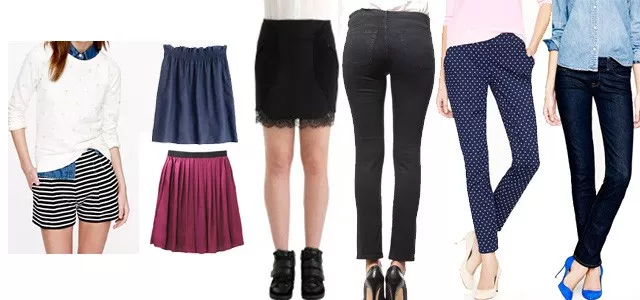
- For Cold Weather: Throw on a pair of lightweight micro-wool long underwear (i.e. a base layer) under your jeans — SmartWool and Icebreaker are two great brands.
- Capri Pants: Capri pants are a nice option in warm weather that still looks nice but are also functional.
- Skirts: Skirts are dressier than shorts and they take up essentially no space in your luggage. Feel free to bring a mixture of shorter and longer skirts.
- Shorts: Shorts are starting to become more popular in Europe so, contrary to popular belief, you won’t feel out of place wearing them — especially in the south of Europe. That said, we recommend bringing a fashionable and well-fitting pair as opposed to ‘athletic’ shorts.
- Athleta : Athleta has multiple options for pants that work well for travel.
- Lululemon : Lululemon has a few jogger pants and other options that would work well for travel.
- Anatomie : Anatomie has a bunch of higher-end travel items.
- Uniqlo : Uniqlo always has a few pairs of travel pants that are friendly on your bank account.
Pants & Bottoms for Men

- Jeans: A pair of dark jeans are essential for traveling in Europe. They look great during the day and they can be dressed up for nighttime. Additionally, jeans can go weeks without needing to be washed.
- Bluffworks makes a series of lightweight, durable, and quick-drying travel pants that also look like regular pants. Pairs range from $98-$140. They also make some solid Travel Jeans for $125.
- AT Slim Rivet Pant from Western Rise and stretchy, stain-proof, and incredibly durable. They retail for $129.
- The Brion Pant from Prana is one of the more fashionable “outdoor” pants and they sell for $79.
- Shorts: In the past, you wouldn’t find many adult men wearing shorts in Europe but this is changing very quickly. Stick to well-fitting fashionable shorts but stay away from things like athletic shorts or the classic “touristy” khaki shorts.
- Cold Weather: When the temperature drops, it can be nice to have a lightweight base layer to go under your pants. SmartWool and Icebreaker make some of our favorite high-quality base layers.
Outerwear Guide
It’s a good idea to prepare for the elements so you’ll want to look into a few options — especially in the non-summer months.
- The Marmot Precip is a great lightweight rain jacket that is also pretty affordable.
- Check out REI.com for a wide range of rain jackets.
- Our top choice is the Patagonia Better Sweater Fleece ( Men’s and Women’s ) but there are plenty of great options at REI or Amazon .
- We use Patagonia Nano Puff but for more budget-friendly options check out Uniqlo .
Clothing Accessories
Here are a few handy accessories to round out your outfit.
- Scarf: Scarves are a handy item that adds style and comfort on cooler days. You can always buy a few as you travel because they make great souvenirs.
- Sunglasses: Sunglasses are a must-have because they’re both practical and fashionable. After living in Europe, we noticed that Ray-Ban Wayfarer sunglasses were a top choice of the truly fashionable but you might want a cheap pair if you’re on the move all the time.
Europe Winter Weather Packing Guides
Winter travel in Europe poses a few extra packing challenges to consider so we’ve written a few handy guides to help guide you on your way.
- Europe Winter Travel Packing List
- How To Dress For Winter in Europe
- Best Waterproof Boots for Men
- Best Waterproof Boots for Women
Travel Accessories Packing List
We’ve put together a list of our favorite travel accessories to help make traveling in Europe easier and more enjoyable.
SIM CARD FOR CHEAP MOBILE DATA
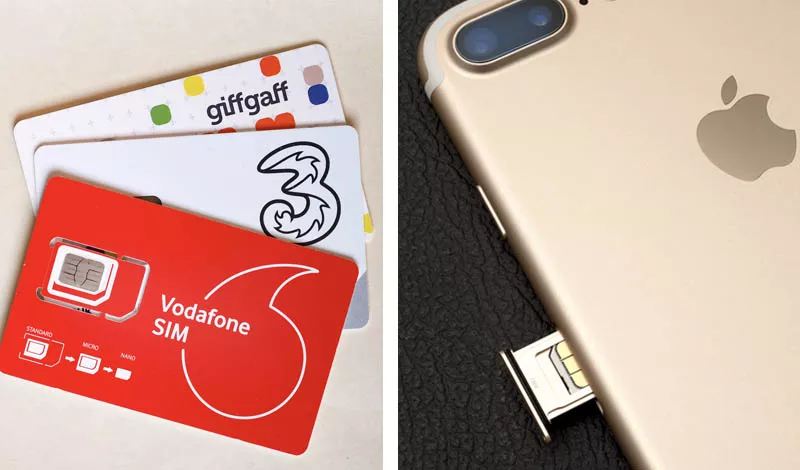
The cheapest way to get mobile data for your phone is by using a European SIM card — this is much cheaper than using your home carrier’s International Mobile Data plan.
You can read about my guide to using smartphones and data plans in Europe but I recommend buying your SIM card from SimOptions.com or Holafly .
Travel Daypack
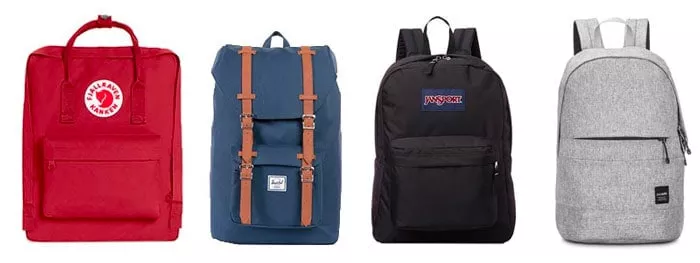
A small backpack is essential for carrying around your day-to-day stuff (camera, souvenirs, rain jacket, guidebooks, etc.) as you’re sightseeing. We recommend a small daypack that can be easily packed away in your luggage and that won’t strain your back as you wear it all day. Here’s a list of the best daypacks . — we’ve also included a few anti-theft backpacks which are handy if you’re visiting areas known for pickpockets .
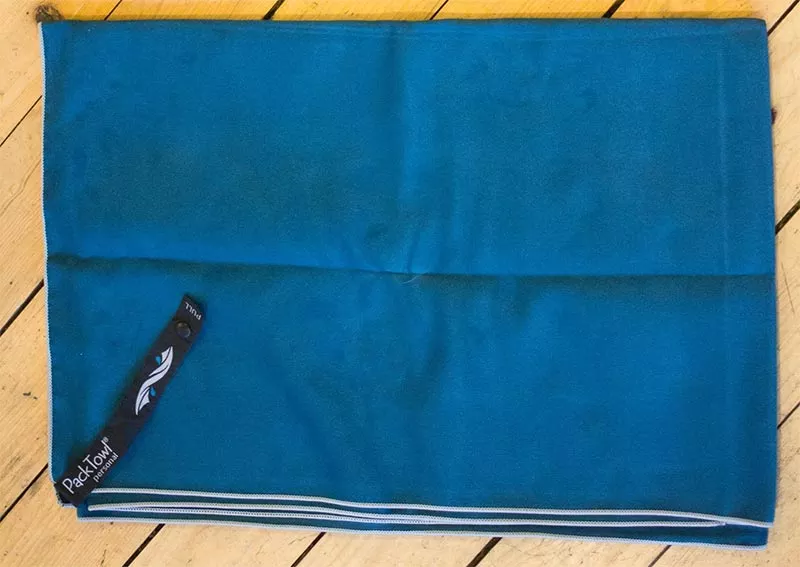
Packing a quick-drying travel towel will come in handy if you’re staying somewhere like a hostel that doesn’t provide towels. That’s because traditional cotton towels, in addition to being very bulky, take hours to dry — which will lead to a musty smell if you pack it before it is dry. Travel towels work well because they are compact but can still absorb plenty of liquid as they dry overnight.
Note: Travel towels are often much smaller than normal towels. We suggest buying the large or XL size—especially if you have long hair (or buy two).
There are a ton of travel towels on the market but these get great reviews:
- PackTowl Personal Microfiber Towel
- Biospired Footprint Lightweight Microsuede Towel
Keychain Flashlight

Most people use their phone as a flashlight light but a small keychain flashlight is still a nice accessory — especially in dark dorms and city streets.
We love the Streamlight 73001 Nano Light Miniature Keychain LED Flashlight because it’s super small (it fits on a keychain) but it provides a ton of light. Streamlight also has a ton of other great-quality pen lights if want other compact light options
Padlock & Retractable Cable Lock

If you’re staying in a hostel, you’ll need a lock so you can secure your stuff in the lockers. We recommend the Master Lock Set-Your-Own-Combination Padlock because it allows you to create your own combo so it’s easier to remember.
Retractable cable locks are nice for securing your bag to your bunk or a luggage rack. They will deter a thief from running by and snatching your bag.
Earplugs & Eye Mask
An eye mask is nice for trains/planes/buses or if you stay in hostels (some jerk will turn the lights on at 3 am). Additionally, you’ll be glad you brought earplugs if you stay in hostels because you’ll eventually share a room with someone who snores. These Mack’s Pillow Soft Silicone Earplugs are really nice for sleeping.

Throw in a small notebook like the Moleskine Notebook , Field Notes , or Rhodia notebooks to make notes of things as you travel. We write down directions, phone numbers, addresses, restaurants, spending, etc. At the end of your trip, your notebook will end up being a nice little souvenir.
Water Bottle or Flexible Water Bottle

Stay hydrated with a water bottle. A basic water bottle is perfectly fine but this flexible water bottle by Platypus Soft Bottle is a great choice because it can be rolled up when empty.
Travel Sleep Sheet
Are your hostel sheets clean… who knows? If you don’t want to take the chance, think about packing a sleep sheet/sleep sack. A cotton Sleep Sheet is cheap but bulky. Silk Sleep Sacks cost but they’re a lot lighter, less bulky, and the silky feeling is nice.

- Sink Stopper: A cheap Travel Sink Stopper is necessary for sink laundry.
- Travel Laundry Soap: Woolite Travel Laundry Soap or Travelon Laundry Soap Sheets are perfect to travel laundry.
- Flexible Travel Clothesline: The best way to dry your clothes is with rubber braided clothesline . Plus, braided clotheslines don’t need clothespins.
- Stain Remover: Toss in a Tide To Go Stain Remover Pens or individually wrapped Shout Wipes for any stains.
Patch up stuff with duct tape. A whole roll because it is too bulky so just wrap some around a pencil. Or buy some travel duct tape .
Digital Luggage Scale
Make sure your bag isn’t too heavy with a digital luggage scale .
Photocopies Of Important Documents
Make copies (physical and electronic) of your passport and other important documents. We email them to ourselves or save them to Google Docs.
Ziploc Bags (Multiple Sizes)
Plastic bags are a great way to store your dirty or wet socks/underwear so they don’t get mixed with your clean clothes. We’ll also put our liquids in a sealable bag in case of a leak. The large 3 gallon bags are nice for storing shoes so you don’t get your clothes dirty.
One of the best ways to avoid becoming a pickpocketing victim is to wear a money belt ( learn more about avoiding pickpockets here ). Personally, we don’t really like money belts because they’re kind of annoying to wear but a lot of people always wear one — it comes down to personal preference.
Collapsible Umbrella
A travel umbrella is optional if you’re traveling in the summer. However, the fall, winter, and spring tend to be rainy, so you might want to bring one along.

We eat a lot of meals from the grocery store so we always bring a set of Plastic Travel Utensils . If you really want to go all out, you should check out this sweet titanium spork .
Toothbrush Cover

Keep your toothbrush germ-free with the Steripod Clip-on Toothbrush Sanitizer cover. It protects the brush and sanitizes it using voodoo science. Yeah, science! Or you can just get a normal toothbrush cover if that’s how you roll.
Lint Roller
A lint roller is an easy way to help keep your clothes looking presentable.
Guide Books and Phrase Books
Despite loving internet resources, we are still huge fans of using printed guidebooks to research wherever visit. Learn more about our favorite travel guidebooks & websites .
A small phrasebook can also come in handy if you’re not familiar with the local language (but most people in big cities will speak a little English).
Electronics Packing List
We travel with more electronics than ever so here’s a list of things you might want to bring along.
IMPORTANT: North America and Europe use different voltages (120v vs 220v) for their electronics. So what does that mean for you? For high-end electronics like phones, cameras, laptops, iPads, etc… it doesn’t matter. All you need is a plug adaptor because these electronics are all designed to work at multiple voltages. However, electronics with heating elements and motors like hairdryers, curlers, straightening irons, hair clippers, etc. aren’t designed for multiple voltages so they’ll fry if you use them in Europe. Read our guide to traveling with electronics for more in-depth advice about using electronic devices while traveling.
Outlet Plug Adapters

You’ll need a couple of outlet plug adapters for all your electronics. Most of Europe uses the same plug but the UK uses a different configuration. There are dozens of adaptors out there but this affordable plug adaptor set from Ceptics will work fine. They also sell UK, Ireland, and Switzerland-specific versions if you’re traveling there.

Many hostels and hotels may only have one or two power outlets per room. That’s why we often pack a travel power strip to power our various gadgets. The Belkin Travel Power Strip with USB ports is a well-rated option but there are plenty of other travel power strips on Amaz on .
Portable Phone Charger
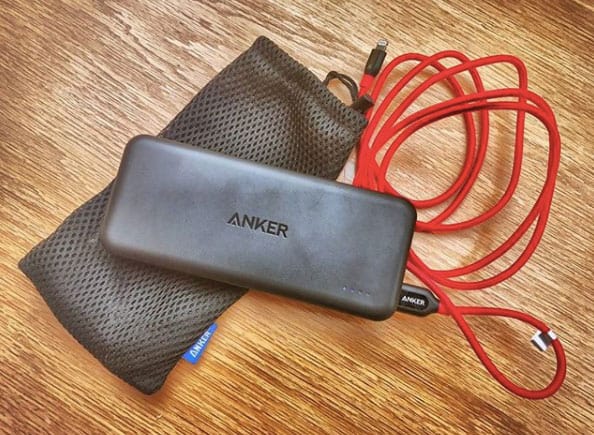
If you’re anything like us then you’re going to use your phone a ton when you’re traveling so you’re going to drain your battery before noon. That’s why a portable phone charger is a must-have travel item. We use the Anker PowerCore 10000 because it’s the size of a deck of cards and is affordable.
Dual Voltage Travel Hairdryer
Standard North American hairdryers and straighteners won’t work in Europe — even if you use a voltage adapter. That’s because Europe uses a higher voltage than North America. That’s why you need a dual-voltage hair dryer. The Revlon 1875W Compact Travel Hair Dryer is a top choice for travelers because it is powerful, lightweight, and foldable.
Don’t forget about dual voltage straightening irons and dual voltage curling irons .
We use our iPhones for a majority of our travel photography but you’ll want a quality digital camera if you want nicer photos. We’ve already written an in-depth article about choosing the best digital camera for trave l. Don’t forget the extras:
- Extra Memory Cards: Pack a few extra memory cards because you don’t want to run out of storage space — it’s better to have too much than not enough. And memory cards are cheap .
- A portable external hard drive is great for backing up all your photos. Another great option is to upload all your photos to cloud storage.
- Google Drive is free cloud storage and it gives you 15GB of space. We pay for their premium version to get even more space — especially since we have it synced with Google Photos. The main problem with cloud storage is not having reliable internet access when you travel.
- Extra Battery: I always carry an extra battery. Generic versions are cheap on Amazon (you’ll have to search for the specific battery that your camera uses).
Tablet or Laptop
We love traveling with our iPads — they’re the perfect travel computer. So, unless you really need the full functionality of a laptop, we suggest sticking with an iPad.
Smart Phone
Everyone has a smartphone these days. Here’s our guide to the best travel apps if you’re curious to know our favorite apps.
Be sure to read our guide to using Data Plans Abroad
It’s nice to listen to tunes as you travel. Additionally, there are a lot of downloadable audio guides for cities and museums — which are great ways to learn more about the places you’re visiting. We absolutely love our Apple Airpods (not having wires is so amazing). But we still throw in a cheap pair of headphones for flights. We’ve written more about our favorite travel headphones .
Travel Toiletries for Europe

We suggest minimizing your toiletries since liquids are heavy and you can purchase anything you need once in Europe. That said, here is a list of things you might want:
- Shampoo/Conditioner/Body Wash: Pour liquids into these small GoToob travel-sized bottles because they won’t leak.
- Toothpaste & Toothbrush: We travel with a normal toothbrush but add a toothbrush cover . We did find that dental floss was much more expensive in Europe so bring some from home.
- Non-Aerosol Dry Shampoo: Dry shampoo is amazing for getting your hair ready when you don’t have time to jump in the shower.
- Shaving Stuff (Razors & Cream): Razors are more expensive in Europe.
- Deodorant: For whatever reason, we find that deodorant in Europe didn’t seem to work as well — maybe it was all in my head.
- Chapstick w/Sunscreen : Protect your lips.
- Contact Lenses/Solution/Glasses: Contact solution can be a pain to purchase since it’s often only sold in pharmacies.
- Lipstick (or something similar): Parisian women seem to never leave the house without sexy lipstick. You can also use lipstick as blush.
- BB Cream: BB Cream is a great ‘all-in-one’ product. It’s a moisturizer that contains sunscreen and provides light coverage as a basic foundation — it also evens skin tone.
- Mascara: Mascara should be changed every three months, so this is a great excuse to buy a new bottle.
- Cream Blush: You really don’t want to have makeup brushes in your bag, so a cream blush is a great option.
- Condoms: You don’t want some souvenirs so we suggest buying some now. Amazon seems to have the best price/selection of condoms .
- Travel Fabric Freshener: Keep away the funk with travel-sized Febreze To Go.
- Travel Toilet Paper: Travel toilet paper is never a bad thing to have in an emergency.
- Wet Wipes/Baby Wipes: Cottonelle Fresh Flushable Wipes can be a lifesaver and so they’re super easy to pack.
- Hand Sanitizer: Who knows what kind of things you’ll be touching.
- Body Powder: A lot of walking can equal chafing — especially in hot weather. Anti Monkey Butt is great for those hot days.
- Foot Cream: Take care of your feet because you’ll be walking a lot. O’Keeffe’s Healthy Feet Cream will keep your feet from becoming rough and cracked.
- Pepto Tablets: Traveling can take a toll on your stomach. Pepto-Bismol tablets are super easy to throw in your bag.
- Band-Aids: They’re nice to have on hand. A lot of people will develop blisters on their feet so we recommend Band-Aids for feet .
- Pain Medicine: Over-the-counter pain medicine is normally only sold in pharmacies so it can somethings be hard to find after-hours.
- Prescription Drugs: Ensure you have enough medicine to cover your trip since getting refills can be difficult.
Travel Insurance
We recommend picking up some travel insurance — which will help cover your stuff, flights, hotel, train tickets, rail passes, medical emergencies, and more. World Nomads is our top choice but you can check out our guide to buying travel insurance .
Where to Buy Travel Gear
- Amazon : Our top choice for buying gear is Amazon because they seem to have the best selection and prices.
- Zappos : Zappos has a solid selection of travel gear. Their prices are sometimes a bit higher than other stores, but their free super-fast shipping and dead-simple returns are often worth the extra cost.
- REI : One is the largest outdoor retailer so they have a nice selection of backpacks and clothing.
- Recent Posts
- The Best Travel Backpacks | In-Depth Buyer’s Guide & Backpack Reviews - April 28, 2024
- Best Prepaid UK eSIM | Data Plan Buyer’s Guide - April 21, 2024
- How to Avoid Pickpockets in Europe — Tips for Outsmarting the Thieves - April 19, 2024

No Funny Business
The Savvy Backpacker is reader-supported. That means when you buy products/services through links on the site, I may earn an affiliate commission—it doesn’t cost you anything extra and it helps support the site.
Thanks For Reading! — James
Questions? Learn more about our Strict Advertising Policy and How To Support Us .
Related Reads
The best travel backpacks | in-depth buyer’s guide & backpack reviews.
A list of my favorite travel backpacks for every travel style.
Backpacking Europe Packing List — My Europe Travel Packing Guide
A comprehensive packing list and advice for budget backpacking and ultralight travel in Europe — including electronics, clothing, toiletries & accessories.
Helpful Travel Tips & Articles , Packing
Fashion Advice: How to Avoid Looking Like An American Tourist In Europe
Fashion advice to help you look like a local when visiting Europe.
Packing , Product Reviews
Best Travel Shoes — Fashionable & Comfortable Shoes for Traveling
The ultimate guide to the best travel shoes that are both stylish and comfortable.
City Guides
Choosing travel insurance, travel packing lists, budget travel newsletter.
The best budget travel tips sent straight to your inbox.
Join My Journey
Europe travel tips, advertising & privacy policies.
TheSavvyBackpacker.com is a participant in the Amazon Services LLC Associates Program, an affiliate advertising program designed to provide a means for sites to earn advertising fees by advertising and linking to amazon.com.
© 2010 - 2024 The Savvy Backpacker
Website Design by FHOKE

28 Top Europe Packing List Items for 2024 + What to Wear & NOT to Bring

From London to Lisbon and Istanbul to Iceland, Europe is extremely varied. It’s important to know what to pack because in a single trip, you may find yourself trekking up the snowy Swiss Alps, sunbathing on the Mediterranean coastline, then trudging through the rainy cobblestone streets of Paris. Even destinations only a short flight away can feel on opposite ends of the Earth.
Asher and I have been to Europe 9 times and used our extensive experience to compile this list of items that we feel are useful on any European trip. I’ll also cover what to wear in Europe , what items NOT to bring, and some important FAQs. Bon voyage!

What to Pack for Europe – 28 Essentials
1. neck wallet.
Europe is notorious for its pickpockets, especially in cities like Paris, Rome, London, Barcelona, Amsterdam, and Dublin. An RFID-blocking neck wallet allows you to easily conceal your cash, credit cards, phone, eyeglasses, and hotel keys while not screaming, “I’m a tourist!” How? The neck wallet can comfortably hide under your blouse, t-shirt or jacket, making it next to impossible for pickpockets to reach. This particular brand is extremely well-made and affordably priced.

View on Amazon.com ➜
2. Lipstick-Sized Portable Charger
Getting lost in Paris at night with a phone that just ran out of batteries was a pretty frightening experience, and not one I’d like to repeat. That’s why I always carry this tiny lipstick-sized portable charger in my purse or neck wallet. It’s super reliable and ensures I will never be without a way to look at a map, call an Uber, or to communicate with my family or friends when I’m in a pinch.

3. Virtual Private Network (VPN)
A high number of websites (or parts of websites) get blocked in many European countries. For example, often, music videos and movies on YouTube or Netflix won’t be viewable. A good VPN like NordVPN will make it possible to visit every website without censorship.
Perhaps more importantly though, is the security that a VPN gives you. According to an IT Governance report , there were over 110K breaches in Europe during the month of November 2023 alone! We learned this the hard way in Paris where we had our credit card number stolen after using what we thought was a secure Wi-Fi network at an Airbnb rental. Whenever you go on someone else’s Wi-Fi, whether it’s at a café, airport, Airbnb, or hotel – you’re potentially putting your passwords, credit cards, and identity at risk of being hacked. With a VPN, you protect your sensitive data on any device with just 1-click. And it’s super affordable!

View NordVPN.com Options ➜
4. Universal Power Adapter
European plugs and outlets are about as varied as their terrain. The most common outlets in Europe include Type C, E, F, and G. To ensure you don’t get stuck in a country without a reliable way to charge your phone or laptop, I recommend bringing a universal power adapter that will work in all European countries (except for Italy ). This one pictured comes with two USB ports, a built-in fuse to protect your devices in case of a power surge, and a lifetime replacement guarantee .
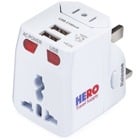
5. Natural Jet Lag Relief Pills
Jet lag is rough when flying to Europe, so I was completely overjoyed when a friend told me about NO JET LAG. Not only is it 100% natural , but it has literally zero negative side effects. The groggy, fuzzy, heavy, exhausted feeling lifts faster and allows me to get on the move upon arrival.
Pro Tip: If you find yourself anxious or jittery during flights, another solid way to stay relaxed is with this Jet Lag Relief Essential Oil . It’s mild, soothing, and combats frazzled nerves. Put a few drops on the outside of your sleep mask and feel your body start to settle down.
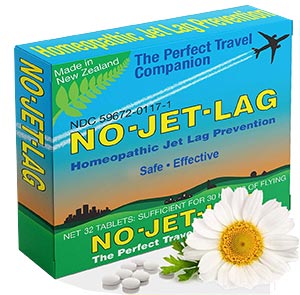
6. Travel Insurance for Europe
Insurance is mandatory for parts of Europe and we never leave the country without it. Europe is not a cheap place to foot a hospital bill (especially when paying out-of-pocket), and accidents happen when we least expect them. Since your domestic provider typically does not follow you overseas, we recommend protecting your travel investment against situations like cancellations, delays, theft, baggage loss, medical transport, and international hospital expenses. We had a friend break her arm hiking in Europe. Luckily, she didn’t have to pay the $35K airlift or $8K in medical bills because she had insured her trip for peace of mind and it really paid off.
Our go-to provider is Faye because they are evolving the entire insurance industry! Instead of having you fill out piles of tedious paperwork, jump through hoops, and cross your fingers to get a reimbursement – Faye handles everything on their mobile app. They wired us the funds when we needed it most instead of hanging us out to dry. Plus, in case something comes up, they can even cover you for “trip cancellation for ANY reason.”

Get a quote in less than 60 seconds with Faye ➜
7. Quick-Dry Travel Towel
Having your own travel towel in an unfamiliar hotel or B&B can be a lifesaver. These microfiber towels weigh less than half a pound and are ultra-packable. You will find yourself using them to dry off after showering or swimming, as a picnic blanket, a beach towel, or to face whatever moisture you come up against ! They dry 10x faster than cotton and without a doubt, are perfect for day trips and general travel alike.
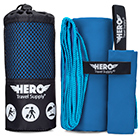
8. Packable "Just In Case" Bag
This bag is genius because it takes up literally no space. Collapsed, the “Just in Case” bag is about the size of a folded tank top — but when full, it’s a large personal item bag that fits under your airplane seat. It also attaches to the handle of your carry-on luggage for smooth airport transit. Throw it in your larger suitcase at the start of the trip – it’ll come in handy for all the souvenirs (and chocolate!) you will inevitably pick up along the way.
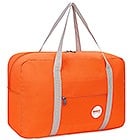
9. Windproof Travel Umbrella
In order to be able to enjoy yourself even in the midst of rainy days, you need a good quality travel umbrella like the one pictured. I prefer bringing this puppy along instead of buying an overpriced one from a side street vendor that is sure to break. This one is windproof and super compact at only 12-inches when collapsed. It also comes with a lifetime replacement guarantee !
Pro Tip: If you’re heading to an extremely rainy climate like Ireland or Iceland and want to be sure to stay dry even in unpredictable storms, throw these disposable ponchos in your daypack and wear them under your umbrella. Here are our favorites for adults and children .
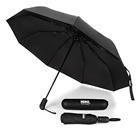
10. Hanging Toiletry Bag
European “water closets (W.C.)” and bathrooms are considerably smaller than the ones you’re probably used to in the U.S. — and full of charming quirks! This said, you might find your B&B in Prague or a tiny hotel in Rome won’t have ample bathroom countertop space for your makeup and skincare routine.
I like to bring this ingenious hanging toiletry bag that easily hangs on any door or wall to ensure I always have as much space as I need to stay happy, sane, and organized. This one boasts 3 external pockets and 4 large internal pockets so that you can fit everything you’d need for a multi-week trip across Europe. I leave it packed with my smaller travel products so I can just grab it and GO when adventure calls. It’s a brilliant find and you’ll never want to leave home without it!

11. TSA-Approved Silicone Travel Bottles
Try these cute travel-sized bottles that will give you the perfect amount for a normal length trip abroad. They are TSA-approved so you won’t have to throw away any part of your precious regimen and all bottles will fit easily in the hanging toiletry bag (or keep them in their own case). It’s always more challenging to find the products that you might love at home while overseas, so if you have skincare and haircare products that you like, it’s best to bring them along.

12. Europe eSIM Data Service (Avoid Roaming Fees!)
We used to purchase a physical SIM card for every trip and location, but this is an antiquated solution to a modern problem. Some airport and street vendors will sell you a janky card that won’t even work, and collecting plastic is a hassle that can be remedied by a 100% digital approach.
Saily offers a worldwide eSIM service that offers data wherever you may roam! They are setting a new standard for international internet use – some of our favorite perks are customizable data options based on your specific trip, lower roaming rates, fewer cybersecurity risks, and less waste. Not to mention, you can easily switch carriers by scanning a QR code from your phone, which is perfect if you plan to gallivant around Europe or change locations a few times.

Pick a data plan at Saily.com ➜
13. Luggage Straps
As a fairly underrated travel accessory, luggage straps are a must-have item for any traveler. They will ensure you don’t fall victim to the nightmare of having your suitcase bust open during transit, leaving all of your dirty laundry on display because of a faulty zipper or lock.
These heavy-duty straps can withstand more than 700 lbs of force-tension and will extend the life of your luggage since your bags won’t have to work as hard to hold all of your European souvenirs together! My favorite perk is that it’s way easier to spot your suitcase in a crowd of conventional bags – between the bright colors and built-in ID card, your cases will be easier to identify as you hop between airports, train stations, ports, and buses (where often, thousands of bags are all thrown together or consolidated). These belts are TSA-approved and offer real peace of mind as you repeatedly hand over your items on an international journey.

14. Discounted Tickets on European Attractions
Whether you are climbing the famous Eiffel Tower , trekking the Acropolis of Athens , standing in awe of the Roman Colosseum , or witnessing Barcelona’s Sagrada Familia – Europe has a plethora of history and magic to offer you. Where else can you swim in a geothermal spa , explore medieval castles , or stare into the eyes of Da Vinci‘s beloved Mona Lisa ?
Get Your Guide is our favorite booking service for top-tier excursions that really bring your trip to life. Building a dream itinerary is easy since you can compare reviews to ensure you’re reserving the best activities. GYG even offers cancelation up to 24-hours before your tours, making it a flexible option for all adventurers.

See all European attractions at GetYourGuide.com ➜
15. Packing Cubes
Europe has so many climates (cool, desert, alpine tundra, highland, and Mediterranean) . Prepare for any scenario with these packing cubes that are a total game-changer! You can easily categorize your suitcase for a stress-free traveling experience (use one cube for tops, one for bottoms, one for dresses, swimsuits, etc.) Gone are the days of digging through your luggage to find that long-lost sock . We also love the two bonus laundry bags that keep your dirty clothes from intermingling with your clean ones.
It’s available on HeroTravelSupply.com with an exclusive 15% discount using the coupon code “ HERO ”.

Or view on Amazon.com ➜
16. Cooling Towel
Does anyone else get a bit crabby when they get hot? (Hands please!) This cooling towel is great for the entire family because I think we all hate memories of near melt-downs in 90-degree weather. All those potentially disastrous moments — waiting in line to see Big Ben with crying little ones with no shade in sight… or walking to get the Barcelona Metro mid-August in a humidity-induced daze have since faded away merely because I discovered this remarkable little towel! It’s non-toxic, chemical-free and once you wet the material, the ice-cold cooling effect lasts for 30-60 minutes before you simply wet it again to restart the process.
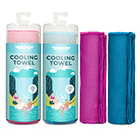
17. Motion Sickness Patches
For those that suffer from motion sickness, these Anti-Nausea Motion Sickness Patches are amazing for planes, trains, and automobiles! Winding European roads can be especially curvy with lots of bends and turns, many of them carved into the sides of vertigo-inducing mountains. These patches are a miraculous herbal remedy that saved me on many occasions – trust me, they work. Don’t call in seasick or carsick to your vacation, use these instead.
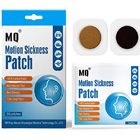
18. Luggage Locks
These TSA-approved luggage locks will protect your valuables from getting stolen while your luggage is in transit. I also like to use one on my backpack while exploring crowded cities to keep pickpockets’ hands out of my stuff and they’re perfect for locking lockers in hostels or tourist sites. I seriously never travel without at least one or two combination locks, it truly helps with my peace of mind.
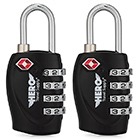
19. Travel Daypack
If you’re planning any day trips, a good foldable daypack should be at the top of your packing list. This Venture Pal backpack is the perfect blend of features, quality and affordability. We’ve found it to be comfortable, durable, and has numerous little compartments for all our needs. It’s also super lightweight and folds into itself so that you can store it easily when you’re not using it. Available in many colors.
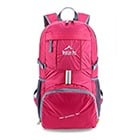
20. Wellies (AKA Rain Boots)
Wellies are essential footwear for Europe since many hot spots are rainy year-round (London, Paris, Zurich, Milan, etc.) But even sunny destinations have a wet season. These rain boots are made to withstand the elements, keeping your feet dry in surprise downpours and combating any muddy terrains with non-slip traction. Add waterproof shoe bags to your suitcase to ensure you don’t get any dirt, mud, or street funk on your clean clothes!
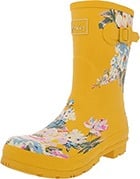
21. Water Bottle with Built-in Filter
Water quality is tough to predict in many parts of Europe – some places have delicious, drinkable tap water. Others have little to no drinkable water available without buying expensive pre-bottled water that is bad for the environment. I always recommend that travelers bring their own water bottles with a filter, to ensure that their water is comfortable to drink. This water bottle has a built-in filter so all you have to do is fill and drink.

22. Gorgeous Outfit
Europe’s restaurant scene is killer , and there are endless opportunities to enjoy the nightlife. Even if I’m planning a fun family trip, I always pack at least one or two outfits that I would feel beautiful wearing in the evenings. It’s not always easy for me to find clothes on Amazon that I like, but I LOVE this jumpsuit because it’s easy to pack, doesn’t wrinkle if it’s tossed into my bag, and looks great on so many body types.
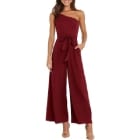
23. Women’s Comfy Flats
Many say that Europe is best enjoyed on foot. From museums to cafés to just taking in the architecture, you will be walking A LOT. Summer months can be hot with high chances of humidity and rain. You’ll want something breathable and comfortable, especially if they get wet in a sudden downpour. These Crocs (yes, Crocs?!) are actually super cute cozy and cool on muggy days. They are my feet’s most-loved flat choice.
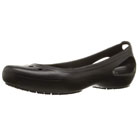
24. Activated Charcoal (Food Poisoning Fix)
Europe boasts countless adorable restaurants and cafés, but… many won’t be as clean as the places you frequent at home and food poisoning happens. The most surprising was when I actually got SO sick from a $250 Michelin-rated meal in London. (Ok, I did eat roast pigeon, but I thought while in London, why not try some of the local fare!) Please don’t ruin your trip by not bringing these along. They will shorten the duration of the food-borne illness dramatically and in many cases, can alleviate the problem immediately.
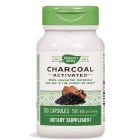
25. Cheers Hangover Relief
These supplements use vitamins and liver-detoxing herbs like milk thistle to remove alcohol from the body more quickly. Asher and I aren’t big drinkers, but the wine in Europe is divine. When making the most out of pub tours, vineyard stops, and gourmet dining – keep your body in tip-top shape with these hangover-prevention pills. You don’t want to spend long days in museums or on historical tours with a looming headache and fatigue. If you’re planning to drink, give them a try!

26. Deodorant Wipes
Europe in the Summer is a hot and muggy wonderland. While you’re immersed in the historical beauty all around you, you do NOT want to worry about dripping through your couture. I personally hate reapplying deodorant to my already sweaty armpits, and I will no longer succumb to washing my face and underarms in a sink that has no paper towels to dry myself. These non-toxic, natural wipes do the trick! They fit nicely in my purse or day pack, and with a quick wipe, I’m as fresh as a daisy!
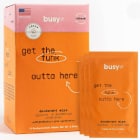
27. Rolling Suitcase
Choosing a good suitcase is like choosing a good partner – both will need to be durable, reliable, secure, and ready to come on many adventures with you (and look good while doing it!) The apple of my eye is this Wrangler Rolling Suitcase . It is massive and really exceeded my expectations. Made of 100% nylon, it has the lightness of a duffle bag but the sturdiness of a regular suitcase. It will be a breeze to maneuver through crowded airports and cobblestone streets (or hauling up typical 5-story buildings with no elevator; you will thank us). Arrive at your hotel in utter comfort, at an even more comfortable price!

28. Reusable Wine Bags (Leak-Proof)
Since these prevent bottle breakages in transit, these reusable leak-proof bags are great for drinkers and non-drinkers alike. I use them for souvenirs and family gifts like French perfume bottles, Italian olive oils, delicate ceramics, literally anything made of glass ! With thick bubble padding and a double seal, you can get a ton of use out of them. And of course, between the Chianti, Bordeaux, Champagne, Cava, and any other European spirit you stumble upon – these will be a thoughtful addition to your checked luggage.
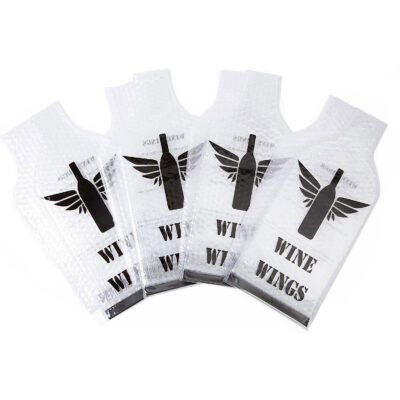
1. Travel Stroller or Double travel stroller
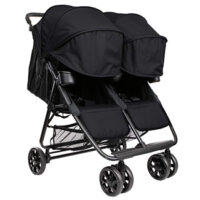
Pro Tip: If you have older children (ages 5+) consider bringing along a double-seated stroller. You’ll be walking miles and miles in Europe and kids get tired easily. Give their little legs a rest and your sleepy tots will probably take a nap on the ride home.
View on Amazon.com ➜
2. Travel Car Seat and Stroller Combo for Infants
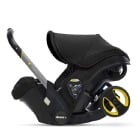
Note: All airlines will check your car seat at the ticket counter free of charge. View on Amazon.com ➜
3. Travel Carseat for Toddlers and Little Kiddos
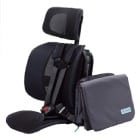
Pro Tip: A Car Seat Luggage Belt is an ultra-portable travel solution to work with what you already have. The strap allows you to attach your car seat to your suitcase. So in a matter of seconds, you have an effortless mode of getting your kids from airport to airport without having to push a heavy stroller around (plus all carry-on luggage). Works like a charm!
4. Stroller Clips
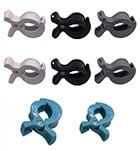
5. Woolino Sleep Sack
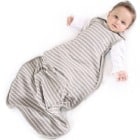
It’s a great way to keep babies cozy on an airplane and ensure they feel safe during long travel days. It’s also helpful for unpredictable temperatures in hotels. It’s a bit expensive but also worth it since it replaces loose blankets you would otherwise need in the crib. We don’t have to travel with many blankets, which also keeps our luggage weight down.
6. Baby Bjorn Travel Crib
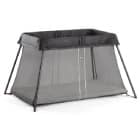
Pro Tip: Before you travel, have your tot take a few naps using this travel crib and create a consistent routine around it. Your babies will come to perceive it as a place of solace. This at-home practice will be invaluable to them connecting with it in new and unfamiliar settings.
7. Homeopathic First Aid Kit
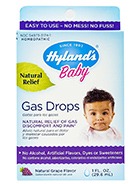
We try to opt for the homeopathic approach to medicine because it is a natural and often botanical way to treat the underlying cause of conditions – aiming to get you off the medicine sooner rather than becoming reliant upon it. We love that these natural, safe, effective remedies don’t cause harmful side effects and are safe for children. Natural remedies actually stimulate the body’s ability to heal itself and boost your baby’s natural immunity. They have saved us repeatedly during teething, tummy aches, or sickness. I can’t recommend them enough.
- Natural Gas Relief – We have many Hyland baby products and love that they are formed with NO artificial flavors or dyes. They relieve the pains of gas, stomach pressure, burping, constipation and bloating, and restlessness.
- Echinacea Drops – We give our children these immune-boosting drops before any trip and they’ve yet to become sick while traveling. They taste like nature’s candy and can be given to children 6-months+. Crafted with wild echinacea flower, it provides natural health in a bioactive compound.
- Baby Calm – As the name indicates, these tablets are wonderful for calming your little one and keeping them relaxed. For a baby that is restless, teething, or gets fussy and irritable while traveling – these are a lifesaver. They instantly reduce baby’s irritation so everyone can get back to sleep!
- Earache Relief – By age 3-5, nearly every toddler has had an ear infection and it is one of the most common reasons young parents go to the doctor. These all-natural drops are a must-have for parents; they will reduce symptoms like pain, irritability, fever, and sleeplessness, providing a safe application in the form of a dropper.
- Baby Vitamin C – Mary Ruth is one of our favorite brands because it’s organic and what you see is what you get – the only ingredient in this product is organic Vitamin C. It is an incredible immune booster, powerhouse antioxidant, and protects against free radicals. I start to give our children this a few days before we travel.
- Camilia Teething Relief – Prevent teething pain before it begins with these natural relief drops. We aim for homeopathic solutions that target the root cause of the pain instead of just masking the symptoms. These droppers also alleviate digestion issues related to teething, restoring peace for the entire family.
See more tips on traveling with babies in our guide on best baby travel gear ➜
Other Europe Packing List Items Not to Forget
- Travel First-Aid kit
- Compression Flight Socks
- Facial Cleansing Wipes
- Affordable Underwater Camera
- Reusable Travel Wine Bags
- Steripod Toothbrush Cover
- Dental Floss
- Hand Sanitizer
- Mini Hairbrush
- Nail Clippers
- Insect Repellent
- Loofah Glove
- Noise-Canceling Headphones
- Headphone Splitter
- Flash Drive
- Memory Card
- Electronic Organizer Case
- Travel Toilet Paper
- Shoulder Bag Women
- Shoulder Bag Men
- Waterproof Phone Case
- Travel Pillow
- Travel Sheet
- Personal Item Travel Bag
- Passport photos
- Other European packing lists you may like:
- Amsterdam |
- Barcelona |
- Camino de Santiago |
- Castle Trip |
- Copenhagen |
- French Riviera |
- London & UK |
- London Study Abroad |
- Mediterranean Cruise |
- Santorini |
- Switzerland |
- Vatican City |
What Should I Wear in Europe?
Europe’s weather varies a lot by country and by season, so it’s a good idea to do a little research on your specific destinations. Three things you should expect with a trip to Europe are:
Walking: You’ll be doing a LOT of walking. Bring shoes that are comfortable but that still look nice.
Fashion and Style: No, you don’t need to dress like a model, but you should look nice to fit in. Choose mainly dark colors, especially dark jeans if you’re wearing jeans.

The weather often varies a lot across Europe so you will want to pack clothes that are versatile. European women are quite stylish so choose outfits that are more on the smart casual side. Ankle boots are very popular and a pair of nice sneakers or flats are great to have while exploring around. Choose dark colored pants, jeans, or leggings to wear with camis, blouses, long knitted sweaters or cardigans, and dresses. Outside, leather jackets are popular and a scarf is essential. Accessories to add to any outfit include retro shades with a leather saddle bag or vintage rucksack to carry your things. What should MEN wear in Europe? – (Click to expand) Below is a sample men’s clothing list. (All items link to Amazon.com for your convenience).

Packing for the Seasons in Europe
Spring – march, april, may.
Spring counts as one of the shoulder seasons for Europe, and is an ideal time to travel to many locations which will have sparser crowds and still agreeable weather. Although, some places will be wet and dreary at this time, so check the specs on your destination before you pack.
Rain gear is absolutely crucial during spring, so bring a quality windproof travel umbrella and a good rain jacket . Boots are a good idea in most places, just in case you find yourself slogging through mud or wet grass. Temperatures average between 41°F and 58°F (5°C to 14°C).
SUMMER – June, July, August
European summers are lovely, and typically comfortably warm – though parts of Europe can endure searing heat during the peak of summer.
The downside of this nicer weather is that the summer is when most tourists visit, making it high-season. If you can handle the crowds and the inflated prices, it’s a gorgeous season to visit!

You probably won’t need any heavier outerwear unless you’re traveling to destinations farther north or at higher altitudes. Temperatures average between 59°F and 78°F (15°C to 26°C).
FALL – September, October, November
Fall or autumn is the second half of the shoulder season in Europe, and brings milder weather and again, smaller crowds. Prepare for some precipitation (usually drizzle) and chill, but expect tolerable to fair conditions. As always, check on averages for your destinations to be sure!
Autumn in Europe calls for a light jacket , dependable waterproof walking shoes , and a couple of scarves to keep warm should a chillier day arise. Temperatures average between 45°F and 60°F (7°C to 16°C).
WINTER – December, January, February
Winter in many areas of Europe is cold, but generally mild. Depending on your location, you may experience anything from chilly seaside winds to blustery gales and everything in between. Mostly, you’ll see days that chill you and necessitate hot chocolate and warm jackets .

Churches – Europe doesn’t disappoint when it comes to the number of beautiful, magnificent churches and other holy sites. From the medieval cathedral of Notre-Dame de Paris to the world’s largest church at St. Peter’s Basilica in Vatican City, and the 700-year-old Westminster Abbey in London, there’s a lot to see! With any religious site, it is important to dress conservatively. Shoulders need to be covered and women should avoid wearing anything with a deep v neck or tops that expose the midriff or back. Dresses, skirts, and shorts can be worn if it goes below the knee. Keep in mind, many places have now banned selfie sticks so leave them at home.
Museums and Galleries – You can find some of the world’s best museums in Europe. What was once a medieval fortress now houses the most famous painting, Leonardo Da Vinci’s Mona Lisa, at the Louvre in Paris, France. There’s also the Rosetta Stone at The British Museum in London, and insights into Athenian life at The Acropolis Museum in Athens. Dress smart casual if you are planning to visit any museums or galleries. It can often get quite chilly so bring a shawl or sweater to stay warm. You will also be doing a lot of walking, so make sure to wear comfortable shoes such as flats, loafers, or sneakers. Museums tend to be very quiet so avoid anything with a heel that makes a lot of noise while walking.
Eating Out – Europe is a food lover paradise offering the best of French, Italian, Greek, and Spanish cuisine just to name a few. From traditional markets offering local products to the best of fine dining, you can find an array of foodie experiences. If you are looking for the best of the best, book a reservation at a Michelin starred restaurant such as Arpège in Paris, The Ledbury in London, or La Pergola in Rome. Europeans tend to dress up in the evenings so pack a few nicer pieces for dining out. Men can wear leather shoes with trousers or dark fitted jeans with a button up shirt and blazer jacket. Women can wear wedges or a pair of nice flats with maxi dresses for warm weather or dark slim fit trousers with a nice blouse on top and a few accessories during colder months.
What NOT to Take to Europe
1. don’t bring lots of electronics.
I recommend packing a camera and a Kindle , and maybe your laptop, but don’t bring much more than that. Unless you have other electronics you’ll really need on your trip, it’s just not worth the risk of them being lost or stolen.
2. DON’T PACK a bath towel
It’s a good idea to bring a towel with you to Europe, but regular towels are bulky and heavy, and take way too long to dry. Take a quick-dry travel towel instead – they’re much lighter and smaller, but still plenty absorbent.
3. DON’T TAKE expensive jewelry
Similarly, you don’t want to risk valuable or sentimental jewelry getting lost or stolen on the road. Plus, wearing a lot of flashy jewelry can make you a target. Pack a couple of pieces you’ll want to wear on your trip, and leave the rest at home.
4. DON’T BRING lots of cash
Except for in very rural areas, nearly any place you visit in Europe will have ATMs, and many spots take credit cards, too. There’s no need to take a ton of cash and risk it being lost or stolen.
5. DON’T PACK a bunch of books
Some hostels and cafes in Europe have book exchanges where you can pick up a free paperback and drop it off at a future exchange when you’re done. Or, you can simply load up a Kindle , and do your reading on a lighter device that’s easier to pack.
6. DON’T TAKE a Europe-wide guidebook
Lonely Planet and many other publications have a guidebook that covers all of Europe, but they rarely have sufficient detail on any individual place. Do your generic Europe research online, and get the guidebooks for the specific countries or regions you’ll be visiting.
7. DON’T TAKE too many clothes
Pare it down to a few outfits, and if you run out of things to wear, it’s not hard to find a place to do laundry in most parts of Europe.
8. DON’T PACK overly casual clothes
Europeans tend to dress well and dress up more than North Americans do. While you’ll want some casual clothes for hanging around your hostel or hitting the pool or beach , I’d suggest bringing slightly nicer clothing for your Europe trip.
FAQs About Trips to Europe
1. is the tap water in europe safe to drink.
You can drink the tap water in most of Europe. However, that is not true for countries in the Balkans and the Former Soviet Union. In those areas, travelers should be careful to avoid tap water unless it has been treated. In Eastern Europe, you may also want to avoid untreated tap water outside the major cities to be safe. With this being said we recommend you always use a filtered water bottle to be sure.
2. How prevalent is English in Europe?
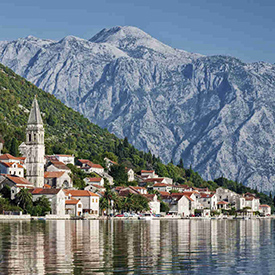
Among European countries, English is the primary native language only in the U.K. and Ireland, but it is widely spoken as a second language elsewhere. In Nordic countries and the Netherlands, a large portion of the population speaks English well, even in smaller towns. In Western Europe, you won’t have much trouble finding English speakers in major towns or popular tourist sites, and most people who work in the tourism industry speak English.
The farther east you go, however, the less English you’ll encounter (though hotel staff still commonly speak English). English speakers can certainly still travel in those countries, it just might be a bit more challenging.
3. What countries in Europe are the cheapest to visit?
In general, Eastern Europe is significantly cheaper than Western Europe. Hungary, Bulgaria, Romania, Poland, and the Czech Republic are especially popular budget travel destinations, but Slovakia, Serbia, Latvia, and Ukraine are also very cheap to visit.
4. Is it safe for women to travel alone to Europe?
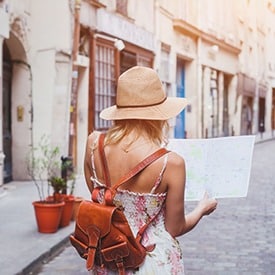
Yes! Women should have no more fear about traveling alone than men should – especially when traveling to places in Europe. Stay in areas that are safe for tourists, don’t flaunt the fact that you’re a tourist, and take standard safety precautions with your money. The one thing that may be more applicable to women than to men is that you shouldn’t go walking alone at night, but that’s standard anywhere.
Don’t carry excess cash, take familiar routes when possible, try to avoid out-of-place clothing, and relax! You’re more likely to blend in instead of sticking out as a tourist if you look like you belong there. It will likely make you more comfortable to research current country-specific travel notes here .
5. What vaccines or medicines should I get before traveling to my destination?
Since each country will have its own regulations and mandates, stay up-to-date through the CDC’s Destination Tool . It allows you to select the countries you are visiting and check real-time updates on the vaccines and medications that you need for your next trip. It is also recommended to consult a physician at least one month before you depart to ensure you are current on all required vaccines and medicines for that particular destination.
If you are traveling to several countries with unique vaccine requirements, confirm the cross-over and discuss your specific travel plans with your doctor. If you’re only in a country for a short duration or you’re only remaining in the touristic area near the coast (for example, while cruising ), certain vaccines may not be necessary.
6. Is it worth getting a Eurail pass?

Europe’s train systems are highly lauded, and many backpackers and other travelers in Europe plan their trips around riding the train from country to country. But many find themselves wondering, “Is a Eurail pass worth it?” Whether a pass is the cheapest option depends on how many train rides you’ll be taking, where you’ll be riding, and how far in advance you could book tickets.
In general, a pass will save money if you’re visiting a lot of different countries and/or taking long train rides, while buying individual tickets is cheaper if you’re booking far in advance or if you’re traveling exclusively in Eastern Europe. But, one of the biggest perks of using a pass is the flexibility: last-minute train tickets are expensive, so if you want to be able to travel with more spontaneity, a pass is the way to go.
7. Do I need to tip in restaurants in Europe?
Restaurants in Europe often note on the menu or bill that a service charge is included, in which case an additional tip is not necessary. Otherwise, tipping is not required but it’s customary to round up the bill. If you do decide to tip, make sure to do it in cash and hand it directly to your server. The major exception to this rule is Scandinavian countries, where tipping is not generally practiced.
8. What is the best way to get around Europe?

Public transportation is well developed throughout most of Europe, and it’s generally easy to get from country to country. Most trains in Europe are comfortable and efficient, and train travel is probably the most popular way to get around, whether you opt for a Eurail pass or individual tickets (see above). For most routes, though, the bus is cheaper than the train, and Eurolines is the main network of international buses in Europe. With budget airlines like Ryanair and EasyJet, flying between countries can be an affordable option, too; just check Google Flights or a site like Kayak to see all the flight options.
9. Where can travelers get off the beaten path in Europe?
In general, Western Europe is much more traveled than Eastern Europe, and capital cities and historical sites are often heavily visited. To get off the beaten path, head to rural areas or to countries in the Balkans or the Former Soviet Union, which see relatively little tourism.
10. Do I need a visa to visit Europe?

To visit countries in the Schengen Area, which currently includes 26 European countries, citizens of the U.S., Canada, Australia, New Zealand, Japan, South Korea, and most of Central and South America do not need a visa for tourist visits of up to 90 days (within any 180-day period). The U.K. is not part of the Schengen Area, and allows citizens of most of the same countries to visit visa-free for up to six months. Check here to verify the current requirements.
11. What is the best time of year to visit Europe?
In general, the best seasons to visit Europe are the spring and fall, particularly in May, June, and September. During these months, prices are lower than during peak season, and the weather is agreeable in most areas.
12. Are there any good Mediterranean cruises?

Absolutely! Apart from the Caribbean, we believe the Mediterranean is the best place to do a cruise. Why? Well it’s simple, you often get to see six different countries in the space of 10-days and many itineraries have only a couple of cruising days. This means you can be out exploring the ports every day and finding the best food and best excursions to do while enjoying such an array of different cultures in such a short time. If you’re wondering what to pack for a cruise , read our full guide.
13. Are there any recent travel restrictions to be aware of?
The European Union (the political union of 27 major European countries) applied a wide range of safety measures regarding the COVID-19 pandemic. These requirements have varied from negative diagnostic tests to not allowing in non-citizens for non-essential travel, essentially locking down the borders.
As of late 2022, Travel restrictions are lifting more and more – France, Finland, Greece, Croatia, Portugal, Denmark, and others are relaxing the vaccination requirements. Iceland and Norway have removed nearly all COVID-19-related travel restrictions.
If you intend to travel in the E.U., you should check the European Commissioner’s Platform for real-time border updates. You can also visit Travel.State.Gov for a traveler’s checklist on documentation requirements and they are a great resource for Country Specific COVID-19 Information .
14. How can I save money while traveling in Europe?

There are lots of ways to save money in Europe. For starters, stick to hostels or try couch-surfing to cut your accommodations costs. Car rentals and taxis can be pricey, so use trains and buses to get around instead, or just walk. Limit eating out, and pick up groceries for some of your meals; look for hostels or vacation rentals that have kitchens where you’ll be able to cook.
Try eating out at lunch instead of dinner too, as many restaurants in Europe have good-value (and filling) lunch specials. Skip the bottled water, and just bring a reusable water bottle that you can keep filling up. And of course, putting a limit on your alcohol consumption will always save money.

Lyric Fergusson

Travel Tested Europe Travel Essentials: The Only Checklist You Need!
You’re planning a European trip and you need a Europe travel essentials checklist with all the travel-tested essentials for traveling to Europe so that you can have an amazing, stress-free trip. Well, good thing you landed exactly in this spot!
We all know planning a trip to Europe is a big deal and usually, it’s a bucket list travel goal getting checked off. The last thing anyone enjoys is the hassle of not having something they need!
The good news is I’ve traveled to Europe hundreds of times and along the way, I’ve made my fair share of Europe travel mistakes. But, they were all learning experiences! (Can you tell I’m a teacher?!)
So, I’ve put together everything I’ve learned in this ultimate guide of essentials for European travel so that you’re 10 steps ahead of the game before you even arrive at the airport.
Travel-Tested Europe Travel Essentials: The Only Checklist You Need!
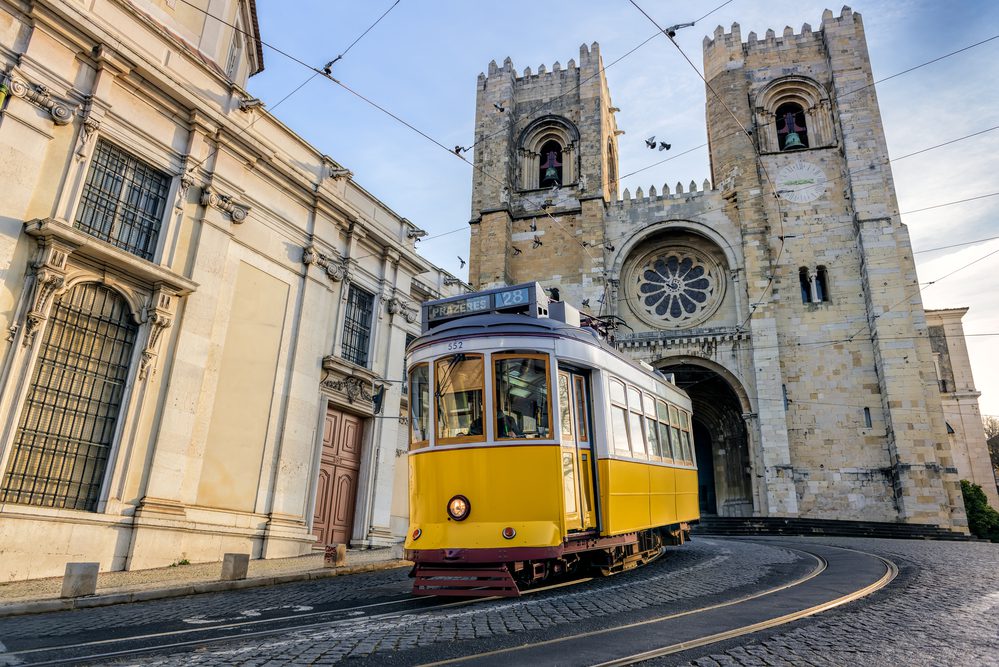
You can fill countless suitcases ( spoiler: don’t do this) with whatever and however much you want but without the right things for your European adventure, a potential headache can steal all the fun from seeing the Eiffel Tower or Rome’s Colosseum.
So, let’s skip the headache and build your European travel checklist the right way!
Essentials for Traveling to Europe: The Fundamentals
When planning a trip to Europe, there are European travel necessities that fall into a few categories. Some are absolute musts while others are more personal or for comfort.
Let’s start with the fundamentals. After all, it doesn’t matter if you’ve packed the perfect outfits if you can’t get past airport security.
Whether you’re heading to Italy , Iceland , or Spain don’t leave home without using this guide as your Europe packing list!
Obvious, but a total deal breaker for international flights if there’s an issue with yours. Be sure it’s in good condition with no visible damage. Also, check that it has at least 2 pages with no stamps and 6+ months until its expiration date. I always keep my passport and important documents in this protective cover , but also for my sanity so I always know where they are! This passport case is great if there are multiple passports to store.
Driver’s License
If you’re renting a car, you will need to show this to pick up your vehicle. But even if you’re not, it’s smart to have another official form of identification with your photo on it in case something happens to your passport.
Maps for Driving & Getting Around
If you’re driving in Europe, download Google Maps for the area(s) where you’ll be driving before leaving home. From the Google Maps app, click on your name or initial in the top right corner. Select “Offline Maps.” Then, click on “Select Your Own Map” at the top. Highlight the area(s) where you need a map and download it. When you arrive at your European destination, you’ll be able to navigate in the car even without an internet connection. Similarly, the Maps.me app allows you to download maps to use offline. These maps can be especially great for when you’re out walking in a city because they show local shops, restaurants, walking paths, and more.
Using your debit card at a local ATM once you arrive is the savviest and most convenient way to get local currency at the best possible exchange rate. Also, debit cards typically have a Visa or MasterCard logo on them and require a PIN. In some cases, a purchase you need or want to make will require a card with a PIN like getting gas in a remote part of Iceland or buying entry tickets to a castle in Germany. ProTip: The Charles Schwab debit card refunds 100% of any ATM or withdrawal fees no matter where you are in the world. Don’t have an account? It’s free to set up. Plus, you can deposit a small amount into your newly created “travel account” to use for your trip. If your wallet gets stolen or you encounter any fraud, only this account with a small amount of money is at risk instead of your main bank account.
Travel Rewards Credit Card (with no foreign exchange fees)
For 95% (if not all) of your purchases in Europe from restaurants to shops, hotels, top sights, and museums can and should be made with a credit card. I recommend (and use myself!) a travel rewards credit card like this for every purchase possible for fraud protection (i.e. when that bowl you shipped from Tuscany never arrives) and for the best possible purchase exchange rate with no fee. ProTip: When making credit card purchases in Europe, you’ll be asked if you want to pay in Euros or U.S. dollars. Always choose Euros. The credit card processor is secretly charging you a convenience fee that’s baked into that seemingly helpful U.S. dollar conversion.
International Driver’s License
If you are renting a car in Europe, some countries like Italy, Spain, Greece, Germany, and others require this document. The confusing part is car rental companies will let you rent your vehicle even without this document. You only discover that you have a problem (and possibly a hefty fine) should you be pulled over by local police. Apply through AAA , either at their nearest branch or by mail. It costs $20 + tax. You’ll also need 2 passport photos which they can take for you at the branch for a small added fee. The permit is good for a year and can potentially save you a lot of money if you get caught without it.
Travel Insurance
Important, especially if you don’t have a travel rewards credit card that offers at least some basic protections. But whether something happens before your trip and you need to cancel or you fall on some uneven cobblestone and break a wrist, you want to make sure you’re ok, as is the travel investment you made. Plus, most multi-day tours require that you show proof of travel insurance .
Photos/Copies of Important Documents & Travel Bookings
Take photos of your passport ( a must! ), driver’s license, credit cards, travel reservation confirmations, etc, and store them in a cloud-based place like Google Drive or Dropbox. If you lose anything, you can access the photo from any device with an internet connection. You can also print copies of flight, hotel room reservation(s), and activity bookings if it adds peace of mind.
And even though the things above will help you navigate all the logistics of international travel, don’t leave home without the Europe travel essentials you personally need for an incident-free trip.
Prescription Medications
Contact lenses + at least 1 extra pair, feminine hygiene products.
Ladies, whether you use this , this , these , or something else, be sure to take the personal items you need to be comfortable.
First Aid Kit
This does not need to be overly extensive. I typically pack tablets for headaches, stomach troubles, a cold, and in case of an allergy, some Benedryl. I also like to carry a few throat drops with me, even if just for a dry mouth or throat, and a couple of band-aids for cuts or a blister. You’ll find pharmacies everywhere you go in Europe with everything you’d find at your pharmacy in North America. The idea here is just to pack a few of these things to hold you over should you need to get to a pharmacy in Europe. For reference, my first aid kit for European travel fits into a small plastic sandwich baggie.

Must-Have Travel Europe Essentials
The next part of the list covers Europe travel essentials that are important to have whether you’re road-tripping in Ireland or sightseeing in Budapest.
These important travel items keep you safe, and connected and help make your travel days to, in, and from Europe smooth and hassle-free.
Portable Power Bank
Keep your cell phone charged and ready to go whether it’s to take photos or to use a navigation app as you explore a new European city. And, even though most do, don’t assume all airplanes have a charging port for your phone. This is especially true on inter-continental flights where shorter-haul planes are used to go from one European country to another. (It’s not a good feeling to arrive at your destination airport with a dead phone!) I bring this portable charger with me on every Europe trip. Fully charged, it can refill my phone’s battery dozens of times before needing to be recharged and it doesn’t take up much space at all in my bag.
Plug Adapter
You’ll need to have the right plug adapter(s) to plug your devices into European outlets. I have an older version of this plug adapter set that I have used to travel extensively throughout Europe and have never had a problem. The mini power strip is perfect for charging multiple devices at once. ProTip: If you’re going to multiple European countries, check the plug type for different countries. They aren’t all the same. Or pack a reliable universal travel adapter .
Luggage Trackers
If you’re checking a bag for your trip to Europe, Apple Airtags are great for keeping track of your luggage and can even help you locate your bag should the airline lose it. You need to have an iPhone to track the airtag. If you don’t have an apple device, try the Samsung SmartTag or Tile Mate.
Wire/Gadget Storage
You could choose a traditional wire organizer to manage cables, your portable battery, and other gadgets. They are extremely useful for storage and sanity! I also love these mesh packing squares . I’ve had the same set for years and they’re so versatile! I can use them for my cords, plug adapters, and portable charger. But they’re also great for just about any small, loose objects you need to pack. They keep everything together so you can find whatever you’re looking for quickly and without unpacking half your bag to find it!
SIM or eSIM Card
Staying connected is one of the most important travel necessities for Europe! European restaurants, cafes, shops, and hotels tend to have decent to good WiFi. However, free public Wifi isn’t the safest or most reliable way to connect your device to the internet. Not to mention, you probably still want a connected device even when you’re not in one of these places. For U.S. travelers, your phone’s wireless provider likely offers a travel pass. But these are typically very expensive (i.e. $10 a day!) and come with very limited amounts of data. Put another way, this isn’t a great option for staying connected while in Europe. The better option is to purchase a SIM card when you arrive at your destination. Most airports will have them available for sale, as will shops in most major cities. Even better is to buy an eSIM before you leave so it’s ready to go when you arrive. An eSIM comes with the added advantage of not needing to buy and install a physical card once you arrive. Either way, SIMs and eSIMs cost less and can be purchased in different data amounts depending on how much you’ll need. I use Holafly to purchase eSIMs when I travel. If you use code, THEGLOBETROTTINGTEACHER, you’ll get 5% off your purchase.
Luggage Locks
These durable locks are TSA-compatible so you can lock your checked bags. If they’re inspected, the TSA agent can unlock it and the lock will leave a red indicator letting you know your bag was inspected. Beyond that, these handy locks are perfect for backpacks and a variety of other bags whether you want added security in your hotel or you’ve stowed your bag in a luggage rack on an overnight European train.
Secure Money Storage
From the airport to full days of European strolling and sightseeing, you want something to keep your money and credit cards safe. Whether it’s a moneybelt , a neck wallet , an anti-theft bag , or a scarf with a hidden pocket , take some precautions to deter pickpockets. From Barcelona to Paris , would-be thieves are more opportunistic than anything. Be alert in touristy areas and on public transportation. (Direct eye contact works wonders to let someone know you’re paying attention.) Add extra layers of security to avoid looking like a target and it’s unlikely you’ll have any problems. ProTip: Only take 1-2 credit/debit cards and a little cash with you when you head out for a day of sightseeing. Extra money and credit cards, as well as your passport, will be safest locked in the hotel safe.
Travel Day Bag
You want a small bag or day pack that you can use to store your belongings and comfortably walk and sightsee. This has been my go-to daypack whether I’m hiking along the Slea Drive in Ireland or standing in awe as I stare at the Mosque-Cathedral in southern Spain . It’s compact and holds a lot more than it seems it would. I typically pack this inside my carry-on, which is also convenient later if I need an extra bag for souvenirs. For something a bit more fashion-minded, this messenger bag or this crossbody clutch are both stylish and functional. Plus, they both come with theft-protection.
Reusable Water Bottle
Most European countries have clean, drinkable tap water. While you should always check the countries you’re planning to visit, rest assured you can safely refill your water bottle in most places. I’ve used the fountains in Italian cities and while hiking in the Cinque Terre, as well as filled up while driving Iceland’s Diamond Circle. So, save money and reduce plastic waste with a reusable water bottle !
Flight Creature Comforts (a.k.a. Things to Keep you Comfortable!)
A long flight across the Atlantic Ocean can be uncomfortable depending on what type of flyer you are and where you’re seated on the plane. But the good news is that small comforts go a long way! You want to arrive as rested as possible so that on your first day in Europe you can last the full day and adjust to the time zone. Ear plugs, an eye mask , cozy warm travel socks , and a neck pillow can all help you sleep on long-haul flights. I also always have my travel-sized toothbrush with me so that I refresh in the morning before we land.
Entertainment
Whether you have a Kindle to read or you want to downloaded audiobooks, podcasts, music, or your favorite shows on your phone or laptop, plan to do this in advance. Anything that needs to be downloaded should be done before you leave home so you don’t use up data or rely on slow hotel wifi once you arrive in Europe. With these things set up on your electronic devices, you’ll be ready for that long train ride or just lazing away an afternoon at a cafe in Paris .
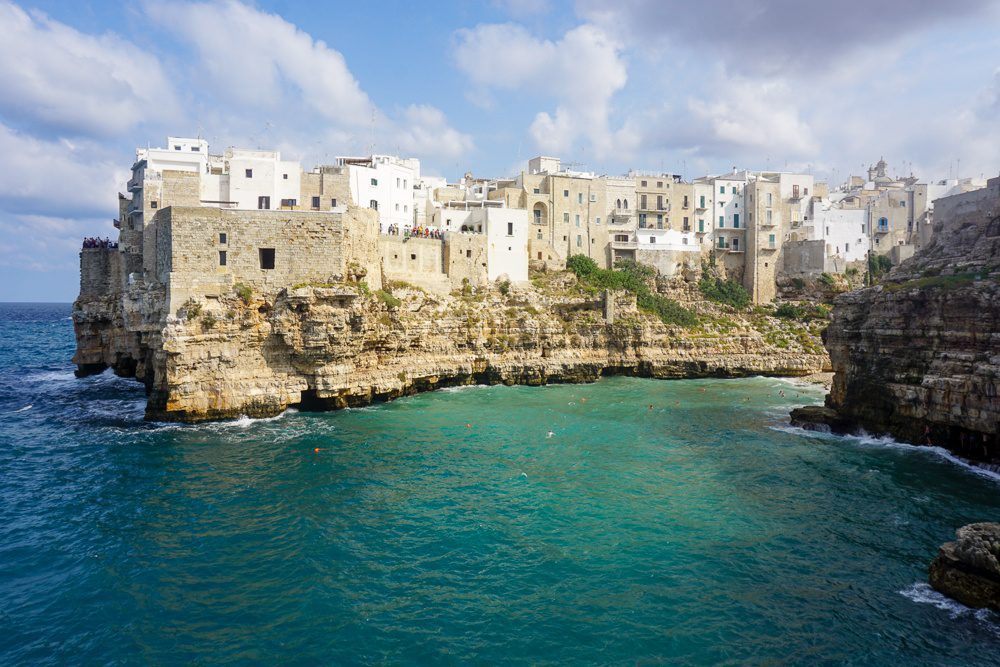
Europe Travel Packing: How to Pack for Europe
One of the essentials when traveling in Europe is to pack light.
If you’re like most people, you probably have at least a couple of European cities or areas on your travel itinerary. Dragging and lifting big, heavy suitcases from airports to hotels onto trains and along sidewalks is a stressful hassle that’s just not worth your energy.
So, let’s cut to the chase. You need a few important items to pack lightly, a sturdy piece of luggage, a carry-on bag, and packing cubes.
Rolling Suitcase
This is the rolling suitcase I’ve used for nearly all my trips to Europe over the past several years. And let me tell you, I’ve put this bag through the wringer! It’s proved its durability by being checked at countless airports and rolled through train stations all over Europe, as well as hauled in and out of hotels, metros, and more. Put any doubts aside about whether this piece of luggage can hold everything you’d need for a 2-week trip to Europe. I’ve done it numerous times and even stayed for up to 3 weeks without really needing to do a big batch of laundry. I’ve used a couple of other bags, too, if I’m taking a shorter trip. These honorable mentions go to this 19″ carry-on roller or this backpack which I’ve used for more outdoorsy European adventures.
Packing Cubes
These are the packing cubes that quite honestly I couldn’t live without. They are what makes the above suitcase possible. Depending on how I want to pack, I use 3-4 of these packing cubes to hold all my clothes. The magic comes from the compression. Once you’ve rolled everything inside and zipped the cube, the 2nd zipper compresses the cube down to half its size. If necessary, you can smooth out any lumps by pressing on the cube to even things out. ProTip: Think about how you’ll manage dirty clothes. You could bring an extra packing cube or a dirty laundry bag. You could also shift clothes around as you travel, moving dirty clothes to a single packing cube and clean clothes into all the others.
Carry-on Bag
Without hesitation, this carry-on travel backpack has been my go-to for years. I absolutely love it. This bag has the perfect combination of smart storage compartments, style, and comfort. In fact, this is the most comfortable expandable backpack I’ve ever worn. I store things like my laptop, important travel documents, a change of clothes, and a 1-quart toiletry plastic bag with some necessities for the flight. Fully expanded, it can even hold a few days’ worth of clothes or those extra souvenirs you want to bring back home. ProTip: I like to pack a few extra plastic bags in case something leaks and for things like wet clothes.
Hanging Toiletry Bag
Not only does a hanging toiletry bag keep everything organized and easily repackable for European city-hopping, but it also allows you to keep things like toothbrushes and contact lens cases off the limited counter space around hotel sinks. You can still have all your toiletries hanging in the bathroom when you need them without worrying about knocking them off the sink.
Mini Travel Bottles
No need to take up space in your luggage with full-sized toiletries or create more waste with travel-sized (3.4 oz.) toiletries. These mini travel bottles are all TSA compliant, come in different sizes, and are easy to fill and dispense. Best of all, they’ve never leaked into my bag!
Clothes for Your Europe Travel Checklist
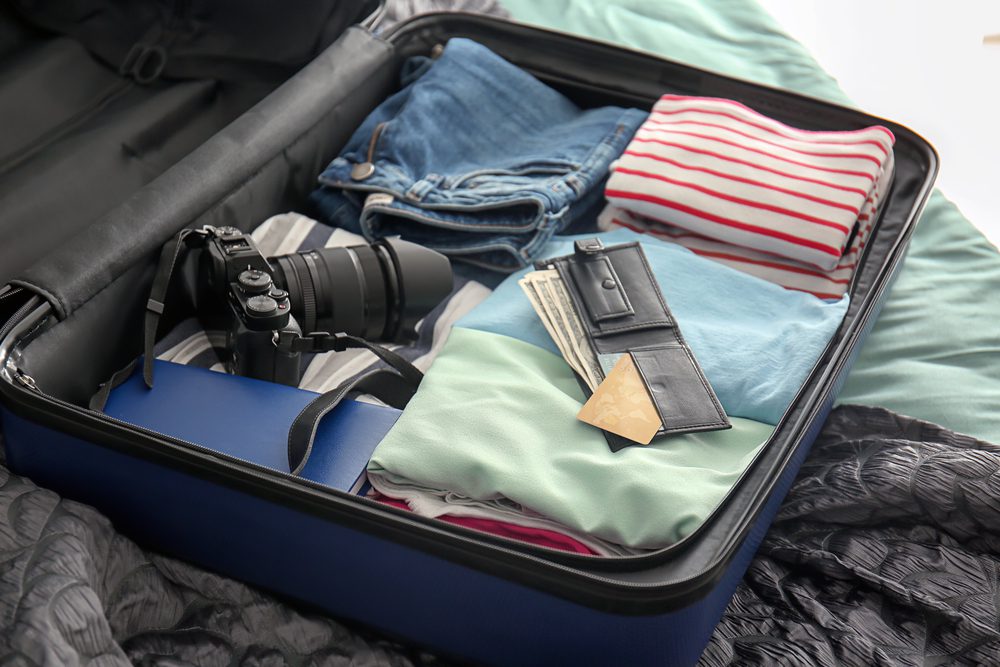
This section is a bit subjective because the clothes you pack will be dependent on the time of year you travel, what you’ll be doing, and your own style. But what to pack for a Europe trip is one of the most common questions I get, so I’ve compiled my best tips and recommendations below.
The most important thing is not to overpack. I know, easier said than done!
One way to avoid this is to plan your outfits, or if that is too difficult, pack clothes in a similar color palette. Pack neutral colors than can be worn with many different things. By doing this, you’ll inevitably have numerous pairings because most of the pieces will go together.
As you begin to pack, lay everything out first. You’ll likely be able to eliminate things that are duplicates (no, you do not need 3 black tops.) or items not in line with the majority color palette of the rest.
There are cliche items to avoid in European cities like flip-flops, workout clothes, or anything too casual like sweatpants or sports jerseys, shorts, super dressy clothing, or clothes meant for hiking and other outdoor activities. Not only will avoiding these items in big cities be more fashionable, but they also help you blend in more. When you blend in more, you’re less of a target for a potential scammer or pickpocket.
Think more along the lines of classic pieces in neutral, soothing, or dark colors. For example, navy, black, beiges, white, and soft pastels. Also, be mindful of clothing that is too revealing, especially if you’re planning to visit cathedrals or other religious sites like in Rome or Seville .
The shoes you pack are also (so!) important.
First, pack at most 3 pairs of shoes including the ones you wear on the flight. Think smart casual and comfortable when choosing which to pack to find a balance between fashion-friendly and comfortable. You’ll likely be walking a lot and oftentimes on cobblestones.
And ladies, unless you have a specific formal event planned, you won’t need high heels. Even if you’re thinking they would be nice to wear for dinner, high heels are near impossible on cobblestone streets and take up valuable suitcase space! Instead, opt for a boot with a chunkier heel if you feel you need something dressy.
The items below are meant to be ideas to help you see what’s typically in my suitcase.
Except for the hottest days of the European summer, jeans always work. They can be dressed up or down and worn with every top you pack. Everyone has a favorite pair of jeans they love so I want to give a shout-out to mine. These Duer Performance jeans are perfect for travel. They have a good amount of stretch and are very durable. What I love is they never seem to stretch out after multiple wears and they’re great for both city sightseeing and hiking. No matter which jeans you pack, go for a pair of dark-wash jeans. They’ll look cleaner for longer! Leggings are timeless, comfortable, take up little space in your luggage, and can be part of a smart casual or even dressier look. In other words, they’re perfect for travel! Other pants I’ve included in my suitcase and are versatile enough for a range of temperatures have been these Duer No Sweat Everyday Pants , these 7/8 joggers , and Eddie Bauer Departure pants . For hot summer travel days, go with wide-leg linen blend pants and other breathable fabrics instead of shorts.
No matter what the season is I like to bring tops in different sleeve lengths that can be worn on their own or under a layer like a cardigan or a blazer. For summer European sightseeing, short sleeves that cover the shoulders will be ok for most Cathedrals. Lightweight and loose-fit tops will be the coolest for walking around a European city. Generally speaking, I pack these 3/4 sleeve shirts or these shirts with long sleeves. Lightweight sweaters are perfect for spring and fall and can mix and match with many different types of bottoms. They can be dressed up with a scarf and boots or worn with jeans and sneakers when you want to be more casual. Classic fit tees always work. And of course, a long flowy top pairs perfectly with leggings.
A top or a bottom layer can make all the difference for both style and comfort! For winter travel in central and southern Europe, a thin, effective base layer becomes your secret weapon. It keeps you warm while you’re walking without adding bulk to your overall look. In northern Europe, like Stockholm or Finnish Lapland , a baselayer top and bottom are essential! For shoulder seasons, a casual blazer that can pair with nearly all of your outfits is a win-win! Cardigans, either lightweight , open front , or something chunkier , go with most types of tops and bottoms and are great for added warmth even for a breezy evening by the sea. A lightweight jacket can come in handy for those cooler spring and fall nights. It’s an added bonus if it has a hood in case you get some rainy days.
Accessories
A scarf is an absolute Europe travel essential! It can add to your overall look and even provide warmth when needed. I always have 1 (or 2) with me when I travel to Europe. Longer scarves create that perfect fall or transition season look. These square scarves are so fashionable and can double as a headband! If you’re looking for something that can double as a scarf and a wrap, these pashmina scarves are perfect. ProTip: As a general rule of thumb, it’s best to wear little or no jewelry when traveling to avoid being a target for potential theft.
Comfortable Shoes!
Perhaps the most important Europe packing decision you’ll make is the shoes you’ll bring. European travel inevitably comes with a lot of walking which will become difficult or even painful with uncomfortable and unsupportive shoes. A Chelsea-style boot works in every European city and can be worn day and night. (In Italy, I think it must be obligatory for every Italian woman to have a pair in black!) These winter boots are stylish and warm in the colder months. Allbirds are some of the most comfortable sneakers I’ve ever worn. Vionic shoes like these and these are great, too, and come with extra arch support. For summer European travel, I never leave home without these sandals . They’ve been an excellent investment and have saved my feet compared to other non-supportive summer shoes. Bottom line – Pack comfortable walking shoes for both day and night. Your feet will thank you!
Europe Travel Essentials FAQs

Is it better to travel with a backpack or suitcase in Europe?
There are pros and cons to both. Personally, I prefer a rolling suitcase and have never found it to be a problem even when traveling from city to city. Yes, there are cobblestones and sometimes no elevators when you need them. However, I’d rather lift my suitcase for a moment just to get up or down some stairs than always carry it on my back.
What size suitcase is best for a 2-week trip to Europe?
I’ve typically traveled with a 24″ suitcase for 2-3 weeks in Europe with the help of my packing cubes. If you need a bit more space, look at a 26″ or a 28″ but I wouldn’t go any bigger than that. Otherwise, it can become a real chore to move from place to place.
Is it better to fold or roll clothes in a suitcase?
Without question, it’s better to roll clothes in a suitcase. It saves space and protects against wrinkles. When rolled clothes are packed within a packing cube, it’s often possible to have 2 layers of rolled clothing inside.
How much should I pack for a 2-week trip to Europe?
In general, you’ll want to pack 3-4 bottoms and 5-6 tops. Dresses are also helpful (but not required) because they are complete outfits that can be dressed up or down. I’d bring 1-2 dresses if they match your style. For shoes, 2-3 pairs are plenty. Above all, comfortable shoes are absolute Europe travel essentials!
Also bring a scarf to use as an accessory, to cover up in conservative places, or for a little warmth. And unless you’re traveling in the absolute heat of summer, pack a blazer or light jacket (jean jacket, trench, etc.), as well as 2 sweaters or items for layering over a lighter top. Be sure the top layers go with the majority, if not all, of your clothes.
If your trip is in the winter, be sure to have a packable winter coat , a warm hat, waterproof boots , and layers. One of my hacks is to pack a couple of base layer tops so I can get added warmth without adding too much bulk to my bag or body!
Essentials for European Travel: Bottom Line

Your travel packing list for Europe needs to include a combination of essential items, gear, gadgets, and clothes. If you take the time to get yourself set up and packed using these packing tips before your trip to Europe, you’ll have done everything you could to ensure a hassle-free, comfortable, and amazing trip!
So, what’s on your checklist for European travel?
Like this post? Please share it using the buttons in this guide!
Related Posts

London Trip for the Cost of Dinner and a Show

A Cheat Sheet for Paris First-Timers
Leave a comment cancel reply.
Your email address will not be published. Required fields are marked *
Save my name, email, and website in this browser for the next time I comment.
This site uses Akismet to reduce spam. Learn how your comment data is processed .
Privacy Overview

IMAGES
VIDEO
COMMENTS
Europe Winter Travel Essentials. You'll need to bring a few things with you on your Europe winter trip! Oh, and don't forget to prepare for the long haul flight (when we flew back from Prague last year, it took a grueling 19 hours).
In December, with temperatures in the mid-50s and rainfall at nearly 4.7 inches during the month, you'll need to include some rain boots on your winter packing list for Europe with this destination. In January, temperatures drop ever so slightly to the low 50s and rainfall takes a good fall down to 3.7 inches for the month.
25 Wonderful Destinations for Winter in Europe (Sun, Snow, or Christmas!) This winter packing list for Europe is designed for a trip that focuses mostly on cities and villages-think Christmas markets, snow-capped villages, and cold-but-surprisingly-empty-of-tourists cities like Paris and Venice.
The essential items not to forget when packing for a winter excursion in Europe include a warm, insulated jacket, thermal layers, waterproof boots, a hat, gloves, a scarf, and moisturizing skincare products to combat the dry, cold air. Additionally, don't forget travel adapters for your electronics and a reliable bag to safeguard your travel ...
Non-Clothing Travel Essentials for Your Europe Packing List. When my Youtube subscribers and Instagram followers ask me for packing tips, I find that this is the section of their Europe packing list that they're most likely to struggle with: non-clothing travel essentials.
How to Layer for Cold Weather. My biggest piece of advice when traveling to Europe in the winter (or traveling anywhere that's cold, quite frankly) is to wear layers. Layers give you options: you can be bundled up outdoors one minute, and chilling in a turtleneck indoors the next. The key to winter layering involves 3 main parts—a base ...
When packing for Europe in winter, take quick-drying travel pants that will keep you toasty and dry, as well as long-sleeve tops and a sweater or cardigan. The J. Crew Halle sweater, which is featured above and made of 100% merino wool is a packable item that will provide warmth, without overheating the body.
Months ›› Typically, the winter season in Wester Europe lasts from about December to end of February. This is the same for Eastern Europe. Temperature ›› Temperatures range from 32°F (0°C) to 41°F (5°C). Although, Eastern European countries like Hungary, Czech Republic, Slovakia, and Poland have a very similar temperature range ...
Non-Clothing Travel Essentials For Your Europe Packing List. ... If you are heading to Europe this winter, this winter packing list for Europe is the ultimate guide on winter Europe travel essentials to make sure you don't forget a thing! We hope our top packing tips for European winter vacations will help you plan the most wonderful chilly ...
Travel Essentials for Europe in Winter: Basics. Let's start with the basics. No matter where you travel, you'll need your undergarments, pajamas, etc. So let's pack it up: Women's Basics Packing List Europe in Winter: 2 bras. 7 pairs of underwear. 7 pairs of socks. Not just any socks. Thick, wool socks. Thin socks won't do much to ...
The Essential Documents To Pack. What to Wear in Europe - Western Rise Men's Travel Clothing. Passport — This is obvious, but you won't make it far without a passport. Credit Cards — We use several travel credit cards offering purchase protection, rewards, and no foreign transaction fees.
1-2 thermal set base layer set. A thermal set is essential in your Europe winter packing list if you visit colder countries. 3-4 long-sleeved shirts. 1 pair of waterproof pants. 2-3 pairs of jeans or long pants. Consider packinga dressier pair of casual trousers or chinos. 1 waterproof boots.
Europe Travel Essentials: The ULTIMATE 2024 List - Emily Embarks. Whether you're visiting Paris in the summer or the Swiss Alps in the winter, it's always helpful to have a guide to assist you with packing. I know if I didn't use a Europe travel essentials list, I would probably forget everything from my passport to my suitcase.
A waterproof winter jacket is essential to include on your winter packing list for Europe. Choose one that's breathable and filled with synthetic down if possible. This lightweight puffer coat compresses well for packing, and the Helly-Hansen Men's Dubliner is also an excellent choice. Check price on Amazon.
Hand Sanitizer (very important during this COVID time) Wet Wipes. Nail Cutter. Travel Medical Kit (pain killers, band airs, etc.) For Men: Shaver. For Women: Make-up, menstrual cup, and other lotion if you need. That is it for What to Pack for Europe in Winter.
2. Thermal underwear. A key part to any Europe packing list for winter is layers. The more warm shirts and pants you have on, the better. Insulation is the very best way to escape the cold, so packing a set of thermal underwear is a must. Be sure to pack at least 2 pairs of thermal, long sleeve vests and long johns.
Always Pack a Power Bank. Low temperatures affect battery life. Which is why you should add a reliable power bank to your packing list for Europe in winter. You will need a pocket size USB power bank that operates in low temperatures. If you're carrying extras batteries, remember to keep them in your pockets.
Jeans: A pair of dark jeans are essential for traveling in Europe. They look great during the day and they can be dressed up for nighttime. Additionally, jeans can go weeks without needing to be washed. ... Winter travel in Europe poses a few extra packing challenges to consider so we've written a few handy guides to help guide you on your way.
So, if you plan to escape to cold destinations, this Europe packing list for winter is just what you're looking for. Tip 1: Check the weather forecast at your destination. That's because not all European countries get as cold as you might think. For example, Spain, Malta, and France's southern parts are warm, while Norway, Germany, and ...
What to Pack for Europe - 28 Essentials. 1. Neck Wallet. Europe is notorious for its pickpockets, especially in cities like Paris, Rome, London, Barcelona, Amsterdam, and Dublin. An RFID-blocking neck wallet allows you to easily conceal your cash, credit cards, phone, eyeglasses, and hotel keys while not screaming, "I'm a tourist!".
We recommend Europ Assistance and vti.travel. Europe Travel Packing List. As a summary, here is our ultimate travel packing list for Europe: Suitcase/travel backpack. 3-4 t-shirts. 2-3 blouses or shirts. 1 dress/elegant shirt. 1 cardigan/sweater. 1 lightweight jacket. 1 pair of dark wash jeans. 1 pair of trousers/capris. 1 pair of shorts. 1-2 ...
Europe Travel Packing: How to Pack for Europe. One of the essentials when traveling in Europe is to pack light. If you're like most people, you probably have at least a couple of European cities or areas on your travel itinerary. Dragging and lifting big, heavy suitcases from airports to hotels onto trains and along sidewalks is a stressful ...